design charge for voiceover screencast video per minute
How Much Does Animation Cost?

January 15, 2021 /
Animation can be a truly magical way to get your message across. It is the perfect way to engage your audience and present information in a clear and entertaining way. There are so many different styles of animation that you can tap into, from infographics and character animation to explainer videos and telling stories with exciting, out-of-this-world characters and visuals.
But how much does animation cost? If you've been sending out requests for quotes for animation, you've likely received a wide range of prices. So how do you know what you should expect to pay to receive a great looking final video? The bottom line is that this is a tricky question to answer. There are many factors involved that can impact the cost of animation. In this post, we'll walk you through some of the key factors that can influence animated video production cost and show you some examples in various price ranges so you can know what to expect.
Creative Humans makes it easy to find and hire top video production studios and freelancers. Create a Free Account to get started.
Animation Costs
With so many factors involved that can impact the final price, it's not easy to nail down an average cost for animation. Two videos of the same length could have wildly different prices depending on the style of animation being used, how fluid and refined the animation looks, and the level of expertise of the artist working on the spot. That said, here are some basic price ranges you can expect for a one-minute animated video:
- $3,000-$7,000 Per Minute. Videos in this price range would be considered low budget. You should expect to get some very simple 2D animation. Animation at this level is very basic, the fluidity of the movements are often a little jerky looking, and the characters unrefined. The artist may use stock elements to keep costs low. Be aware that, for projects with smaller budgets, the studio may not offer services like scripting, voice over and music. Those might be considered add on costs.
- $10,000-$20,000 Per Minute. This price range is the minimum for a professionally produced animated video. At this rate, the animation studio will deliver scripting, voice over, art direction, character animation, advanced transitions, and more.
- $20,000-$50,000 Per Minute. In this range, animation studios will deliver high quality videos that can incorporate more advanced animation effects. This is also the price range where 3D animation begins to become feasible.
- $50,000-$100,000+ Per Minute. Around $50,000 is when you can begin to expect broadcast quality production values. These projects hold nothing back, with the studios often providing full animation services from concept development and scripting to 2D/3D animation, advanced lighting effects, and more.
Scroll down to see some visual examples of animated videos in various price ranges from Creative Humans!

Key Factors Influencing Animation Cost
As we mentioned, there are many factors involved that influence the final cost of your animation project. Let's take a look:
1. Animation Style
The style of animation is another important consideration when determining cost. The more time consuming and refined the animation, the more expensive it is going to cost you. Here's what you need to know:
- 2D Animation . 2D animation is generally going to be the most affordable style of animation offered. It's less time consuming than stop motion or 3D animation. Within 2D animation, typography and graphic vector style is more affordable, while shaded or character hand-inked animation is more costly.
- Illustration. I llustration is a visual explanation of a text. The designer will take your script and interpretation of a text in his/her vision. An illustrator often produces the imagery themselves as opposed to a graphic designer who will use other tools such as images, graphic forms, and words to relay her message to the viewer.
- Motion Graphics (Typography and Animated Logos). This style can be both 2D and 3D, and you'll see examples everywhere in commercials, explainer videos, sporting events, the news and other TV productions. Character animation is generally outside the scope of motion graphics, but many of the core animation principles apply to motion graphics too.
- Infographics. Infographics are graphic visual representations of information, data, or knowledge intended to present information quickly and clearly. This style is often used to help break down big data and make it more easily understood. Financial institutions and government agencies are often a fan of this style of work.
- Stop Motion Animation (Claymation, Cutouts, Action Figures, Puppets) . Stop motion is a fun and playful way to tell your story. It involves the artist taking physical items, like toys for example, and moving them and photographing them frame by frame. The costs will vary based upon what is being animated. For instance, if the item needs to be built from scratch out of clay, that will cost more than if the item is pre-built, like a toy race car or a cutout of an image. The price to produce a stop motion video can range from anywhere from 15k-150k. See examples here.
- 3D Animation . 3D animation is a very impressive style of animation. The good news is that as the technology behind the animation has been improving, the costs have been dropping. Simple product renderings are less expensive, while character models and Disney/Pixar style 3D animation run on the high end. The price to produce an animated 3D video can range from anywhere from 10k-300k. See examples here.
2. Services Requested
Many professional animation studios will offer services beyond simply animating your video. These may include:
- Concepting & Strategy . Do you have an idea for your video already, or will you be relying on the studio to produce the concept and strategy for your project?
- Scripting & Storyboarding . Do you have a script, or does it need to be written? If not, that can add to the cost of your video. Similarly, storyboarding can be a resource-intensive task requiring the involvement of a creative director, concept artist, and illustrators.
- Voice Over . Professional voice talent and recording will add to your video cost. Of course, you always want to ensure your videos will feature high quality audio.
- Music & Sound Effects. Creating custom soundtracks or purchasing rights to music can be costly. If you're hoping to save money, ask your studio about your stock music and sound effect options.
Depending on where you are in the production process, you may or may not need some of these services. Of course, the more services requested from the animation studio, the greater the ultimate cost of your video.
3. Video Length & Timeline
The length of your video also will greatly impact the price. Keep in mind that most animation projects are priced by the second. The longer your video, the more expensive it will become. The shorter it is, the less expensive it will be.
In addition to the length of your video, another factor that can impact animation cost is your timeline or expected deadline. The tighter your requested turnaround, the more expensive your video can become—especially if you need the studio to rush the project faster than their typical turnaround time.
4. Revisions
While most studios will have some revisions priced into the project, change requests beyond key stages in your project will likely add to your cost:
- Concepting, Scripting & Audio . Requesting changes after scripting and voice over work has been completed will increase the cost of your video, as voice over talent will need to be brought back to perform the new script.
- Animatics, Styleframes & Characters . Likewise, requesting changes after styleframes and character models have been finalized will increase your cost.
- Production . At this stage, all concepting and styling should be finalized. The animation studio will be actively illustrating your assets. Asset change requests at this stage can increase the cost of your video prior to animation.
The further along you are in the production process when you request changes, the more costly your revisions can be. If possible, ensure you are happy with a script before moving forward with voiceover. The same goes for character concepts and styleframes. Once production begins, it will be more costly for you to make changes.
Examples from Creative Humans
To help you visualize animation cost in various price ranges, here are some examples from vetted studios within the Creative Humans network:
$9,000 - $12,000
$10,000 - $15,000
$10,000 - $15,000
$12,000 - $16,000
$25,000 - $30,000
$32,000 - $51,000
$30,000 - $50,000
$30,000 - $50,000
$60,000 - $72,000
$75,000 - $85,000
$185,000 - $205,000
Let's Get Started
We hope this animation cost guide has helped you define your budget for your project. Whether you have an idea or need help concepting your animated video, you can find the right talent at Creative Humans. We've brought the world's best animation studios and freelancers together in one place.
Creative Humans makes it easy to find and hire top video production studios and freelancers. Create a Free Account to get started.
SEE MORE OF OUR BLOG POSTS

TikTok Video Advertising Tips
Social media videos are a great way to reach broader audiences, build brand awareness, and take advantage of social trends. When it comes to choosing a social media platform to advertise on, TikTok is worth considering, due to its incredibly large active user base and focus on video content.
But advertising on TikTok isn't the same as advertising on other platforms like Facebook or LinkedIn. TikTok videos can be anywhere from 15 to 60 seconds long, meaning it's important to make every second count. You don't want users to scroll right past your video before listening to what you have to say. To help you create a successful campaign, here are a few important TikTok video advertising tips to keep in mind.
Creative Humans makes it easy to find and hire top video production studios and freelancers. Browse the Directory , or Post a Job to get started.
Why TikTok?
Why should your brand dedicate time and resources to advertising on TikTok? With 800+ million active monthly users, TikTok is one of the largest social platforms in the world, beating out other apps like Snapchat, Twitter, and LinkedIn.
- Users in over 150 countries worldwide
- TikTok was downloaded over 5 billion times in 2019
- Over 37 million users in the US in 2019
- Dominated by Gen-Z, with 5% of users in the US being under 29
TikTok's large user base and worldwide presence make it a great platform for brands trying to build their audiences—especially for brands with younger audiences.
6 Tips for Advertising on TikTok
Creating a video ad that creates new fans, generates leads, and appeals to your target audience is much easier said than done. TikTok ads need to be concise and relevant to your audience. To make an ad that stands out and generates results, keep these six tips in mind.
Keep it Short
Social media users are constantly bombarded with ads from brands—many of which they are not interested in. The last thing users want to see is another overly long ad from a brand they don't know or care for.
TikTok videos can be 60 seconds long at most, meaning keeping it short isn't much of an option. Still, even with this time allotment, it's often better to aim for 30 seconds or under to maintain your audience's attention and get your message across.
Partner with Influencers
Partnering with influencers is a great way to convey your message to your audience through a familiar face and voice.
Finding relevant users on TikTok is easy. You can use the 'search' tool to type in keywords related to your brand (e.g. "fitness," "gardening," "lifestyle," "fashion," etc.) and browse creators to see how many followers they have. Verified users will have a blue checkmark next to their names. Partnering with these verified influencers can be a great way to boost brand engagements.
The three primary factors to consider before partnering with an influencer are relevance, influence, and location. Do they make content related to your brand or niche? Do they get a lot of engagements? Where are they located, and does their audience have access to your products?
Be Informative
Informative content is one of the best ways to build customer loyalty and establish yourself as an authority in your niche. This can include behind-the-scenes content, demonstrating how a product works quickly, explaining how your services work, or similar types of videos.
Use Vertical Videos
Keep in mind that TikTok is a vertical video platform. While the platform does let you upload square videos, stick to a 9:16 aspect ratio to optimize your content for TikTok. Uploading vertical videos will ensure that your video ads look native to the platform and will help maximize performance and user engagement.
Use Music Wisely
While TikTok has evolved to become a home for short videos spanning a wide range of categories, the app is still very much the music-based platform that it was when it was still known as Musical.ly.
Consider using popular music and soundtracks in your video ads to boost engagements and appeal to your target audience. You can use TikTok's SmartVideo Soundtrack feature to pair relevant music with your video.
Hop on Trends
When appropriate, include relevant trends in your videos. This could be music, dances, viral challenges, etc. Hopping on new and emerging TikTok trends is a great way to entice new viewers and deliver entertaining content while getting your message across. You can browse TikTok's 'Discover' page to see trending content and get a better idea of what users want to see.
Hire Video Marketing Professionals
Brands can't afford to overlook TikTok as part of their video marketing strategy. With over 800 million active monthly users, there are endless opportunities for businesses to expand their audiences and generate more high-quality leads.
By hiring professional video advertising specialists to help you produce TikTok video ads, you can create relevant content that appeals to your audience and generates great results.
Creative Humans makes it easy to find and hire top video production studios and freelancers. Create a Free Account or Post a Job to get started.
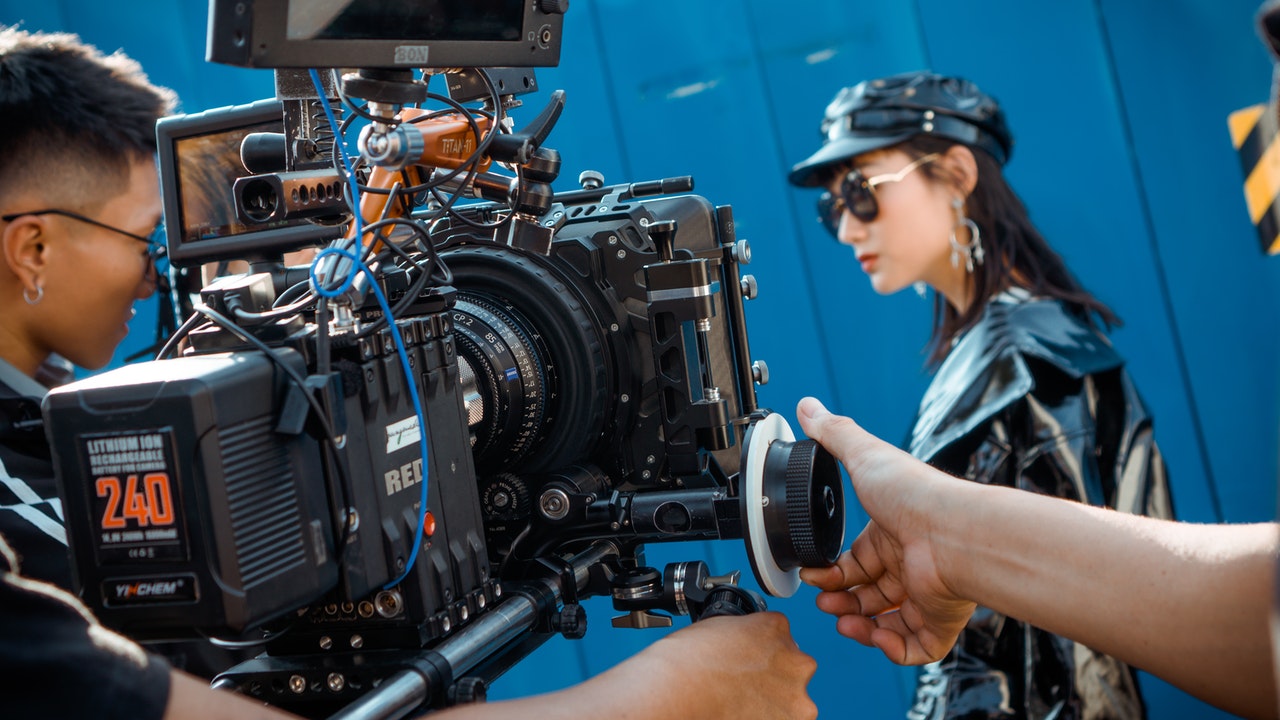
10 Types of Videos to Consider for Your Next Campaign
If you have been wondering how to leverage video marketing, then this article is for you. Video marketing is a powerful tool that brands can use to broaden their audience, boost conversion rates, and introduce their products and services. Businesses can use several different types of videos to accomplish various goals depending on their needs and long-term objectives.
From explainer videos to branded content, it's important to consider what types of videos will help you achieve your brand goals and maximize your marketing ROI. To help you plan and refine your marketing strategy, here are 10 types of videos to consider using in your next video advertising campaign.
Creative Humans makes it easy to find and hire top video production studios and freelancers. Create a Free Account to get started.
10 Types of Videos to Use in Your Marketing Campaign
The types of videos you use in your marketing strategy depend mostly on what you want to achieve with the campaign.
In general, videos serve one of three purposes:
- Raise awareness: Includes videos that introduce your brand to customers and generate interest in your products or services.
- Increase engagements: Certain types of videos, like social videos, help brands increase engagements, like sharing your video with others. These videos help maximize your reach and build consumer trust.
- Generate conversions: Testimonial videos, product demonstration videos, and similar videos aim to increase conversions by appealing to customers in the decision stage of the marketing funnel.
Marketing videos can be used at every stage of the marketing funnel to drive viewers closer to making a purchase. Branded content, for example, can be used during the awareness stage to generate brand interest, while testimonials can be used at the decision stage to convince viewers to make a purchase.
Here are ten types of marketing videos that brands can use to build brand awareness, establish consumer trust, and generate more conversions.
1. Explainer Videos
Explainer videos are incredibly versatile marketing tools that are used to explain new products, services, concepts, and more. They can walk viewers through how to set up and use a product, teach them how to perform a task, or explain what your business does.
Explainer videos introduce a problem that your target audience faces and explain how you can help them solve this problem. These videos help establish your brand as an authority on a specific subject and demonstrate the value that you offer to your customers.
If you (and your audience!) need a break from promotional ads, consider an explainer video so that your audience gains deeper knowledge into your product's features and benefits. Explainer videos i ntroduce your brand, products, and services while providing valuable information to your viewers.
Learn More
2. Company Culture Videos
Customers want to know that the companies they purchase products from share their values. Company culture videos help brands establish consumer trust by demonstrating your brand's values.
These videos help humanize your brand and encourage long-term customer loyalty. Company culture videos can include office tours, employee interviews, factory tours, etc.—anything that demonstrates what makes your company unique and appealing to your target audience.
For example, a coffee company might make a company culture video that showcases where they get their coffee from to demonstrate that its products are ethically sourced. Alternatively, you might consider making a "Working at [Your Company Name]" video that features employees discussing why they enjoy working for your business.
Learn More
3. Social Videos
Billions of consumers use social media worldwide, making social videos a great option for brands looking to increase brand awareness and target online audiences.
Social videos need to be short and eye-catching to capture the attention of social media users who are quickly scrolling through their feeds. Social media platforms like Facebook make it easy for brands to target very specific audiences and deliver curated content that appeals to their specific wants and needs.
When using social videos, it's important to carefully consider what platforms to distribute your videos on. LinkedIn, for example, is ideal for B2B businesses or B2C businesses targeting professional audiences. Twitter or Instagram, however, are often better suited for brands targeting younger audiences.
Learn More
4. Nonprofit Videos
For nonprofit organizations, it's important that your marketing campaign helps raise awareness for your cause and encourages your audience to engage with your organization as volunteers or donors.
Nonprofit video production enables mission-driven organizations to share their message and values, helping them build community trust, raise funds, and improve engagement.
Nonprofit videos focus on why your organization exists, what it hopes to accomplish, how it plans to fulfill its mission, and how it has already contributed to its cause. By focusing on these qualities, you can convince viewers why they should support your organization. After generating support, you can use future videos to share ways in which your audience can support your efforts.
Learn More
5. Commercials
Commercials are a more direct type of marketing video that helps brands promote products or services. Traditional commercials are a great option for businesses that want to market their products and services to mass audiences across several channels, including television and social media.
Commercials are typically one minute or less, focusing on what your product is, what it does, and why your audience needs it. They feature eye-catching visuals and a clear call to action that encourages viewers to learn more.
Learn More
6. Branded Content
Branded videos promote your product or service while keeping your brand in the background or by not directly featuring your brand at all. This can include lifestyle, entertainment, or informative content. Many audiences respond more positively to branded content than commercials, because they perceive that branded videos present them with something more valuable than what a general advertisement offers. This method of indirect marketing can be more effective than a direct commercial pitch.
Learn More
7. Live Event Videos
From concerts and conferences to conventions and trade shows, live events offer a great way for brands to connect with customers, share new ideas, showcase new products, and discuss industry trends.
To maximize the reach of your live events, consider utilizing live event video production. This can include live streaming your event to viewers that can't attend or recording key moments from the event for distribution on social media. You can also use Instagram and Snapchat Stories to share bits and pieces of your event with your followers.
Live event videos can also include behind-the-scenes footage to give viewers exclusive access to things that live viewers can't see.
Learn More
8. Testimonials
Testimonial videos are one of the best tools for building brand trust and encouraging customers in the decision stage to make a purchase. Consumers are much more likely to trust the opinions of real customers than promotional content from brands.
Testimonial videos should be authentic and feature real interviews with satisfied customers. Ask customers why they bought the product and what they liked about the product. Let them give honest answers instead of using a script.
These types of marketing videos are ideal for online retailers as they give customers a better idea of what they can expect when they purchase your products or services.
Learn More
9. Animated Videos
Animation can make your marketing videos more accessible and appealing to viewers. In today's digital landscape, users are bombarded with ads everywhere they go. To get through to these viewers, it's important to make your videos stand out from the crowd.
Animation can be used in nearly any type of marketing video, including explainer videos, social videos, training videos, how-to videos, and more. Animation can replicate real-world scenarios, demonstrate how a service works, and complement voiceovers with relevant and exciting visuals.
While live-action videos often offer a more personal touch, animated videos are generally much more versatile and are more likely to catch the eye of digital users scrolling through their feeds.
Learn More
10. Educational Videos
Educational videos are often used to establish brand authority and trust by providing useful information to viewers on a topic relevant to your brand's niche. This might include tutorial videos, how-to videos, or videos focused on explaining a complex topic.
Educational videos also help brands bolster their written content. When included with company blog posts, they can boost traffic and capture users that aren't interested in reading long-form written content.
Educational content is not typically promotional in nature. Instead, it's important to focus on providing useful content while subtly promoting your brand or products in the background.
Learn More
Work With Video Production Professionals
Video marketing is a powerful tool that helps brands achieve their long-term business goals. By utilizing different types of videos, you can target customers at different stages in the marketing funnel and maximize your marketing ROI by creating a campaign that builds brand awareness and generates more sales.
Creative Humans helps brands connect with video production professionals that have experience planning, producing, and distributing various types of marketing videos for maximum impact. By partnering with an experienced video production company or freelancer, you can create and implement a video marketing campaign that generates results.
Creative Humans makes it easy to find and hire top video production studios and freelancers. Create a Free Account or Post a Job to get started.
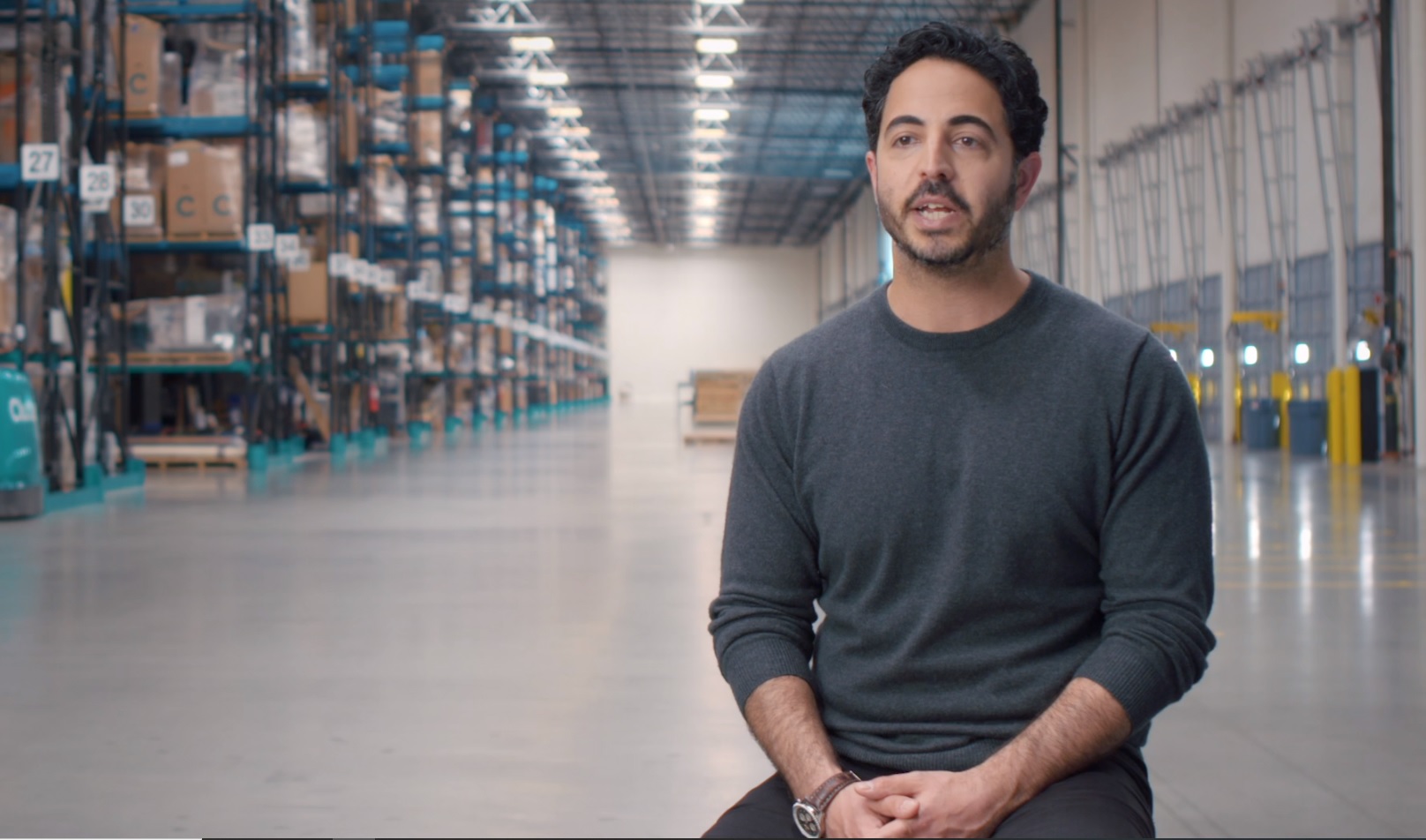
9 Company History Video Examples from Creative Humans
To build brand awareness, encourage customer loyalty, and establish brand culture, it's important for companies to establish familiarity and trust with their core audience. One of the ways brands are able to do this is by detailing their stories and company histories through effective video marketing campaigns.
Company history videos allow you to tell viewers the story behind your brand. They tell audiences how your business began, where it started, what it has accomplished, and how it provides value to customers. To help you get inspiration for your project, here are nine great company history video examples from the professionals at Creative Humans.
Creative Humans makes it easy to find and hire top video production studios and freelancers. Create a Free Account to get started.
1. Tyson "Nugget"
Day Rate: $800 - $15,000
Director, Creator ID: DIR7707CS
What comes to mind when you think of Tyson? Most people tend to think of frozen grocery store chicken nuggets and similar products. To dispel this notion, Tyson created this company history video that focuses on highlighting the many different uses of its products, from fine dining to a wide variety of grocery store products that many consumers wouldn't recognize as Tyson.
2. Ralph Lauren
Production Budget: $10,000 - $20,000
Production Company, Creator ID: PRO5352NF
Rather than creating a video aimed at consumers, Ralph Lauren wanted to create a video to instill in its employees an appreciation for the way that Ralph Lauren sees New York City. This 60-second video focuses on capturing small, hidden moments throughout the city that highlight NYC's unique cultural qualities.
3. CVS Pharmacy "Take High Higher"
Day Rate: $1,500 - $3,500
Cinematographer, Creator ID: CIN7693LH
This corporate history video by CVS aims to explain the company's new focus on its health food and beauty strategy and how the company is counting on employees to successfully carry out this strategy.
The video concisely explains core components of this strategy, like creating sections in stores that are dedicated solely to health foods. The video hammers the message home that CVS is relying on employees to play an important role in this new business initiative.
4. HP Inc. "Work, Work, Work"
Production Budget: $30,000 - $45,000
Creative Agency, Creator ID: CRE7760TL
HP commissioned this trade show ad web video for its annual customer conference. This short, one-minute video focuses on the major role work plays in our lives with an emphasis on modern workflows and collaboration. With this in mind, HP goes on to explain how its products improve collaboration and how the company's focus on innovation allows them to remain at the forefront of modern workplace technologies.
5. Patagonia "#NBBC"
Production Budget: $30,000 - $40,000
Animation Studio, Creator ID: ANI7842AH
One of Patagonia's key corporate values is #NBBC, or 'Not Bound By Convention.' Patagonia employees and brand reps are encouraged to ensure customers have a great experience, even if it means breaking or bending the rules.
To demonstrate this, Patagonia commissioned this video, which tells stories from employees in the form of an animated documentary. The audio comes from recorded employee interviews, and the visuals include hand-drawn animations over backgrounds made of Patagonia fabrics.
6. Wells Fargo/Clutter
Production Budget: $30,000 - $50,000
Production Company, Creator ID: PRO280RM
To highlight Wells Fargo's partnerships with young mission-driven brands and companies, the company produced a six-part video campaign with each video focusing on a different partnership.
This video focuses on Wells Fargo's partnership with Clutter to demonstrate to viewers how the banking company is able to help young companies grow through innovative services and banking technologies.
7. Nokia "Converge"
Production Budget: $8,000 - $10,000
Production Company, Creator ID: PRO7714EB
5G technology presents a number of exciting new opportunities for tech companies like Nokia. This company history video highlights these opportunities as they were discussed at the "Converge 2018" conference held by Nokia Bell Labs.
Through a collection of on-stage presentations and one-on-one interviews, this video effectively paints a picture of what the future might hold for companies like Nokia as they are able to take advantage of 5G and Industry 4.0.
8. Zurich Insurance "New City"
Day Rate: $800 - $15,000
Director, Creator ID: DIR7707CS
Zurich Insurance commissioned this corporate video, which involved recording interviews and shooting footage in several locations around the world, to highlight how the development of green spaces can positively impact the world.
This video demonstrates the importance of green spaces by appealing to the human compulsion to help others and bring value to the communities around them. Finally, it closes with an effective tagline that appeals to the viewers' emotions: "Zurich Insurance. For those who truly love."
9. SolarisBank
Day Rate: $650 - $800
Motion Graphic Designer, Creator ID: MOT7657ES
SolarisBank is a fin-tech company based in Berlin. Unlike similar companies, it has a German banking license built into its platform. To highlight the qualities that set SolarisBank apart from its competition, this two-minute company history video goes over all the unique ways the company is able to provide value to both consumers and companies through modern banking and financial services.
Hire Video Production Professionals
Company history videos serve as an incredibly effective tool to build brand awareness, encourage customer loyalty, shape company culture, and establish trust between brands and their audiences. By partnering with a professional production company, you can create an impactful corporate video that effectively tells your brand's story and history.
Creative Humans makes it easy to find and hire top video production studios and freelancers. Create a Free Account or Post a Job to get started.

5 Essential Video Advertising Techniques
From traditional commercials to social media videos, video advertising is an incredibly impactful marketing strategy that can elevate your brand and establish meaningful connections with consumers.
To maximize your video advertising ROI, it's important to understand what methods and techniques you can utilize to appeal to larger audiences and influence purchasing decisions. The most effective advertising techniques revolve around establishing emotional connections with viewers and creating shareable content. To help you get the most out of your marketing videos, here are five essential video advertising techniques.
Creative Humans makes it easy to find and hire top video production studios and freelancers. Create a Free Account to get started.
Advantages of Effective Video Advertising
Every brand can benefit from a strong video advertising strategy. Video marketing has shown to be an effective way to increase sales revenue, encourage customer loyalty, and boost brand awareness.
- 64% of users are more likely to buy a product online after watching a video.
- 87% of marketers say video generates positive ROI.
- 78% of marketers say video advertising has improved their bottom line.
- Social media videos produce 12 times as many shares are text-based content.
As more consumers depend on videos to make purchasing decisions, marketers who want to maximize their ROI can't afford to neglect video advertising.
5 Essential Video Advertising Techniques
Video advertising can generate great results, but to engage viewers and generate more conversions, marketers need to plan and implement a well-thought-out strategy that appeals to modern consumers.
To improve your brand appeal, attract a wider audience, and increase your marketing ROI, make sure to keep these five video advertising techniques in mind:
1. Tell a Story
Your video should not solely be focused on selling a product or promoting your brand. Instead, the most effective video advertisements focus on telling a story that connects with viewers and appeals to their emotions.
Storytelling videos can take several forms. You might use storytelling as a vehicle to demonstrate the need for your product and how it can bring value to your customers. Alternatively, you can tell the story behind your company to promote your brand and establish trust with your viewers.
2. Include Effective CTAs
Call to actions (CTAs) encourage viewers to take the next step toward becoming customers. Effective CTAs can include anything from a basic hashtag campaign to encouraging viewers to visit your website to learn more.
CTAs can be placed at the beginning of the video to ensure viewers see it even if they don't finish the video. Midroll CTAs can be included somewhere in the middle of the video to coincide with the advertisement's most impactful moments. Lastly, they can be placed at the end of the video to drive viewers down the sales funnel after finishing the video.
3. Use Real Customers
To generate conversions and encourage loyalty, brands need to be able to establish trust with their customers. One of the most effective ways to do this is to use real customers to endorse your brand or product.
Customer testimonial videos allow real satisfied customers to share their stories and explain how your product has brought value to their lives. By sharing the unbiased perspectives of existing customers, brands are able to more easily build trust and solidify themselves as authorities in their industries.
4. Optimize Your Video for Search
Billions of searches are performed every day across websites like Google, YouTube, and Facebook. To maximize your viewership, it's important to optimize your video for search on these platforms.
Be sure to use effective keywords in your video's title to drive traffic, and make the title 65 characters or less when possible to avoid it being cut off in search results. You should also use keywords to optimize your video description. Avoid keyword stuffing and make sure your description accurately depicts what is in the video.
5. Influencer Partnerships
Like customer testimonial videos, influencer partnerships can go a long way in building trust with your viewers. Consumers are more likely to trust a product that is recommended by a trusted figure than one that is advertised by the brand behind the product.
Partnering with influencers who share your target audience makes it easier to establish long-term relationships with your customers. You can include promo codes for influencers to share and create an ad that showcases the influencer using your product as part of their everyday routine.
Hire Video Advertising Professionals
Video advertising is an essential marketing tactic that brands can use to achieve a wide range of benefits, from generating more conversions to increasing brand awareness. But with the number of brands competing in the online marketplace, it's important to know what techniques you can use to make your business stand out.
By working with experienced video advertising professionals, you can plan, produce, and distribute effective marketing videos that foster brand growth.
Creative Humans makes it easy to find and hire top video production studios and freelancers. Create a Free Account or Post a Job to get started.

How to Make Effective TV Promos & Trailers
Effective TV promos and trailers help generate interest, awareness, and excitement for your production. But to maximize your reach and increase your ROI, it's important to understand what it takes to produce an impactful promo spot that connects with your target audience.
TV promos need to effectively capture your audience's attention and convince them that your production is worth their time. This requires thorough planning, scriptwriting, scene selection, and more. To help you better understand this process, here's what you need to know about making an effective TV promo or trailer.
Creative Humans makes it easy to find and hire top video production studios and freelancers. Browse the Directory , or Post a Job to get started.
Creating an Effective TV Promo
To generate excitement for your show, it's important to carefully plan your project in advance. From scriptwriting to scene selection, here's what goes into making an effective TV promo:
Identifying Your Audience
Who is your audience, what interests them, and what are their viewing habits?
Answering these questions is essential to create an effective TV promo that generates awareness and buzz among your target viewer base. Paying for high-quality spot placement guarantees that your promo will get a lot of exposure, but it doesn't guarantee that it will generate the desired results. To maximize your trailer's appeal, it's necessary to thoroughly research your target demographic to understand what will grab their attention.
Writing a Script
Your script is one of the most essential components of your trailer. You only have so much time to capture your audience's attention, making it important to clearly and concisely convey your message through an effective script.
Keep in mind when writing your script that TV promos should be relatively short, typically two minutes or less. Your script needs to fit inside this time frame without sacrificing your core message. After writing your script, read through it several times and act it out to determine whether or not you need to make any cuts.
Bite Selection
TV trailers and promos rely on effective bite selection to capture viewers' attention. Try to find bites that do the storytelling work of your script and also provide great visuals. You might even strategically choose bites to misdirect viewers in an exciting way so that you don't create any spoilers. Connecting visuals together sometimes will let you use something that is from a "spoiler" moment, but when connected to a different moment or character it's actually a mis-direct. This is a great way to create interest with your promo and excite viewers when they actually watch the show and something completely unexpected happens.
Music & Sound Design
Music and sound design help set the pace and rhythm for your spot and are essential to creating a dynamic promo or trailer. Consider working on the music and sound design early in your production process, so that it can seamlessly blend with the visuals to create better engagement.
It can be helpful to build a skeleton outline with VO and bites, then put the music in. This is especially important if using a popular song, because it will allow you to find the right placement of lyrics and montages. Once you have the basic outline with the music and sound incorporated, you can go in and paint the rest of the spot with all the supporting visuals.
Endorsements
Just as one of the most effective ways to market a product is to include testimonials from customers, one of the most effective ways to market a TV show or movie is to include endorsements from critics and media outlets.
Pull quotes from popular outlets that have reviewed your production to help market your show. Endorsements from reputable sources can help convince viewers that your show is worth their time.
Strategic Distribution
To reach your desired audience and maximize your trailer's appeal, it's important to carefully consider when and where to distribute your promo. Which channels do your viewers spend most of their time watching? Where are they most likely to be exposed to your trailer? At what times do they typically watch TV?
Paying for your promo to air at two in the morning might save you a lot of money, but it's unlikely to reach as many viewers as you want.
It's also important to consider distributing your promo on other platforms like social media. Distributing your TV trailer through YouTube, Facebook, and similar platforms can help significantly increase your promo's exposure and capture new audiences.
Hire a Creative Agency
Hiring a professional creative agency is the best way to ensure your TV promo is high-quality and effective in achieving your desired results. An agency will work with you to write an effective script, hire voice over talent, select impactful scenes, create a detailed storyboard, provide the necessary equipment, and more. Your trailer is your best chance to generate interest from potential viewers, so it's important to dedicate the necessary resources to produce an effective promo that appeals to your target demographic.
Work With Experienced Video Production Professionals
A high-quality TV promo or trailer can help set your show or movie up for success, but only if you're able to effectively generate interest from your target audience. By following the tips in this article, you can maximize your promo's reach and increase your ROI through effective audience targeting and pre-production practices.
To ensure your TV promo has the impact you desire, it's important to consider working with a professional video production company or freelancer who can help you plan, produce, and market your show.
Creative Humans makes it easy to find and hire top video production studios and freelancers. Create a Free Account or Post a Job to get started.
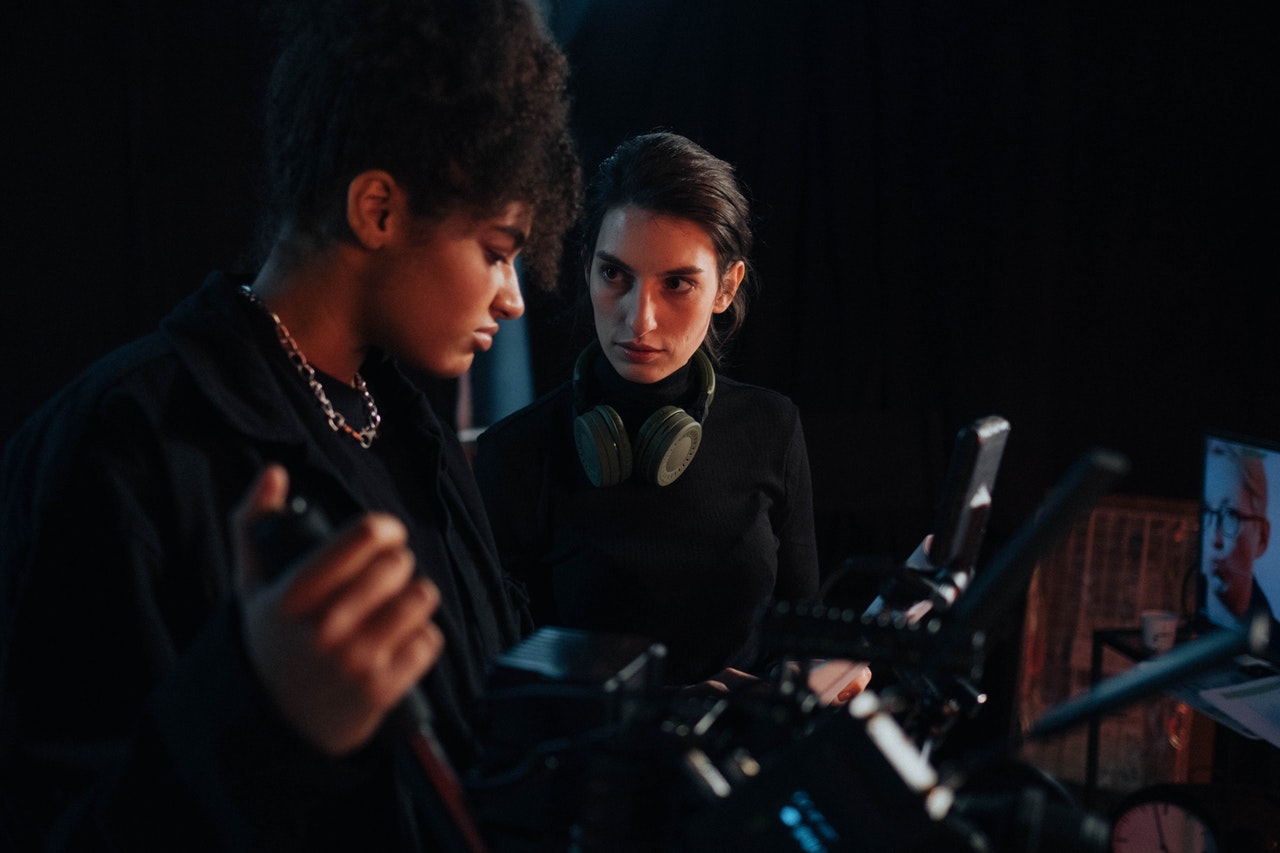
What is a Producer?
Producers play an important role in any film or video production project, and there are actually several types of producers that may work on a project. In this post, we'll give you the run-down on three common producer roles: Agency Producer, Content/ Promo Producer, and Post Producers. Here's what you need to know!
Hire an experienced producer for your next video project with Creative Humans. Creative Humans makes it easy to find and hire top video production studios and freelancers. Create a Free Account to get started.
Agency Producer
Agency Producers create and manage the budget, schedule, production process and delivery of projects, such as: ads, digital content, PSAs, case studies, sales and marketing videos.
After the creative concept has been approved, the Agency Producer scopes the job, finds resources and sets milestones. Then they manage the budget and schedule, overseeing every step of production to ensure the creative vision of the project is executed and clients sign off.
Like air-traffic controllers, they work closely with cross-functional internal agency teams (account, operations, strategy and finance) along with teams of creatives (Creative Directors , Art Directors, Writers, Editors , Designers + Animators ), vendors and clients.
An experienced producer hires the right vendors such as:
- Production companies
- Crew for shoots
- Gear shops
- Talent (voice-over artists and actors)
- Editorial post-production creatives, such as editors, animators, color-correction specialists, and audio engineers/composers
Producers also run agency and client reviews of the work at every iteration. An excellent Producer juggles competing demands and diplomatically handles each issue, scope or schedule change, while maintaining version control, so that the project stays on track for final delivery.
Find an Agency Producer at Creative Humans!
Content/Promo Producer
Content and Promo Producers bring ideas to life by ideating, writing the script, and managing the entire production process of making the content piece/promo through delivery.
These producers sometimes hire vendors for shoots and oversee the entire on-location, set or in-studio production. Conversely, they sometimes repurpose existing footage and animation assets to make fresh video content.
Content and Promo Producers also collaboratively work with internal brand teams (research, programming, marketing, finance and operations) and vendors. They guide the creative work in the post process with editors, animators and graphic artists--sometimes also working with voice-over artists, composers and audio mix engineers.
An experienced Producer is a storyteller and logistics expert who manages every aspect of production in the creation of a video. These pros are also diplomats who are able to foresee potential issues that arise, then pivot and employ remedies which keep the project on track for on-time and on-budget delivery.
Find a Content/Promo Producer at Creative Humans!
Post Producers
Post Producers manage the budget, schedule and editorial workflow of projects in the post production phase. They typically don't have a creative role. Instead, they helm the overall post process and have the crucial responsibility of final delivery.
These Producers manage an editorial team of video editors, animators, graphic artists, color-correction specialists and audio engineers. They also organize and manage assets such as video footage, music tracks, and graphics/animation.
Post Producers frequently manage internal creative and account team reviews of a video project, making detailed notes of feedback and giving change orders to the editorial team. Then, they oversee the editing, graphics and audio revisions while maintaining tight version control for efficiency. This is hugely important so that the correct versions are being revised and presented for approval.
Once the work is approved, these Producers must make sure every version requested for delivery is created according to each platform's technical requirements, reviewed for quality, approved by the internal creative team, and finally delivered to the client.
After delivery, they manage the individual assets and entire project archive on the server to keep organized for future retrieval. This role requires technical knowledge, diplomacy as well as extreme attention to detail and organization.
Find a Post Producer at Creative Humans!
Hire Experienced Producers
Creative Humans makes it easy to find and hire top video production studios and freelancers. Create a Free Account or Post a Job to get started.

Adapting to the Age of Remote Production
Chris Vivion, an executive producer, and director at Spacestation is an Emmy nominated producer with a knack for lifestyle, cooking competition, comedy, animation, and reality content. Chris has played a monumental role in programs for prominent companies and brands like Time Inc., Turner Broadcasting, Food Network, and HBO.
Continue reading our interview to learn about remote productions from this knowledgeable media expert.
What was your first remote shooting project like?
The very first one was the most crucial. One of our clients is a live streaming fitness brand and their entire business is predicated on having people in the studio, recording talent in a very tight colorful LED lightbox that's not well ventilated. When that was threatened, you think it's going to go away because you can't have people in the box anymore.
We worked with the client to get the essentials but it had to be something that didn't take a lot of CPU power. We bought every single USB to HDMI connector we could find and I drove to Adorama through empty Manhattan streets any time they had a new converter and Canon Vixia camera. I could preset everything to all the settings so it would be high-functioning and get a good quality picture for everybody.

You want to put people in a very comfortable space but not have lots of variables where they have to set up complex lights and cameras. You want to keep it as simple as humanly possible.
What were any of the pitfalls of remote production? Any disasters?
With streaming, music and bandwidth and camera positioning were always going to be an issue. Poor WiFi connection is also not great for high-quality products. The biggest pitfall is trying to create a normalized setup. You want it to be as simple and uniform as possible to get consistent results. So when you have people with different windows and light pouring in from one direction, you want to make sure that you can match everybody's look.
Instead of going completely remote, we built a package for one of our DP's in Brooklyn and one of our DP's in Los Angeles so a single operator could walk into a client's house with full PPE. The DP's set up the camera, single-source light, they balanced everything, connected USB to HDMI through Zoom so that we could see remotely. Then that technician left the house entirely, and we conducted our interviews through Zoom.
I think there's a lot of software that's come out since the pandemic where people are trying to cater to these types of scenarios. For example, right now we're using a custom piece of software that's powered with the client's own iPhone 10 or above . Their iPhone records locally then transfers footage onto the cloud, and we get perfect 4K or 1080 footage so we can control the background, the temperature, the color, the intensity of the light. Everything is normalized and these interviews look very well produced, but they don't cost the client an arm and leg.
Can you change the background?

Luckily for us, we were able to settle upon a soft grey background from Savage . Savage makes some pop-up backgrounds from gray to white to black. They also make green screen versions so you could key out the background if you wanted to.
What do you think about the future? Do you think this type of production is going to stick around?
I think people will think differently about it. I think some people are going to be smart about it. Do I think the norm is going to be that everything stays remote? Absolutely not. But I think that now there will always be some sort of hybrid version.
So who's directing these videos? Do you direct them remotely?
You direct them remotely. Technology is technology. It's really the people that facilitate the technology that matter the most. It's also, how are you packing up and providing instruction on these kits? How are you prepping with the client, the stakeholders, and the talent so they feel they're being handheld in the same way they would be on set? You need a human being who is patient and understands how to set up the equipment, walking the client through the process.
And on the production side of it, you need a great director. You need somebody who is going to be an educator, a producer, a director, a cheerleader. That made a big difference for us.
Have you ever seen any similar productions done by other people? Have you seen any mistakes in those productions?
I think some of the Zoom integration in the award shows were pretty rough. It truly is a lack of pre-production time. For instance, for one of our events, we had a very popular celebrity who gave us ten minutes for a tech check, and then on the day of the show, when they turned on the camera, they were in a completely different location than we did the tech check-in. Their WiFi was terrible so we knew it was going to be a disaster.
Live streaming and remote work are really tough. If you're not live streaming and you have the time to figure out what the client's scope is, there's no excuse for not getting it right.
Any tips you have for directing people? Do you think commercial production applies to ad agency shoots doing everything remotely?
We've done mostly big live events. We did do a big Food Network production in October, but it was a minimal set. So we had a client who was remote. I directed it, I was there with half the normal amount of people we would have had. We just synced all the cameras into remote software. I think you're seeing a lot of these solutions like Frame.io's camera to cloud solution where clients can actually see your cut. I think that's hugely important.

It's all about trying to make a connection when you're in front of somebody's screen. I think you just have to have a lot of empathy for the other person. You have to have a lot of patience and allow yourself a lot more time. The pre-production part of it is super important.
If you're not prepared, you can tell.
Definitely. We do so many tech checks because we don't know if somebody's internet connection that we tested on Tuesday at 25 megabits is gonna be at 5 on Wednesday.

You have to think about contingency plans. Having great coms is super important. Companies like Clear-Com and Unity have virtual com products you can get on your phone which creates a traditional almost walkie-type environment. Unity allows you to link in through whatever remote software you're using and allows only ISO audio to go in. Those are solutions that have been in place for a very long time, they've just been appropriated for a Covid world.

I think for a lot of places, this is going to set up the expectation that you're not going to have to spend as much crazy money to get value. My business partner and I have talked about whether or not this is lowering the bar on what people want to spend. I think it probably is.
I think Spacestation is well-positioned for that. We love an eleventy-billion dollar client. We do two or three national spots every year. It's great money. But at the same time, we make our bread and butter on over-servicing clients who need to get quality for value. We make a lot out of a little. That's kind of what we're good at. For us, our mindset is, bring it on!
Creative Humans makes it easy to find and hire top video production studios and freelancers. Create a Free Account or Post a Job to get started.

Promax President's Tips for Entertainment Professionals
For seven years, president & CEO Steve Kazanjian has been running Promax, a worldwide community for people enthusiastic about marketing innovative television and video content. Kazanjian works with well-established brands to help with consumer insights and market analytics.
Read our interview with Steve Kazanjian to learn about his start in the industry, his work with Promax, and his visions for the future of entertainment.
How did you get your start in the entertainment industry?
I started in post-production and that moved me into promos and ultimately into marketing and brand strategy. Actually, in my early career, I was one of the beta testers for Avid back in '87. Avid was the first non-linear random-access editing platform. Everyone was in a linear base before.

While I was a PA on a show, I was a huge MAC nerd. The show I was working on required Avid rather than linear editing and the editors had no idea what Avid was. But I understood the interface! I knew I could do it. That got me into Photoshop 1.0 and After Effects 1.0 and I moved up from there. I worked at different agencies that I either started, owned, partnered, ran, and then moved over into CPG running global creative for a big Fortune 500 packaging company. I worked all across the board! And obviously, I'm back in entertainment now running Promax.
What is Promax?

So, the first television Prime Time season was the 1955-1956 season. In the fall of 1955, it was the first time the big three television networks not only decided to counterprogram against each other but also, counter market against each other. That forever changed the landscape of our business.

And so six months later, in 1956, Promax was born. It was basically a way to establish the best practices in this industry as competition comes in. If you look back in the archives at some of the early stuff, it was really interesting. There was a lot of radio, a lot of newspapers. But over these sixty-five years, the business has really transformed.
Who are your members at Promax?
Today, Promax is 10,000 members strong. Members move in and out of the association every two to three years. We represent everyone from the CMO down to junior designers to marketing to strategy to creative to writer-producers and editors. As the industry has consolidated, our membership has become much more angular.
Why do people join Promax?

We look at Promax in three specific stanchions:
1 - Awards shows. a celebration of excellence (inspire people with great work)
2 - Professional development programs and leadership initiatives (skill-building)
3 - Networking initiatives (opportunities to deepen networks of contacts)
Promax drives conversations around an abundance of content in the world of entertainment. It's all about community, now more than ever.
Any tips and tricks on how to win a Pro Max?

1 - Make sure that you're submitting in the right categories
2 - Don't underestimate how important your creative brief is.
So many people think the work will stand for itself, but you have a jury of your peers who don't know the strategy behind what you're doing. So if you're looking at the work and it's abstract, it may look great and be absolutely beautiful, but unless we know what the intent was and what you're trying to achieve, your peers will not understand if your work was successful or not.
What is your favorite spot/promo you've seen?

It's from Russia and it is the best edit I've ever seen in my life! It's so incredibly done. The shot selection, the matching, the thoughtfulness, it's unlike anything else you've ever seen. Basically, it was something like two hundred different movies where they were matching a scene from one movie into a scene from another movie. The amount of work that needed to go into that, you couldn't even believe.
How do you think a promo differs from a commercial? Do you pull on the heartstrings differently? Are the objectives different?
I'll use theatrical trailers as an example for this. Pre-pandemic when Marvel was at its height, as we were rolling into Endgame , not only was there a teaser for the trailer but there was also a tease for the teaser.
So to unpack that, you're promoting a promotion of another promotion. So then the argument would be, what is content and what is marketing, and does it matter? To me, the delineation between the two is one you're trying to avoid watching, and one you tune in to watch it.
What kind of impact have data and analytics had on creatives?

It depends on who you talk to. Some people think the creative side is going away with the focus on data, while other people feel that data is driving everything.
It's a pendulum. We're swinging back and forth. Ultimately, it's going to depend on the product, what type of content it is, where it's airing, and who the demos are. Anytime you become myopic to one area, you're not going to see the bigger consumer behaviors or trends. You absolutely have to look at the entire ecosystem.
What do you think about media company mergers? Do you think it's going to help or hurt?

I think that time will tell. I think that in order to be competitive in today's market place you have to have scale. We know that consumers are spending more on subscription services now than they had before. Now, part of that is because there are more subscription services out there. Part of it is because everyone's at home and disposable income is being funneled from what would have been restaurants, travel, leisure into Netflix, Disney +, Spotify.
The big question as we emerge out of the pandemic will be where that discretionary spending is going. That's the challenge, that's the unknown.
What do you think the future of cable is?

The blending of Warner and Discovery basically brings back the cable bundle. You've got everything from HBO to CNN to HGTV. By re-bundling and refocusing, you're extracting more value out of portfolio content or legacy content and you're making it more accessible which is critical.
It will be interesting to see the content that's been produced over the last five years and see how that is marketed. With content, there's going to be a generational half-life of its relevance. Things that are relevant still hold emotional equity and recall. But once we move half a generation down, it slowly starts trickling and it has no context. The challenge is how to market and continue to extract value out of something over generations.
Creative Humans makes it easy to find and hire top video production studios and freelancers. Create a Free Account or Post a Job to get started.
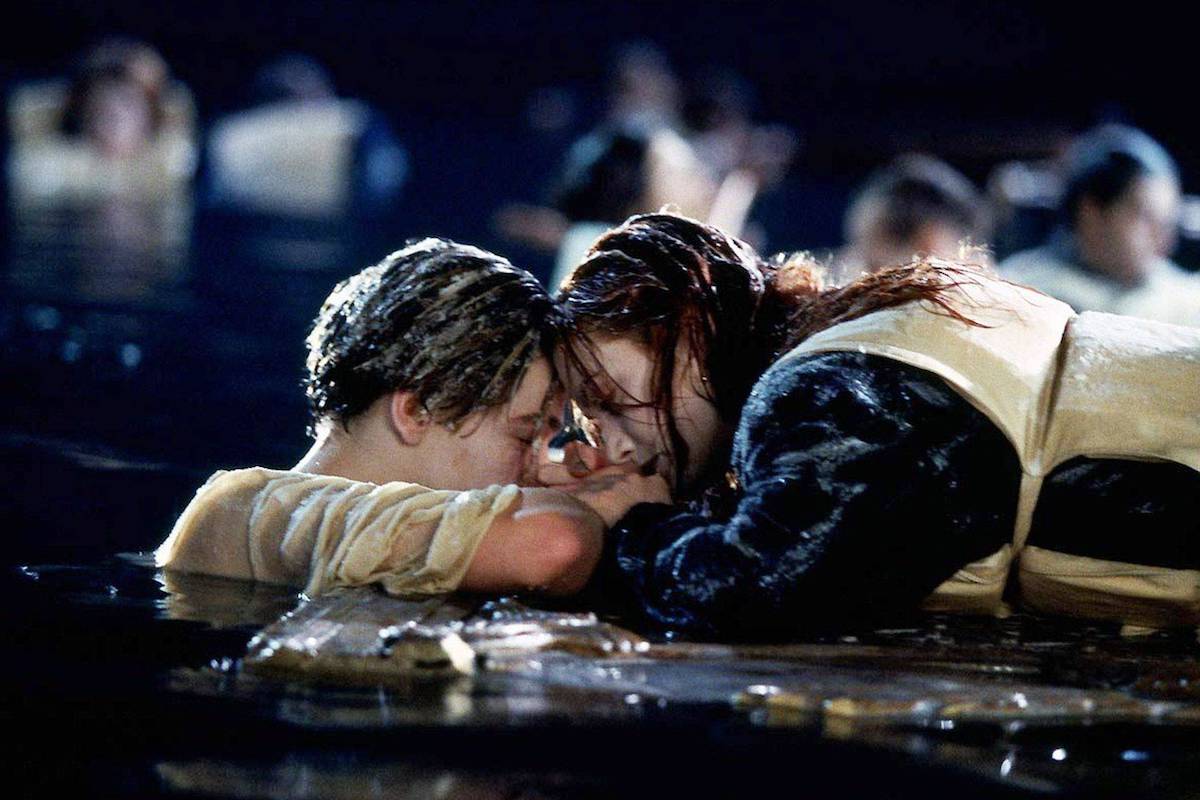
How Does Watching a Video "Affect" Our Bodies?
Have you ever sobbed during an emotional scene at the movies? Have you ever felt your pulse rising while watching a horror film? Do you ever remember staring at a movie screen while gasping out loud with your eyes wide open?
If you said yes to any of these questions, you've experienced film through the lens of affect theory. Affect theory explains our unconscious bodily responses to what we visually perceive on-screen. When we sit down to see a new film, we aren't just passively watching, we become active participants. So watching our favorite movies isn't just a spectator sport after all.
Blending Mind and Body

Can you smell these sweet treats? Does it feel like you can taste them?
We may not realize it at the time but our bodies are taking in all the material from the film. As the music gets louder during a suspenseful moment, the hairs on the back of our necks stand up and our muscles might start to get tense. As the lighting on-screen brightens when a character walks out onto an open field under the sun, our eyes likely start to squint.
Those involuntary bodily responses are proof of how we are affected by films. But how do our bodies know what to do? It's really a matter of learning and experience. The tactile experiences we have gathered throughout our lives are the reason our bodies are affected by images on the screen. Those unconscious reactions are meant to protect us and prepare us to adapt to changing environments. We've learned from our parents, teachers, TV, and from real life how to react in different situations. We know that loud ambulance sirens mean we need to move aside and stand clear of its path. We learned not to touch a hot stove to avoid getting burned. All the sensory knowledge we have stored in our minds automatically blends with our bodies as we watch a film.
What About Synesthesia?

For some, the blending of the mind with bodily senses is second nature. Some people perceive sound and associate it with a certain taste. Others associate certain images with specific colors. This cross-wiring of bodily senses is known as synesthesia.
Synesthesia is a neurological condition that causes the activation of one bodily sense to trigger responses in the other senses. A subcategory of synesthesia is grapheme-color synesthesia, a phenomenon where people see numbers and letters in specific colors. The visual cue of a number or letter triggers an automatic association. Similarly, people with synesthesia, or synesthetes, might be able to smell freshly squeezed lemons just by seeing the color yellow.
With this in mind, it becomes easier to understand how watching films has the power to activate all our senses.
The Role of 3D
![]()
3D films enhance the idea of affect theory. We are no longer only watching a film confined to a flat-screen. The action gets closer to us. It's as if we can touch the action. Almost every one of us has sat in a movie theater wearing those 3D glasses with our arms stretched out trying to feel what's jumping out of the screen. We probably even shrunk back into our seats when a terrifying monster appeared to be crawling out in the rows ahead of us.
We really are affected by film and 3D makes that feeling go through the roof. (Or through the screen)
Summary

Images are more than just something to look at. Images prompt reactions and bring out our emotions.
And that's what film is. Moving images. But films are more than a collection of moving images to look at. They are images that move us. Literally!
According to affect theory, we can even compare seeing some films in a movie theater to attending a live concert. We are surrounded by a large crowd of people and we feed off their energy. Our bodies naturally gravitate to some type of movement. At a concert, we'll dance and sway to the music we hear. At a movie theater, we'll jump at the sudden appearance of that horrifying monster. We'll hold our stomachs as we laugh uncontrollably. After the final scene of a cinematic masterpiece, we might even clap our hands together without thinking about it.
We know what we are seeing on screen is not with us in the theater, but we react anyway. We become completely invested and immersed in the film in those couple of hours seated in the theater or watching a movie in our living rooms. The main thing to remember is that film is not simply something we choose to see, it is something we unconsciously feel.
Creative Humans makes it easy to find and hire top video production studios and freelancers. Create a Free Account or Post a Job to get started.

eCommerce Product Video Guide: Create Video That Converts
Video content is a powerful marketing tool that eCommerce businesses can use to boost website traffic and generate conversions. When shopping online, eCommerce product videos give customers the additional information they need to take the next step and make a purchase.
eCommerce product videos can help you explain your products to customers, demonstrate them in use, and showing practical applications of the product. Here's how you create an effective eCommerce product video that encourages customers to make a purchase.
Creative Humans makes it easy to find and hire top video production studios and freelancers. Browse the Directory , or Post a Job to get started.
Benefits of Video Marketing for eCommerce
Video marketing is an essential component of any successful eCommerce strategy. As more consumers continue to make purchases online, it's important that companies provide the resources and information customers need to make informed purchasing decisions.
To get a better idea of the important role of video content, here are a few key video marketing and eCommerce statistics:
- 81% of consumers research products online before making a purchase, making it important for companies to properly market their products and provide helpful resources.
- 54% of consumers prefer to see more video content from the brands they support.
- 80% of video marketers say that video content has directly increased their sales revenue.
- 96% of people have watched explainer videos to get more information about a product or service.
Video marketing plays an important role in raising brand awareness, increasing web traffic, and generating more conversions.
Types of eCommerce Product Videos
There are several types of videos you can use to promote your products. Each type of video can effectively encourage customers to make a purchase. Below are five of the most common types of eCommerce product videos that you should consider implementing as part of your digital marketing strategy:
Unboxing Videos
Unboxing videos are a popular type of product video that walk consumers through the entire unboxing and assembly process. These videos show customers exactly what they'll get in the box, what the product looks like, and how to put the product together, if necessary.
An effective unboxing video shows the product exactly as the customer would receive it, slowly goes through the unboxing process, explains the purpose of each component, and conveys your brand's personality.
Explainer Videos
Explainer videos enable your brand to carefully explain the purpose of your product and how it works. These videos should introduce a problem and explain how your product solves that problem. A high-quality explainer video can summarize the key points of importance about your product in a concise, easy-to-understand video.
Check out these explainer video examples from Creative Humans !
Customer Testimonials
Customer testimonials help brands build trust and effectively promote products by allowing satisfied customers to tell their stories. Consumers tend to trust real people more than brands, making testimonial videos a very effective way to boost conversions and generate product interest.
When making a testimonial video, be sure to only use real customers, and allow them to tell their story without your influence. These videos should be as authentic as possible to better connect with viewers.
How-To Videos
How-To or product demonstration videos show customers how your product works and how it is meant to be used. These videos are focused on the idea of "show, don't tell." Instead of explaining the product's benefits or features, they are simply designed to show that the product works easily and as intended.
Product-in-Use Videos
Product-in-use videos show real people using your product in real situations. These products encourage sales by showing customers practical applications of your product and helping them understand how your product could benefit their everyday lives.

Tips to Create an Effective eCommerce Video
After picking a type of eCommerce product video, it's important to carefully plan your video and produce a compelling script to maximize the video's ROI. Here are some tips to help you get started:
Planning Your Video
To start planning your video, it's important to answer a few questions:
- Who is the video for?
- What is the goal of the video?
- What's the message?
The answers to these questions will inform several other aspects of your video, including the script, type of video, style, and distribution methods.
Research Your Audience
Who is your target audience? Are you appealing to existing customers or new customers? It's important to understand your target market's purchasing patterns, behavior, and interests in order to create an impactful video that appeals to their wants and needs.
If your goal is to generate conversions from existing customers, an explainer video that provides a detailed look at your product may be better than a customer testimonial video, as testimonial videos are often better suited for building trust amongst prospective customers.
Tell a Story
eCommerce videos should tell a simple yet impactful story that demonstrates the need for your product. Open with a hook that introduces a relatable problem and demonstrates how your product solves this problem. A video production company can help you develop a script that effectively conveys your message while remaining authentic and true to your brand.
Keep it Short
eCommerce videos don't need to be very long. Typically, they should be 30 to 60 seconds, with few exceptions. Keep your video concise to avoid losing viewers' attention. Your video should also use music, animation, and humor as necessary to keep it engaging and entertaining.
Video Distribution
Consider where your video will be the most effective. This could include a product page, website homepage, social media, YouTube, and other channels. Your audience research should tell you where your target market is most likely to view your video and which marketing channels are the most likely to lead to conversions.
Hire Video Production Professionals
eCommerce product videos help brands generate conversions by providing potential customers with the extra push they need to make a purchase. But to achieve the benefits offered by video marketing, it's important to carefully plan your video to maximize its appeal and effectiveness. A professional video production company or freelancer can provide the advice and expertise needed to produce a high-quality eCommerce product video.
Creative Humans makes it easy to find and hire top video production studios and freelancers. Create a Free Account or Post a Job to get started.

How to Write a Corporate Video Brief
An effective corporate video can generate incredible value for your business. But to create such a video, it's important to clearly define your message and goals with a thorough corporate video brief.
By creating a well-written video brief, you can streamline the production process, save time and money, and help guarantee a high-quality final product. Here's everything you need to know about how to write an effective corporate video brief!
Creative Humans makes it easy to find and hire top video production studios and freelancers. Create a Free Account to get started.
What is a Video Brief?
A video brief is a document that outlines your project and helps your freelancer or production company understand who your audience is, how many videos you need, what your vision is, what your style preferences are, and everything else they need to know to create a video that represents your company values.
7 Tips for Writing a Corporate Video Brief
Your brief doesn't need to be complex, but it does need to be comprehensive, clear, and direct. It should demonstrate a clear vision and clearly explain how the video fits into your overall strategy. Here are six tips for writing a great corporate video brief:
1. Consider Your Audience
Every video should be created for a specific target audience. When writing your video brief, you should answer a few key questions:
- Who is your audience?
- Where will your audience watch this video?
- What should your audience gain from this video?
- What does your audience already know about your company?
A corporate training video is much different than a B2B corporate sales video. Consider your audience's demographics, age, viewing preferences, motivations, and anything else that will help you create a video tailored to your audience's unique characteristics.
2. Establish Your Goals
What is the purpose of this video? Are you launching a new business initiative? Is it a recruitment or training video? Are you announcing a new product or service?
Without clearly defined goals, your video will be directionless and unlikely to generate the value you desire. Establishing your audience and goals will help inform other important decisions, including the video style, type of video, and more.
3. Define Your Message
When creating your brief, it's important to be clear on the message of your video. You don't have to provide a full written script at this stage. Just a few bullet points with your key messages will be helpful to ensure you and your production team are aligned before moving forward.
4. Choose a Type of Video
Depending on your audience and goals, there are several different types of videos that may help you achieve your objective.
- Explainer videos are a great way to introduce new products, services, and business initiatives to employees, other businesses, or customers.
- Traditional commercials are a great option for businesses trying to generate awareness and appeal to larger audiences.
- Narrative company history videos help brands tell their stories.
- Testimonial videos allow businesses to share positive customer experiences.
5. Choose a Style
Style refers to more than just the video's visuals. It also includes tone, narration, and brand voice. You may prefer a video that is filmed like a documentary , a 2D or 3D animated video , or a collection of talking head interviews. Keep in mind that the style you choose can greatly affect your project budget.
When putting together your brief, it can be helpful to include examples of videos from other businesses or past video marketing campaigns that have elements that you want to include in your video. Your production company should also be able to work with you to discuss possible styles that may fit your brand voice and message.
6. Set a Budget
Defining a clear budget is an important part of any video brief. By setting and sticking to a budget, you can maximize your ROI and avoid spending outside of your marketing budget. Moreover, your budget will help your production company set realistic goals for your project.
After providing your budget to the production company, they will be able to start planning the production and set expectations as to what can be accomplished within your budget.
7. Set a Deadline
Setting a deadline ahead of time will help ensure production stays on track and your video is able to be distributed to your audience in a timely manner. To add to this, the longer a production carries on, the more you'll likely have to spend on your video. Without a deadline, you risk running over budget and missing out on marketing returns due to delayed distribution.
Hire Professional Video Production Talent
A video brief helps you communicate your goals, message, and preferences to your video production company so that they can create an impactful video that reflects your brand voice and vision. By taking the time to plan your video and communicate your wants and needs, you can streamline the video production process and create a higher-quality final product.
Creative Humans makes it easy to find and hire top video production studios and freelancers. Create a Free Account or Post a Job to get started.
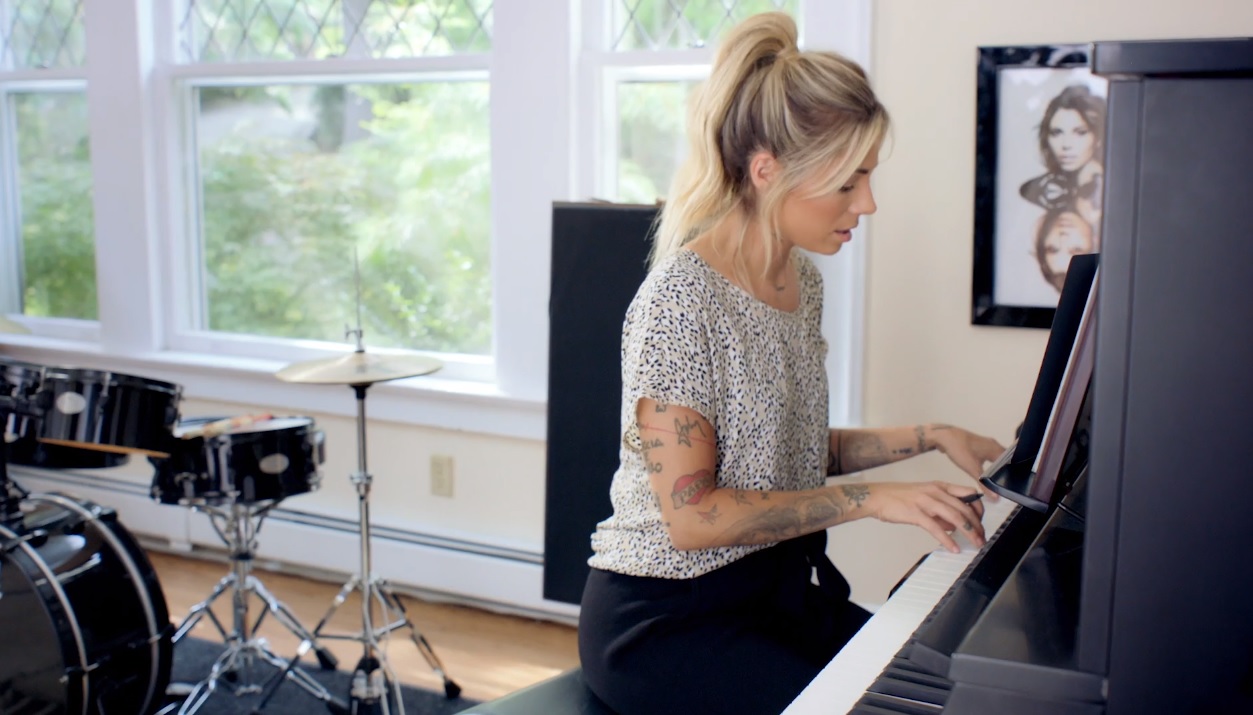
Instagram Video Ads Examples from Creative Humans
Video advertising gives marketers and business owners the opportunity to easily and effectively communicate new products and ideas to their target audience through a variety of popular social media platforms.
As one of the largest social media platforms in the world, Instagram offers advertisers access to a broad audience of potential customers. However, Instagram video ads are different from traditional commercials and should be curated to appeal to the platform's audience. To help you find inspiration for your campaigns, here are eight great Instagram video ads examples from the talented professionals at Creative Humans.
Creative Humans makes it easy to find and hire top video production studios and freelancers. Create a Free Account to get started.
Check Out These 8 Effective Instagram Video Ads
Instagram videos can go a long way in raising brand awareness and increasing conversions, but to achieve these results, it's important to know what goes into creating a successful Instagram video ad. Instagram videos should be short, to the point, eye-catching, and relevant to your audience.
To give marketers a better idea of how to produce an Instagram marketing video that generates results, here are eight effective Instagram video ads:
1. The Knot "Barn"
This short video ad was produced as part of an advertising campaign for The Knot—a wedding planning service that helps couples book venues, plan invitations, make registries, and more.
This ad highlights the company's venue booking services via a 30-second comedic sketch of a man seemingly proposing to his husband-to-be before revealing that he is actually talking to an old barn—his venue of choice. After this reveal, the video introduces The Knot and promises that the company can help couples find their perfect venue and encourages viewers to download the company's app to learn more.
2. Genius Kitchen Promo
Genius Kitchen was a new initiative launched by the people behind Food.com and Food Network. To advertise Genius Kitchen and its new show, GK Now, the company launched a promo campaign that features the network's talent roster of chefs and hosts.
Since this was a new upstart, it was important for the video to be as informative as possible and eye-catching as possible. To do this, the video offers viewers a sneak peek at many of the original shows coming to the network through short conversations with various hosts and specialists.
3. Adidas "Shadow"
This high-energy video was part of a larger campaign for Adidas' NEO brand. Since Adidas is a major company with plenty of international brand recognition, this spot focuses on highlighting the various new products being released under the NEO brand.
With catchy, upbeat music and energetic scenes of a man dancing through Tokyo, this video is perfect for social media platforms like Instagram. It will definitely catch viewers' attention as they scroll through their feeds.
4. Gucci
This short social video was created to meet Gucci's and PUSS PUSS Magazine's need for a shareable video to show off a Gucci outfit. At only 20-seconds long, the video uses all of its time to show off the outfit at different angles with Gucci branding appearing briefly at the beginning and end of the ad.
To create an eye-catching, shareable video, the production talent used a multi-media approach that consisted of both 8mm film and digital.
5. Moncler x Nigel Sylvester
This 15-second Instagram video ad features professional BMX athlete Nigel Sylvester. This was produce as part of a campaign for fashion brand Moncler Genius.
Nigel Sylvester is widely known for his thrilling and appealing digital content revolving around BMX. To capitalize on his following, this ad features Sylvester performing various tricks and stunts while modeling Moncler clothing. This short video is a great example of how influencer marketing can raise brand awareness on social media platforms like Instagram.
6. Harley Davidson "Livewire"
The demand for electric vehicles is rapidly increasing. To meet this demand, Harley Davidson introduced its first fully-electric motorcycle, dubbed the Livewire. Set in a fast-paced urban setting, this ad catches the viewer's attention through energetic scenes of a rider speeding through the city.
Harley-Davidson motorcycles are known for their performance and reliability. This ad highlights the new electric bike's features to convince viewers that this new offering meets the standards established by Harley-Davidson's traditional, gas-powered motorcycles.
7. Marie Claire x Daisy Ridley
Marie Claire is an international magazine that focuses on and is directed mostly toward women. To generate interest in the magazine, the company published this social video featuring Daisy Ridley—one of the film industry's biggest stars.
The ad serves as another great example of how influencer and celebrity marketing can be used to appeal to a brand's target demographic through relevant and relatable content.
8. Audible by Amazon x Christina Perri
Audible is Amazon's audiobook subscription service, which gives users access to a vast library of podcasts, audiobooks, guided wellness, and Audible Originals. One of the service's main selling points is that it gives busy individuals the opportunity to consume popular media while navigating their busy schedules.
To demonstrate this, this Instagram video ad features singer-songwriter Christina Perri, who explains how Audible gives her a chance to relax and escape her busy schedule through on-demand entertainment. The ad finished with an invitation for a free trial to encourage viewers to try the platform for themselves.
Hire Professional Video Production Talent
Instagram is an incredibly popular social media platform with a vast user base. To take advantage of this, marketers and business owners should focus on producing short, appealing video content curated especially for Instagram users.
By hiring professional video production companies and freelancers, brands can create high-value Instagram videos that raise brand awareness, establish authority, and increase engagement.
Creative Humans makes it easy to find and hire top video production studios and freelancers. Create a Free Account or Post a Job to get started.

9 App Demo Video Examples to Inspire Your Next Campaign
Effectively demonstrating how your app works, what it does, and what problems it solves is a key aspect of building awareness and generating new users. One of the best ways to do this is through video marketing .
App demo videos allow businesses and developers to showcase their apps in a clear and engaging manner. In a few minutes or less, you can highlight your app's unique features and show your target audience how they can gain value from your product or service.
To get a better idea of what goes into an effective demo, here are nine great app demo video examples from the talented individuals at Creative Humans!
Creative Humans makes it easy to find and hire top video production studios and freelancers. Create a Free Account to get started.
9 Effective App Demo Examples
There are several key qualities that go into making an effective app video. To encourage new users to download your app, it's important to clearly explain its purpose, what value it offers, and any additional features that separate your app from potential competitors.
Here are nine great examples of app demo videos that effectively draw viewers in and pique their interest through great visuals and effective communication:
1. Google/BBC America Branded Promo
Production Budget: $15,000 - $20,000
Production Company, Creator ID: PRO192JB
Google partnered with BBC America to create an app that gives Google Pixel 2 owners exclusive access to content from the BBC series Blue Planet 2 .
At only 15 seconds long, this short demo video contains all the information viewers need to understand what the app is, what it offers, and where to get it. It begins with an effective hook that appeals to viewers already interested in the nature-focused miniseries, then encourages them to check out never-before-seen content by downloading the app from the link provided at the end of the ad.
2. Babaoo
Production Budget: $18,000 - $26,500
Animation Studio, Creator ID: ANI71JB
Babaoo is a multiplayer video game designed to help users improve their cognitive abilities through a variety of quests and in-game activities.
The video succinctly introduces the app as "the ultimate tool for personal development," which serves as an interesting hook to draw viewers in while also effectively conveying the game's primary purpose.
Over appealing modern 2D motion graphics, a voiceover thoroughly explains the app's core mechanics and discusses how these mechanics help users foster self-improvement. Finally, it closes with a simple yet effective tagline: "Play. Shape your brain. Gain your freedom."
3. HomeAdvisor
Production Budget: $100,000 - $150,000
Animation Studio, Creator ID: ANI100LD
HomeAdvisor puts homeowners in touch with local professionals to help them complete home projects. In 30 seconds, the video's spokesperson quickly explains how viewers can use the app to find professionals for projects of any size, from simple repairs to complete remodels. The video then takes the time to highlight unique features that the app offers, like price comparisons, user reviews, and online appointment booking, before finishing with a CTA to encourage viewers to download the app.
4. Phind App
Production Budget: $30,000 - $55,000
Production Company, Creator ID: PRO72SJ
Phind is an app that helps users discover popular restaurants, bars, shops, and more from anywhere in the world. To market the app, the founder wanted to create an explainer video that looked like a traditional TV commercial.
To accomplish this, the video focuses on a selection of characters that use Phind throughout their day to connect with others at trendy locations in their city. Through this story, viewers are able to learn what Phind is, what it does, and how they can use it to bring value to their everyday lives.
5. Audible App
Production Budget: $15,000 - $22,000
Production Company, Creator ID: PRO17EN
Audible by Amazon lets users listen to a vast library of audiobooks and other original audio-based entertainment. To showcase the app and all it has to offer, Audible commissioned this short app demo video.
This 30-second video walks users through the app's UI step-by-step, first instructing them to log in to access the world's largest selection of audiobooks. The video then highlights several key features, including offline listening, sharing features, customization options, and more.
6. Foursquare Swarm
Day Rate: $750-$1,500
Cinematographer, Creator ID: CIN16AH
Foursquare Swarm helps users keep track of all the places they go by checking in on the app so they never forget their favorite restaurants, bars, and other destinations.
This app demo video starts with a relatable scenario as it poses the question, "Remember the name of that killer bar?" This question introduces a problem while the rest of the video explains how Foursquare Swarm solves this problem in a simple and unique way.
7. Apple App Store
Day Rate: $1,000-$1,200
Motion Graphic Designer, Creator ID: MOT4PH
The Apple App Store hosts countless apps and sees billions of downloads from users around the world. To showcase the App Store's offerings, this video highlights a wide variety of popular apps, from photo editing software to video games and more. This effectively demonstrates the App Store's value and invites viewers to check it out for themselves.
8. NBCU Telemundo
Production Budget: $130,000 - $150,000
Production Company, Creator ID: PRO106JS
To promote the 2019 Latin Billboard Music Awards, NBCU Telemundo wanted to launch a campaign to engage new and existing audiences and encourage them to tune in to the show.
To do this, the creators of this video designed and developed a unique augmented reality (AR) experience. By using AR, viewers could point their phones at the TV screen while watching the awards show to collect celebrity items and access exclusive content. This unique idea incentivizes viewership and active participation.
9. Shapr: Communities Campaign
Production Budget: $2,500 - $5,000
Production Company, Creator ID: ANI9JA
Shapr is a professional networking application that works much like dating and social apps like Tinder and Bumble. Instead of finding dates or friends, though, business professionals can use the app to meet with like-minded professionals in their field.
Intended for social media, this short app demo video uses simple 2D animation to quickly showcase how the app works and finishes with a succinct summary of the app: "Choose your interests. Meet like-minded people."
Hire Expert Talent for Your App Demo
An effective app demo video is a great way to highlight your app's unique features and generate new active users. Professional video production specialists can work with you to help you create a high-quality demo video that effectively appeals to your target audience and generates conversions.
Creative Humans makes it easy to find and hire top video production studios and freelancers. Create a Free Account or Post a Job to get started.
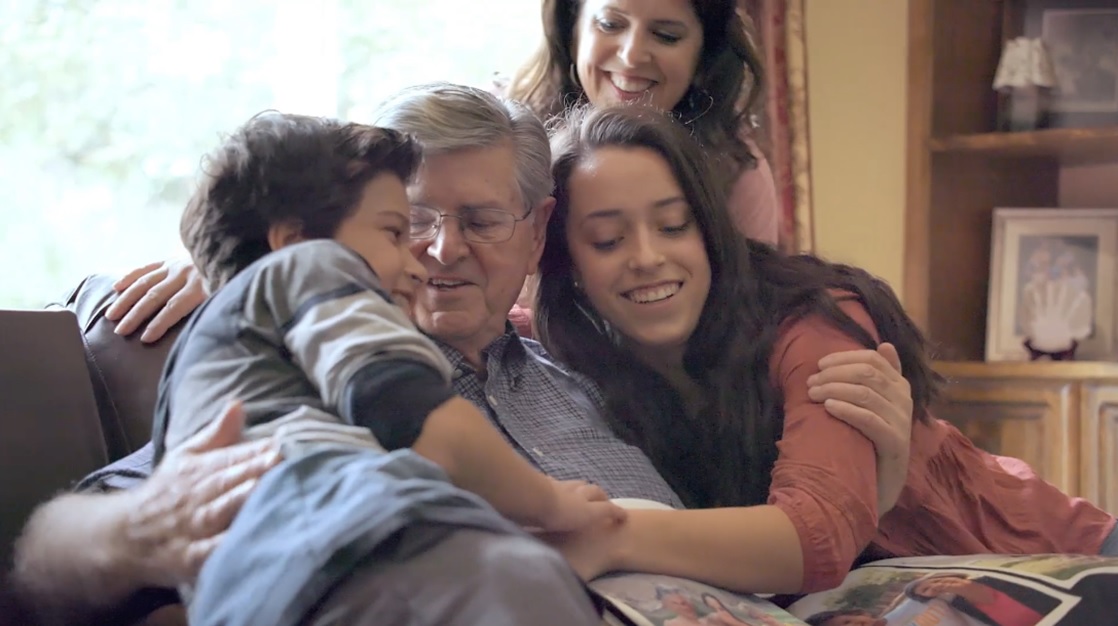
9 Narrative Video Examples from Creative Humans
Narrative videos are powerful marketing tools that help brands connect with customers through entertaining, impactful, and emotional stories. Not only are they a great way to raise awareness for a new product or service, but they can also help businesses strengthen their relationships with their customers.
Creating an effective marketing video can be challenging, but by taking a look at high-quality narrative videos from other brands, marketers can gain valuable insight and plan their own impactful video marketing campaigns. Here are nine effective narrative video examples from the professionals at Creative Humans.
Creative Humans makes it easy to find and hire top video production studios and freelancers. Create a Free Account to get started.
1. Capital One: Leading the Way with Jamestown
Production Budget: $65,000 - $85,000
This production company (Creator ID: PRO244SC), which you will find on Creative Humans, produced three long format and three short promos for this campaign.
This narrative video was created for Capital One as part of a series intended to tell the stories of mid-market business innovators and demonstrate how Capital One helps these individuals achieve success.
By focusing on real professionals who are proven innovators in their industry, this video inspires others to do the same. With a narrative hook, Capital One is able to establish itself as an important partner in the process of innovation.
2. Facebook/NBA: In The League
Day Rate: $800 - $1,250 (Editor, Creator ID: EDI7694AS)
"In The League" was created in partnership with the NBA and Facebook to highlight women in the NBA for Women's History Month. The NBA, as a sport and industry, has historically been male-dominated. This long-form narrative video aims to highlight how several women have established themselves as important figures in the industry.
From media members to coaches, this video effectively tells stories from women around the league and inspires women to pursue their passions.
3. NFL/Verizon: The Team That Wouldn't Be Here
Day Rate: $600 - $1,500 (Editor, Creator ID: EDI7682AM)
"The Team That Wouldn't Be Here" was produced for Verizon and the NFL as part of an award-winning Super Bowl campaign to celebrate first responders.
This campaign was dedicated to telling the stories of several NFL players and an NFL coach whose lives were saved by first responders. This video, in particular, focuses on running back De'Angelo Henderson and how first responders saved his life after a devastating car accident.
By dedicating ad time to raising awareness for underappreciated first responders, Verizon is able to highlight their company values and establish an emotional connection with viewers.
4. Shutterfly
Day Rate: $750 - $2,000 (Editor, Creator ID: EDI7774NS)
Shutterfly is a photography and printing company that lets customers create personalized gifts for others, ranging from prints and mugs to calendars and blankets. As these gifts are meant to be personal and meaningful, Shutterfly wanted to create a video that showcases how people react when receiving them.
To do this, Shutterfly worked with one of our talented Creative Humans editors to create a video composed of real footage of people receiving Shutterfly gifts from family members. These natural reactions show viewers how impactful Shutterfly gifts are and encourage them to buy them for their own friends and family members.
5. Hebrew Home at Riverdale
Day Rate: $3,000 - $10,000 (Director, Creator ID: DIR7872JS)
Growing old is something that scares a lot of people, and moving into a retirement community is often seen as a last resort. To combat this narrative, Hebrew Home at Riverdale created this video to highlight stories from various residents about their positive experiences in the community.
By focusing on real people living in this retirement community, this narrative video is able to emphasize the many positives of getting older, rather than focusing on the negatives that many people tend to get hung up on.
6. Nike/MLB
Production Budget: $380,000 - $400,000 ( Creator ID: PRO7859RF)
This production company (Creator ID: PRO7859RF), which you will find on Creative Humans, produced a feature length documentary for this campaign.
Ken Griffey Jr. is one of baseball's most influential figures. To highlight his life and achievements, Nike and the MLB asked this team to create a documentary based on his journey in baseball.
This film, which debuted as a feature-length documentary on the MLB Network, effectively touches on all of the major moments throughout one of the sport's most celebrated careers, perfectly coinciding with Griffey Jr.'s MLB Hall of Fame induction.
7. Google: Google/NASA Project
Production Budget: $50,000 - $70,000 (Creator ID: PRO7668OO)
This production company (Creator ID: PRO7668OO), which you will find on Creative Humans, was hired by Google to produce a documentary style video for this campaign.
Google's "Project Tango" team partnered with NASA's "Spheres" team to create an autonomous robot for the International Space Station.
To document this collaboration, the production team followed the Google and NASA teams from beginning to end to document every step of their journey. This video serves as an inspiring showcase of the innovation accomplished by the teams at Google and NASA.
8. Discovery Education
Production Budget: $20,000 - $25,000 (Creator ID: POS7629RV)
This post-production company (Creator ID: POS7629RV), which you will find on Creative Humans, created 12 short pieces from an original 3-day shoot that Discovery could use to promote their program and drive viewers to their site.
The post production team worked with Discovery Education and LG to create 12 short videos for a social campaign aimed at promoting their "Discover Your Happy" program.
This program is dedicated to helping young individuals find happiness and set themselves up for success in school and life. To highlight the importance and impact of this program, this video showcases a series of interviews with students and educators in which they discuss the importance of finding happiness in life. The video ends with a call to action, encouraging viewers to learn more about the program.
9. AT&T: U-Verse Reel
Day Rate: $900 - $1,500 (Editor Day Rate, Creator ID: EDI7692JG)
This narrative video was put together to showcase the work done by advertising agency DK for AT&T: U-Verse. In under two minutes, this brief reel encapsulates all of the work DK did for AT&T via an upbeat montage composed of clips from a variety of marketing videos and advertisements. This video serves as a great example of how narrative videos can be used to tell a brand's story and raise awareness for their work.
Hire Professional Video Production Talent
Narrative videos are excellent marketing tools that brands can use to establish emotional relationships with their audience, raise brand awareness, and promote causes important to their business.
By working with professional video production freelancers and studios, brands can produce compelling, innovative, and impactful narrative videos that reflect their values and promote audience engagement.
Creative Humans makes it easy to find and hire top video production studios and freelancers. Create a Free Account or Post a Job to get started.

The Ultimate Video Content Marketing Guide
Video marketing is a critical aspect of any online marketing strategy. Videos offer an accessible and entertaining way to engage with your audience and are incredibly versatile. They can help you introduce new products, explain new services, build a community, and more.
By developing and implementing an effective video content marketing strategy, businesses can boost marketing ROI, increase social media engagements, improve search engine rankings, and enhance other aspects of their digital strategies.
If your business isn't currently prioritizing video marketing, now is a great time to get started. Whether you're looking to launch your first video marketing campaign or are interested in ways to improve your current efforts, here's everything you need to know about video content marketing.
Creative Humans makes it easy to find and hire top video production studios and freelancers. Browse the Directory , or Post a Job to get started.
Benefits of Video Marketing
Before launching a new marketing initiative, it's important to answer the question: is it worth the time, effort, and financial investment?
When it comes to video content marketing, the answer is a resounding yes. Video marketing offers businesses a number of valuable benefits:
- 57% of consumers aged 18 to 24 prefer video content from brands over other types of content marketing.
- Social videos generate 12,000% as many shares as text and image content.
- Nearly 90% of marketers claim that video marketing has boosted their marketing ROI.
- Videos on landing pages can significantly increase conversion rates .
These statistics indicate that video is one of the most powerful marketing tools businesses can use to elevate their online performance. If you're ready to take advantage of these benefits, here's how to plan your video content marketing strategy.
Planning a Video Content Marketing Strategy
Video marketing involves several important steps. From finding your target audience and writing a script to distributing your video, it's important to carefully plan your project to ensure it achieves the desired results. Here are the essential steps required to plan an effective video content marketing project:
Establish Your Goals
First, to create an effective video, it's important to establish your goals. Video marketing can be used at any stage of the marketing funnel—i.e., to build awareness, generate leads, and drive conversions.
For example, if your intent is to raise awareness for your brand, your video should succinctly introduce your company and explain how your brand solves a problem that your target audience faces. If your intent is to drive conversions, you should focus on explaining the advantages of your product or service and how you stand above your competition.
Types of Marketing Videos
Depending on your goals, there are different types of marketing videos that may suit your purposes better than others. Common types of marketing videos include:
- Social Videos: Social videos are short clips or ads designed specifically for quick consumption on platforms like Facebook, Twitter, and Instagram.
- Explainer Videos: Explainer videos are great for brands that need to introduce a new product, service, or concept to their audience.
- Commercials: Commercials or promotional videos are brief advertisements designed to grab viewers' attention and highlight your company's best features.
- Testimonials: Testimonial videos help brands highlight stories from satisfied customers in the hopes of convincing viewers to take action.
- Docu-Style Storytelling Series: Creative a compelling narrative with a documentary-style story.
- Integrated Brand Marketing: With a decline in ROI on TV ad spend, it's more important than ever to create integrated video campaigns that use both TV and digital ads together. Bumper ads, live streams, soundless social videos and more can be great to add to your integrated mix.
Before beginning production on your video, be sure to consider which type of video is most likely to help you achieve your marketing goals.
Find Your Target Audience
Who is your video for, what is your video's purpose, and where does your target audience spend most of their time? Answering these questions will help you determine what type of video you should make and where to distribute your video. If your target audience spends a lot of time on Twitter, for instance, your content should be curated for that platform.
Platform Distribution
There are several paid and organic ways to distribute marketing videos. For organic interactions, you should publish your videos on your brand's owned channels. This includes your company website, social media channels, blogs, and email newsletters.
Videos can also be distributed through paid channels as well, including paid search engine and social media ads, influencer marketing, and sponsored content. Paid media is a great option for videos intended to raise brand awareness.
Track Video Performance
The key to developing and improving your marketing strategy is to continually track performance over time. For video content, there are several KPIs you should be sure to keep an eye on, including:
- Impressions
- Unique views
- Watch time
- View-through rate
- Clicks on links attached to videos
- Calls
- Conversions
These KPIs will help you determine whether or not your video is effective in raising brand awareness, encouraging interaction, and generating sales.
Set a Realistic Budget
Without setting and maintaining a realistic budget, it's going to be difficult to maximize your ROI and achieve your intended results. Determine what you'll be able to shoot in-house using your own equipment and what you will need to outsource. Producing a marketing video includes:
- Writing a script
- Storyboarding
- Hiring actors or voiceover talent
- Sound editing
- Post-production effects
- Renting equipment
- Paid media placement
- And more
Be sure to shop around to determine what you should be paying for each of these, and create a realistic budget based on your quoted rates. While it's important to stick to your budget, be careful not to cut corners, which may result in a low-quality, ineffective final product.
Hire Professional Video Production Talent
Creating and implementing a comprehensive video marketing strategy is a great way to raise brand awareness, increase sales, and retain your existing audience. However, planning your strategy is only the first step.
With an effective content strategy in place, it's important to hire the right talent to execute your ideas effectively. By working with proven video production professionals, you can create high quality video content that appeals to your target audience.
Creative Humans makes it easy to find and hire top video production studios and freelancers. Create a Free Account or Post a Job to get started.
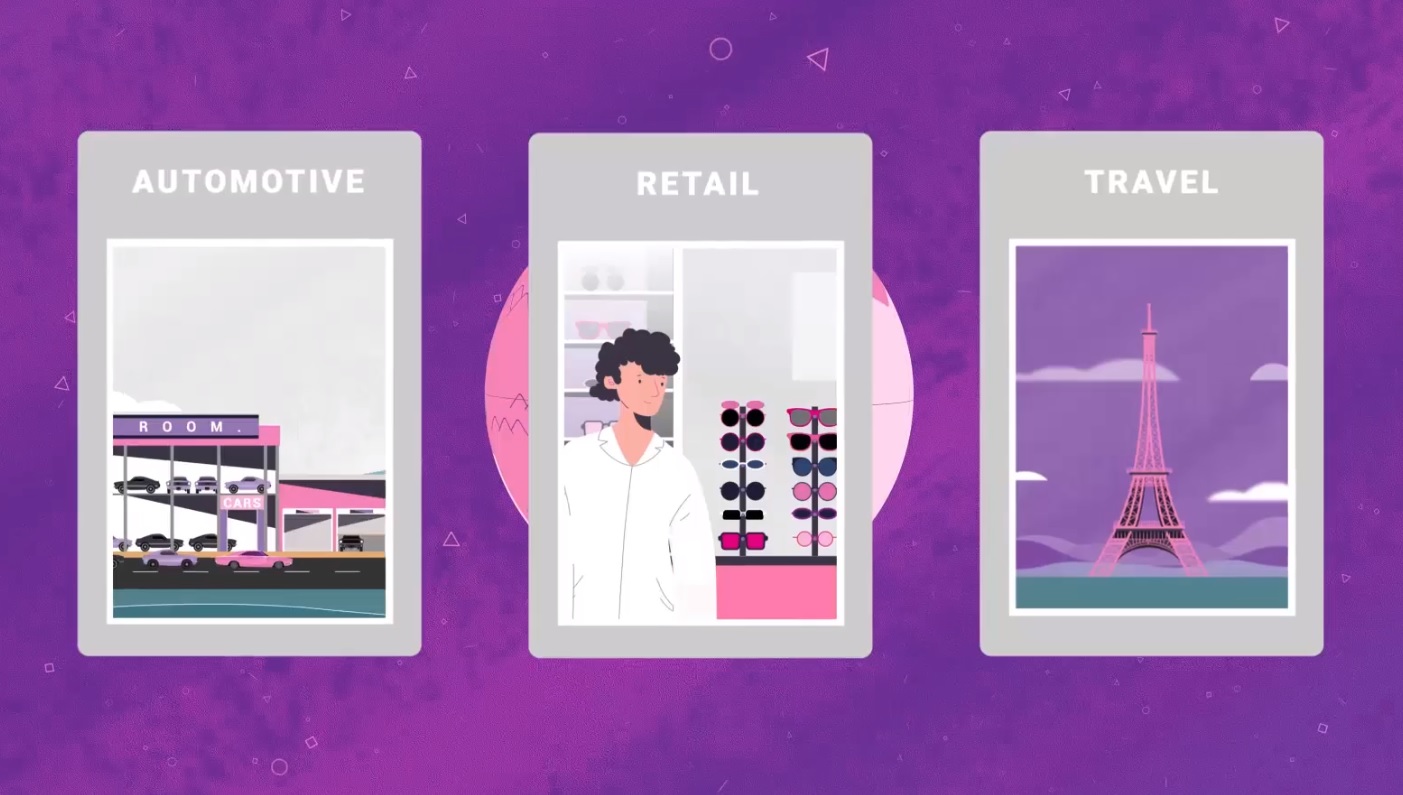
6 Animated Explainer Video Examples from Creative Humans
Animated explainer videos offer an appealing, simple, and effective way to explain new products, services, and other business initiatives in an accessible manner. Brands and businesses can curate their videos to appeal to their target demographics and convey important messages via an entertaining medium. In many cases, animated video can be a more cost-effective and more engaging alternative to live-action commercials.
To help business owners and marketing managers understand what goes into making an effective animated video, here are six great animated explainer video examples from the professionals at Creative Humans.
Creative Humans makes it easy to find and hire top animation studios and freelancers. Create a Free Account to get started.
6 Examples of High-Quality Animated Explainer Videos
Whether you want to introduce a new product to your target market or you want to introduce your company to new audiences, animated explainer videos offer an elegant solution. But to achieve the best results possible, it's important to plan your project carefully. To help you get some inspiration for your project, here are six effective animated explainer videos that use eye-catching art and high-quality writing to fulfill their purpose:
1. Microsoft Education: A Complete Solution
Project Budget: $45,000 - $65,000
Microsoft Office 365 is Microsoft's proprietary software ecosystem that includes a variety of tools for business, education, and personal use. Microsoft commissioned this animated explainer video to explain how these tools can be used in an educational environment to improve productivity, collaboration, and efficiency.
The video uses 2D animation and motion graphics to showcase the various tools available in Office 365. This advertisement also uses statistics to demonstrate how these tools translate to noticeable improvements in student performance.
2. iStaging Product Overview
Project Budget: $7,000 - $12,000
To demonstrate its product succinctly and effectively, iStaging commissioned this animated video, which emphasizes how the company's product helps capture, create, and share 360 VR tours.
The video uses 2D animation with some 3D elements to create a playful and informative explainer. The animators even use real screens to demonstrate the product throughout the video. Not only does this video effectively demonstrate how the product works, but it also explains how it can provide value to users' clients.
3. Moodcaster Software Demo
Project Budget: $7,000 - $12,000
This video was created to introduce Moodcaster, a software program that serves as a casting platform for talent and casting agents.
To demonstrate how the platform functions, the creators used screencasts combined with animation and real footage. Rather than using a voiceover, the video uses simple typography to succinctly explain key features and capabilities.
The first half of the video explains how talent can use the platform to find opportunities, while the second half explains how casters can use it to simplify the casting process. In this way, the video is able to address both halves of the platform's audience in a single advertisement.
4. Skitter Motion Graphics Explainer
Project Budget: $7,000 - $12,000
Skitter's CogniDesk is a cognitive automation suite that helps companies build IT Support Virtual Assistants. This allows companies to enhance their IT support capabilities and streamline their technology operations.
The video combines both 2D and 3D motion graphics to demonstrate the product, while the accompanying voiceover explains how CogniDesk can save businesses money and improve business productivity. To wrap things up, the video advertises a free trial to encourage viewers to sign up.
5. Theia's History
Project Budget: $18,000 - $25,000
Theia's History is an educational video that explains the theory that the moon was once a planet named Theia. As children and families are the target audience for this video, it utilizes a colorful and playful 2D animation style to appeal to its target demographic. The animation synchronizes with the informative voiceover to retain the viewer's attention throughout the explainer.
6. Apigee OmniConnected
Project Budget: $32,000 - $51,000
Apigee is a cloud service created by Google for API management. It allows leading companies and app developers to design, secure, and scale application programming interfaces (APIs). To introduce this service, Google commissioned this animated video with the intention of providing viewers with a brief overview of the product.
At three minutes in length, this explainer video introduces Apgiee's key features and demonstrates various use cases to show how this service can benefit businesses in a variety of industries. Finally, the video encourages viewers to visit a website to learn more about the service and convert them into customers.
Hire Professional Animation Talent
As demonstrated by these examples, animated explainer videos are an incredibly effective marketing tool for businesses looking for an easy way to introduce new concepts to their audiences.
To maximize the results of your video campaign, partner with professionals in animation who can work with you to plan and execute an animated video project that captures your audience and conveys your message.
Creative Humans makes it easy to find and hire top video animation production studios and freelancers. Create a Free Account or Post a Job to get started.

7 Facebook Video Ads Examples from Creative Humans
Video marketing is incredibly powerful, and Facebook advertising in particular is a great way to attract target audiences through engaging and persuasive video content. Facebook, like all social media platforms, offers businesses the opportunity to connect with their customers in a more personal and meaningful way. Marketers can take advantage of this by creating curated video ads that appeal to their ideal customer's interests, wants, and needs.
For business owners interested in elevating their Facebook marketing strategy, it can be helpful to explore examples for inspiration. Check out these Facebook video ads examples from Creative Humans that are effective in their messaging and lead generation capabilities!
Creative Humans makes it easy to find and hire top video production studios and freelancers. Create a Free Account to get started.
7 Examples of Effective Facebook Video Ads
Effective video advertisements can generate incredible ROI, but it's important to carefully plan your video production project to ensure the final product clearly reflects your business goals and appeals to your target market.
Below are seven great examples of Facebook video ads that utilize various marketing tactics to appeal to viewers' wants and needs and encourage action on the part of the consumer. We hope these give you some ideas for your own campaign!
1. ProBar: Strawberry Bolt Energy Chews
Budget: $25,000 - $45,000
ProBar makes 100% plant-based, nutritious, and delicious meal bars, energy chews, and similar products geared toward health-conscious consumers looking for a convenient but healthy way to supplement their normal meals.
This short Facebook video ad is only 10 seconds in length but is able to effectively convey the bouncy, fun energy behind ProBar's easy-to-devour energy chews. The brevity of the ad makes it more accessible to Facebook users who are just scrolling through their feed and likely won't engage with lengthy commercials.
2. ProBar: Wholeberry Blast Meal Bar
Budget: $25,000 - $45,000
The Wholeberry Blast Meal Bar by ProBar is a healthy, convenient meal replacement bar made with real ingredients. Of course, when it comes to health foods, consumers are often skeptical that products are as healthy as they market themselves to be.
To combat this concern and appeal to health-oriented consumers, this 10-second video ad unwraps a ProBar and deconstructs it to show all of the ingredients that go into making this product a healthy yet delicious snack.
3. ProBar: Peanut Butter Chocolate Chip Meal Bar
Budget: $25,000 - $45,000
Similar to the ad for the Wholeberry Blast Meal Bar, this ProBar commercial makes it clear that the company's Peanut Butter Chocolate Chip Meal Bar consists of 100% plant-based, real ingredients.
The short video ad starts by introducing the three ingredients that make the bar—peanuts, chocolate chips, and oats—and shows them morphing into the final product to assure viewers that there are no mystery ingredients in the product.
The commercial then closes on a clear image of the packaging with "100% plant-based, gluten-free, non-GMO" displayed under the product to emphasize its most appealing qualities.
4. Adidas "Shadow"
Budget: $150,000 - $170,000
Adidas is a brand that needs no introduction. So, instead of focusing on the brand, this 30-second ad spot uses all of its available time to show off the products being sold under the Adidas NEO line.
Filmed in the streets of Tokyo, this commercial maintains a fun, playful energy and a bouncy soundtrack that draws the attention of viewers scrolling by. Camera shots focused on the model's feet effectively show off the product in a variety of settings.
5. Garnier Skin Active #Howlmask
Budget: $1,000 - $3,000 (Day Rate)
This Facebook video ad was part of a campaign to show off a line of Garnier Skin Active sheet masks that only take 15 minutes to hydrate the skin.
Beginning with a quick introduction of each of the masks and their benefits (i.e. "hydrate," "mattify," and "glow"), the commercial uses its 40-second runtime to emphasize that the masks can be worn while going about your normal activities, such as working out, eating breakfast, or getting ready for the day.
The commercial finishes with a call-to-action encouraging viewers to try these new Garnier sheet masks. The hashtag '#HowIMask' is suggested to spur social media shares.
6. Joe Knows Fish
Budget: $1,000 - $3,000 (Day Rate)
Joe Knows Fish is a short video documentary created for Citarella® Gourmet Market - The Seafood Authority. The ad coincides with the release of Joe Gurrera's book, Joe Knows Fish .
Filmed over the course of one day—while Joe prepared a complete dinner for the participants—this commercial carries a truthful, authentic tone to showcase Gurrera's professional expertise and knowledge. This is further emphasized in the video's closing tagline, "My name is Joe Gurrera. I'm not a chef, but I know how to cook fish," before closing on a still image of the Joe Knows Fish cookbook.
7. Harley-Davidson // LiveWire
Budget: $140,000 - $160,000
Harley-Davidson is a reputable, widely-recognized, and storied American motorcycle brand. As electric vehicles become more popular among mainstream consumers, Harley-Davidson wanted to make an impression when it introduced its first fully-electric motorcycle—the LiveWire.
To accomplish this, this Facebook video ad takes place in an exciting urban setting with a masked driver speeding through the city without limits. Text overlays such as "0 to 60 in 3 seconds," "no clutch," and "no shifting" highlight some of the bike's key qualities to assure potential buyers that the product's fully-electric design does not interfere with performance.
Hire Professional Video Advertising Production Talent
Facebook's vast user base presents an amazing opportunity for digital marketers and business owners to appeal to their target audiences through short-form video advertising. From introducing new products to launching new brands, Facebook video ads are an incredibly flexible and effective marketing tool. By partnering with a professional commercial production company or freelancer, you can produce a high-quality Facebook ad that achieves strong results.
Creative Humans makes it easy to find and hire top video production studios and freelancers. Create a Free Account or Post a Job to get started.
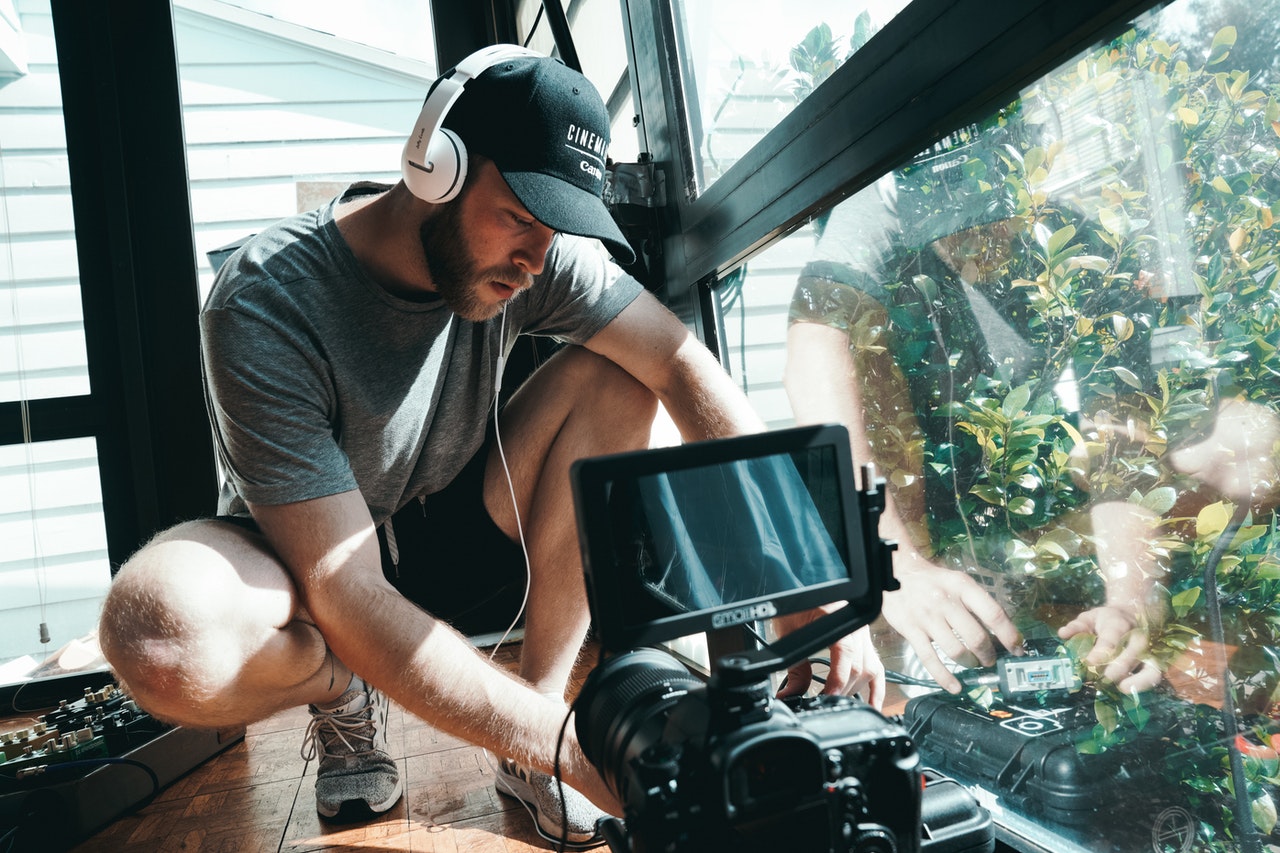
How to Record Audio for a Film: Audio Setup for Filmmaking
Even if you are working with the most talented director of photographer in the world, your film will not succeed without skilled handling of audio and sound design. Working with small crews, it is absolutely critical that you respect the needs of your audio men and women. If you are a one-man band, make sure you put as much effort into recording clean audio as you do the beautiful footage. In this post, we'll walk you through how to record audio for film, including essential equipment and tips to improve your audio setup for filmmaking.
Consider Hiring an Audio Specialist
Before we get started with the audio setup guide, if you know nothing about audio and have the time and resources to hire/recruit a dedicated audio person, do it. Even if you know a ton, if you are directing or holding another critical position on set, you will want to leave this crucial task to someone focused on the job. Much like how you have a director of photography for images, you will want someone in charge of sound.
Essential Audio Equipment for Film
Let's start by taking a look at some basic equipment necessary for your filmmaking audio setup:
Recorder
Among the easiest ways to improve audio quality is to pick up a dedicated recorder. Let's be honest, most in-camera recording is absolutely terrible. A Zoom H5 , for example, is a simple way to take control of your on-location sound recording. This device gives you control over levels and offers its own higher-quality mics recording to uncompressed audio formats. Another advantage here is that it has XLR inputs, allowing the use of professional-quality microphones.
Microphones
There are two basic mic choices for filmmakers: shotguns and lavaliers. Most people are familiar with these to some extent, but here are the basics:
- Shotguns are the directional mics found at the end of lengthy boom poles or mounted to the top of a camera.
- Lavaliers are the tiny mics hooked up to the lapels of news anchors.
Shotguns are useful for:
- Situations where lavaliers would look out of place
- Capturing sounds or voices without picking up any background noise
- Recording sound from a distance
Lavaliers are useful for:
- Recording audio from someone who is able to wear a pack or doesn't necessarily need to hide their mic for the shot
- Recording audio where a boom mic is unwanted or unfeasible (i.e., a bride and groom at a wedding)
Microphone Setup
If you are running the show on your own, the best microphone choice is likely going to be lavaliers, which can be sync'd up later, and an on-camera shotgun mic, which can be plugged directly into your camera.
Rode is famous in this arena for the line of VideoMics, and they are a great place to start if you are looking now. For lavaliers, you can go with wireless options, though if you are just starting out, a reliable recorder like the Tascam DR-10L is extremely helpful. Another option is the Zoom F1 Recorder , which can function as a standalone audio recorder, an on-camera shotgun, or a belt pack recorder for a lavalier depending on the situation at hand.
Obviously, there is a lot more gear you can pick up in the audio world, but if you can learn to master these first, you can easily grow your kit later on. Just keep in mind that if you are going with an on-camera mic option, a nice windscreen can work wonders.
Audio Recording Tips for Film
Now that we've covered the basic equipment required for your filmmaking audio setup, let's discuss some tips to help as you learn how to record audio for film:
Watch Your Levels
Watching your levels is among the most important steps. Best practice here is to keep the peaks between -6 to -12 dB. If you are constantly running higher than this, you run the risk of distortion if anything breaks 0 dB. If you are lower than this, you may have to push significantly in post, which may reveal noise. To make sure you have the best overall quality, make sure you set your recorder to WAV with a minimum of 48kHz and 16-bit.
Recorder Settings
Many recorders have functions that will help you capture cleaner audio at the start, such as a limiter or low-cut filters. Starting with these two can help filmmakers who are new to audio out.
- A limiter can help prevent distortion if something happens to momentarily clip because it's too loud. Note that a limiter can introduce its own noise, so just be mindful of that when planning and recording audio for your film.
- A low-cut filter can be set to remove low-frequency tones, like those from a fridge or air conditioner in the background. When recording, keep in mind that a low-cut filter can result in thinner sounds if the person has a deep voice.
- Dual recording records simultaneously at two different gain settings so you don't accidentally ruin all your audio if volumes change drastically mid-recording or you simply happen to have a setting wrong.
Use Quality Headphones & Monitor in Real Time
This next tip is arguably the most important: buy good headphones, and make sure you are monitoring in real time. Absolutely critical to audio capture is making sure you are actually recording usable sound. You wouldn't record a shot without paying attention to or reviewing the footage on a screen, so don't record audio without listening to it.
There isn't even a need to get the latest and greatest set of cans, just something good enough that you can hear when that truck blew its horn in the background or when the actor brushed against their mic in the middle of a line. Some good picks are the Sony MDR-7506 and Audio-Technica ATH-M40x , both of which are very affordable and worth every penny.
Use a Slate or Clapboard
This recording tip is to make sure your editor doesn't pull their hair out: use a slate, clapboard, or some other indicator to help with syncing audio and video. If you shoot footage without an indicator, your editor will not happy. Make everyone's life a little easier by properly noting and slating your takes so that the syncing procedure can be as seamless as possible. Especially since nowadays you can rely on software to perform syncing for you, the better you handle it in production, the more likely these systems will work.
Final Thoughts
Audio can make or break a film or short video. While many people will actually put up with lower quality video, bad sound will result in people turning it off. Make sure to let us know any questions you may have for recording audio for video productions—and stay tuned here for the latest news and tips on filmmaking!
Creative Humans makes it easy to find and hire top video production studios and freelancers. Create a Free Account or Post a Job to get started.

Music License Cost Guide: How Much Does a Music License Cost?
An often-forgotten aspect of an indie movie budget is audio—more specifically music. When you first start out, you may think that ballad from your favorite band or hit electronic dance tune is perfect for your scene. In some cases, you may be just fine using these. In most instances, however, even if all you do is upload to YouTube, you will run into copyright issues and not be able to use the tracks without paying. Fortunately, there is no shortage of online resources to find, create, and license music for your films. In this music license cost guide, we'll walk you through the assortment of options available to you.
Why Does Music Cost So Much?
First let's talk about why music costs this much, and why you should absolutely be paying for it. Music creation and songwriting is an art, just like filmmaking. If you expect to be paid for your videos, you should also support other arts that help you create said videos. Music deserves to be paid for. While some artists may let you use tracks for free out of the goodness of their hearts, you must respect their wishes. With that out of the way, here are some major options for filmmakers to get the music license needed to include music in their works.
Subscription Services
A relative newcomer to the world of music licensing, these subscription-based sites have an incredibly appealing offer of unlimited music for one flat monthly/annual rate. These are perfect for two types of video makers: beginners and high volume.
If you are pumping out multiple videos a week for your channel, the cost of licensing new songs each time individually can quickly add up. Or, if you are a beginner experimenting with various structures and songs as you make your first couple videos, it may be best to start with a service that isn't going to charge more for just one more song. Currently, some of the most popular music subscription services for filmmakers are Artlist and Soundstripe . Costs for these services is between $10-20 a month.
If you produce 4-5 videos in a month and others just 1-2, you can likely come out ahead in terms of cost with a music license subscription service while still having a good variety of tracks available. However, there is one downside to these more affordable systems. Many people tend to use these services, and track selection/variety tends to be more limited. In some instances, you may find that someone else is using your favorite track in their video. Even so, subscription music libraries are still great for their affordability, if not for their exclusivity.
Standalone Music Licensing
For those looking for either higher quality or more distinct music to match an important moment in their film, consider standalone music licensing. This can also be a good option if you need some more solid licensing terms in order to ensure distribution for your movie.
Sites like the Musicbed and Premium Beat provide these services, but keep in mind that pricing starts to go up from here. A single song for a single use, for example, may cost around $50-200, depending on where you plan on publishing the video and how many eyes you expect to have on it. This can quickly balloon. If you want to some music as an intro to a series with an expected audience of over half a million views per episode or want to start screening at festivals for potential sale of the film, your total music license cost may be bumped up into the thousands.
As a general rule of thumb, licensing music for each video generally results in an overall higher quality. This is a pay-for-what-you-get situation. If you are willing to pay, you may find more unique tracks that are better suited to your project.
Hire Someone to Score
There is also the option to have someone score your film. When done right, this is one of the most effective ways to create a soundtrack that will elevate your film. However, this is easily the priciest way to get music for your production, requiring you to hire someone to compose the music as well as have musicians to perform and record the final product. Easily in the thousands and tens of thousands of dollars range, there is a reason that big-budget productions have their own scores done. They do it because the sound works with the image in such an intimate manner. While a custom score can be costly, it can also provide unique and exceptional results.
An alternative would be to find local musicians who may want to be a part of your project. Depending on your budget and their goals, you may be able to help each other out. Networking through friends or even using sites like SoundCloud may help you find some artists who will work with you and your budget to create a better piece of art.
Do It Yourself
The final option is to do it yourself. This can be the cheapest method, and modern software like Apple's GarageBand has made it much easier to record and mix your own songs. It is also the most difficult, as producing a song can be just as difficult as making a movie. If you have the time or energy and want everything to be as perfect as can be, this is still a legitimate option these days.
Software is key here. Some new options even make it possible to compose tracks along with the tone of your film. A good example of this is Filmstro , which lets you move sliders as your film plays to control the flow of the music. You don't even need to know anything about mixing to do it. It is also easy to pick up some professional audio software, use some built-in virtual instruments, add on your own recording, and then create a nice piece without too much effort, relatively speaking. DIY is definitely an interesting option that can be affordable.
Final Thoughts
There is a lot of inexpensive good music out there that you can use in your video projects. There is also a lot of free music that may help you get by. But, if you are serious about your project and if you are putting any money into the budget to ensure your film looks good, there is no sense in not devoting a small portion of your budget to getting the music that will take your project up a notch. Making a film sound good is just as important as looking good, so make sure you devote resources accordingly.
We hope this music license cost guide has helped you to better understand potential costs for various licensing options, so you can make the right choice for your project. Do you have a favorite place to find music or musicians to help with your film projects? Be sure to let us all know and keep on here for more news and tips on filmmaking.
Creative Humans makes it easy to find and hire top video production studios and freelancers. Create a Free Account or Post a Job to get started.
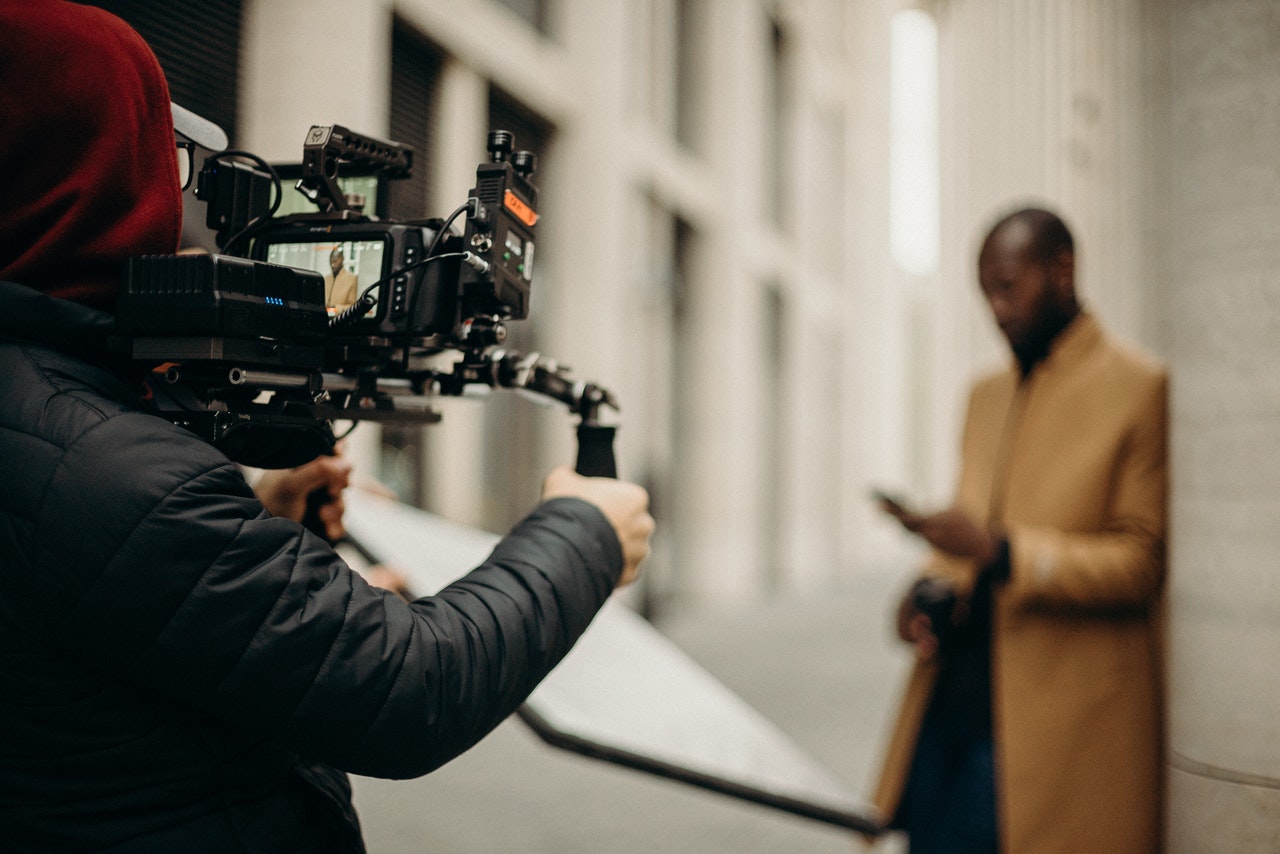
What is a Gimbal Camera Stabilizer?
Gone are the days of dedicated Steadicam operators, where only the most highly-specialized individuals were capable of creating smooth handheld movements with heavy cameras on film sets. Nowadays, we have cameras that weigh less than a pound and are affordable for the average consumer—plus, we have lightweight tools that will allow anyone to stabilize their cameras. Known as gimbals or simply handheld stabilizers, these tools come in all shapes and forms. Here's what you need to know about gimbal camera stabilizers!
Motorized vs Mechanical Gimbals
Perhaps oversimplifying things a bit, there are two main options for gimbal camera stabilizers: motorized and mechanical. It is easy to tell the difference. One takes batteries, and one doesn't. But there are a few other distinct differences that should guide your choice here.
- Mechanical gimbals rely on precise balancing and counterweights to smooth out any movements. Generally, mechanical options like the Steadicam Merlin 2 are more affordable and simpler.
- Motorized gimbals use brushless or servo motors along with motion sensors to precisely counteract any movements. Motorized stabilizers can be more effective and tend to offer enhanced controls. If you can afford it and won't have an issue with batteries, go for a motorized option like the DJI Ronin-S . There are two main types of motorized gimbals, including servo and brushless. Both tend to work well, but it is well established that brushless work better.
Payload/Weight Capacity
When shopping for a camera gimbal, perhaps the most critical spec will be the payload or load capacity. How heavy is your camera system? Something like a DSLR with a prime will be fairly small and not require anything too hefty, while a camera like the Canon C100 Mark II will take a serious piece of gear. Take note of size and balancing abilities of the stabilizer as well. If you can't get it balanced, it doesn't matter how much weight the gimbal can support.
Number of Axes
There are gimbal stabilizers out there that claim to work on five different axes. There are also some that only do one. Let's be honest, unless you need something inexpensive or for a very specific use, go with 3-axis systems. This will give you the classic stabilization you expect from handheld stabilizers. Specifically, these three axes cover roll, tilt, and pan.

One-Hand? Two-Hand? Mounting?
In terms of preference, one of the most important decisions is how you are going to hold the gimbal.
- Two-handed gimbals. The most recognizable gimbal is the two-handed option. This provides a balanced but wide setup that is comfortable to hold for long periods. Unfortunately, most of these require their own stands to balance and sit down, since the camera hangs down below the handles.
- Single-handed gimbals. Single-handed options are becoming more and more popular, because they pack down easily. Plus, if a mini tripod is attached to the base, they can be quickly set down.
- Harnessed gimbals. Another option is to add a harness to the stabilizer. This is meant for longer shoots, as anyone who has held a stabilizer for more than a few minutes at a time knows that they can get heavy quick.
- Mounted gimbals. Some gimbals offer options for being mounted to drones or remote-controlled cars. Make sure you find something that works for all the situations you can imagine.
Additional Features
The last thing to decide on is whether you need an expandable system with plenty of accessories to improve usability. DJI has one such system with the ability to add on various wheels to control the camera's zoom or focus or even remotely control the gimbal from a distant position. Also, you will want to look at the various controls that are available to you. A joystick, for instance, can let you perform smooth pans and tips, while more elaborate setups will let you do rolls, hold the gimbal upside down for shots closer to the ground, or even do all this smoothly while using it.
Final Thoughts
Gimbal camera stabilizers are one of the most interesting tools for getting smooth, professional-looking footage. Do you have a favorite stabilizer or would you prefer a solid tripod for your work? Let us know and stay tuned for more tips and tricks on filmmaking!
Creative Humans makes it easy to find and hire top video production studios and freelancers. Create a Free Account or Post a Job to get started.
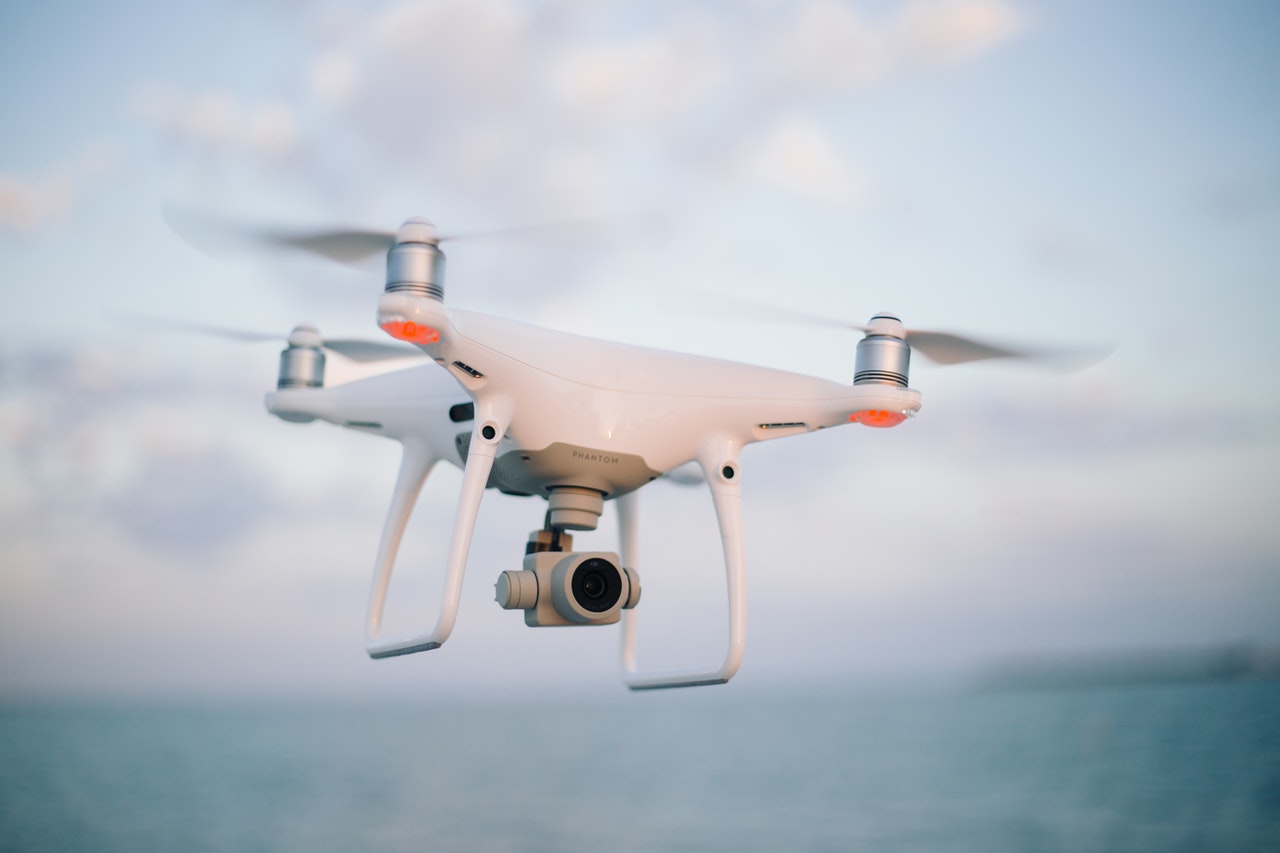
Ready for Takeoff? The Drone Pre-Flight Checklist
Becoming a remote pilot can be as easy as buying a drone and flying it up and over the woods behind your house. It can also be one of the more dangerous aspects of a film shoot, as drones can cause accidents, injury, and property damage if improperly used. Before you take off, be sure to go through this drone pre-flight checklist!
1. Commercial Use? Get FAA Certified
One important facet of drone operation in the US is that if you plan on using a drone for commercial applications (you are making money from it), you will need to get FAA certified. Don't worry, this is a relatively straightforward process. All you have to do is study for and take the sUAS test about basic drone operation and flight rules. Doing so results in an official registration and ID card from the FAA. Plus, if you study properly, you will learn everything you need to know about flying your drone and the various rules related to drone flight. Some of it is actually quite interesting!

2. Understand No-Fly Zones
This is super important for any safe flight and should be a part of any drone pre-flight checklist. Respecting no-fly zones also keeps you and your crew out of hot water. A lot of this is common sense, like don't fly next to an airport. But there may also be some lesser-known things, especially if you travel.
For example, Washington, D.C. is a no-fly zone all over, for the obvious national security reason. Many state parks now require pre-approval for drone flights too. Look up all the laws and rules instituted where you plan on working before attempting a flight.
An extra precaution to take is to use one of a number of smartphone apps to make sure it is safe to fly before taking off—though be aware that these may not be 100% accurate. Another thing to know is that the general height limit for drone operation is ~400 feet.
3. Visually Inspect the Drone
So, you got certified and now you are in an area where it is safe to fly. Good luck! But actually, here is one of the most important and easily overlooked pre-flight steps: inspect the drone. Look over the drone and make sure all the cables and wiring looks good, the battery is securely fastened, and the propellers are clean and undamaged. Any problems here can cause huge problems when the drone is in the air—and by then, it may be too late!
4. Batteries Charged and Memory Cards Empty
Now it's time for your actual flight prep. Be sure to charge your batteries, and always use fresh memory cards.
- Mind the battery. Current drone models will only get about 20-25 minutes of flight time on a single battery, which is much less actual shooting time than you would think. Connecting to the drone burns battery. Testing out the camera prior to launch burns battery. Everything burns battery. And there is no way you are going to be flying until the battery is down to 1% anyway, for pure safety reasons.
- Memory card management. Always make sure your memory cards are ready for use. It's the worst feeling in the world to line up that perfect composition just as the light perfectly hits the scene and then getting the "memory card is full" message when you tap record.
5. Program Return to Home and Other Safety Functions
Read your drone's manual and make sure all the safety functions are set up and functioning properly. Things like return to home or distance limiters may need to be programmed. The last thing you want is to hit RTH in an emergency and have the drone shoot off in an unexpected direction. Many drones also have options for max speed, max height, max distance, etc. It is well worth looking into these things.

6. Check Weather Reports
If you take the FAA tests, you will learn how to read METAR reports that tell you important information about the weather and even crucial differences at different altitudes. Fortunately, most drone flights take place far below the most dramatic shifts in weather. However, knowing whether it is windy or going to thunderstorm in the next hour can help. Weather can dramatically impact how your drone handles, so be sure to include a weather check in your drone pre-flight checklist!
7. Realize You May Lose the Drone
Every flight is different, and this is still developing technology. Mentally prepare yourself for the fact that the drone may not come back in one piece, if at all. You might have to swerve to avoid a pedestrian who came out of nowhere, or for some reason the wireless connection may just cut out and the drone will fly directly out over the ocean. Accidents do happen, and in some cases, you may have to make a choice between saving your drone or risking injury to an individual. Always choose the option that keeps people unharmed.
Final Thoughts
The key to any good flight is safety. Going through this drone pre-flight checklist is just one more precaution that will keep you and others as safe as possible. Safety is good for the industry as well.
Is there anything you think we missed? Need recommendations on what drone to get? Please let us know what's on your mind and stay tuned here for more informative articles.
Creative Humans makes it easy to find and hire top video production studios and freelancers. Create a Free Account or Post a Job to get started.

Slow Motion Video Frame Rate Tips & Techniques
Hold on and slow it down there. Now speed it up! While sticking to the old standard of 24 fps will get the job done, let's take a second to examine what happens when you start experimenting with other options. Explore these slow motion video frame rate tips and techniques to get the results you're hoping for!
60 FPS: The Slow Motion Frame Rate
We all know this one. Bumping up the frame rate will give you slow motion. If you take 60 frames per second and play it back at 24 fps, things will still look smooth—but now the action is stretched out over a longer period of time. This slow motion video frame rate is perfect if you want to focus in on a particular scene or moment, and it's why every televised sporting event makes liberal use of it. It is also simply a lot of fun.
Slowing things down is also a way to analyze fast-moving subjects. Technical applications make liberal use of slow motion in their work. Similar to how sports use slow motion in instant replays to see just where that ball landed, scientific research will use it to watch reactions and subjects to analyze exactly what happens.
One final use for this frame rate is to smooth out movement. I know plenty of people who shoot slow motion when they are working handheld for B roll. Slowing down the footage will make the camera shake much less noticeable and jarring. Granted, this isn't an ideal solution, but it's a nice trick to have in your head.

High Frame Rates Can Be Used For More Than Slow Motion
Higher frame rates aren't solely for slow motion, however. Anyone remember when Peter Jackson made a huge deal over shooting The Hobbit in 3D at 48 fps? The additional frames meant the footage appeared smoother and more lifelike. It also helped those prone to motion sickness. You can apply this logic to what you are shooting. Capturing fast action may benefit from the added clarity of a higher frame rate.
Shooting high frame rates has become much more standard nowadays, though it is indicative of a "video" shoot. Films generally stick to 24 fps to maintain a look reminiscent of the days of actual film. You can use this knowledge to tailor the look of a certain scene to evoke a certain feeling. If you're aiming for a clean digital feel, a higher frame rate can do that for you.
A Classic Touch
There is another use for slow motion video frame rates that requires some creativity: evoking the look of classic black and white films. In the early days of filmmaking, and with Super 8 home movies, frame rates lower than 24 fps were used to conserve film. This created a distinct look. If you want to make your own silent film with physical comedy, working at faster frame rates can get you closer to that look. Toss on some grain and film scratches, and you have it all.

Let's Fast Forward
One of my favorite moments in nature documentaries is when they go from day to night, or summer to winter, or from tiny seedling to full-grown plant. All of this is accomplished with time-lapse photography. Essentially, it takes images at lengthy intervals, then combines them into a super-fast moving video. This is basically just using an ultra-slow frame rate.
If you want to try this out on your own, we advise against setting up a camera for days or months. Instead, for your first time experimenting with this frame rate technique, try it with just a few minutes of footage. Many cameras now offer frame rates down to 1 fps and will automatically compile a video at the end. Go out to the beach during a sunset, shoot at 1 fps, and your final clip will show you the full sunset in a more reasonable amount of time. This is the key: time-lapses are used to show things that would take too long in real time. They can also be used to represent the passage of time.
One important goal of time-lapse photography is to account for change that would be difficult to visualize. A recent example would be the documentary Chasing Ice. By using time-lapse equipment to record the edges of glaciers over the course of years, the photographer was able to show just how much the ice was melting in relatively short period of time. It would be impossible to simply imagine the extremely slow changes taking place over the course of years. With a time-lapse, however, it all becomes clear.
Not Just About Frame Rates: The Importance of Shutter Speed
Due to how camera shutters worked, a piece of film was only ever exposed for about half the time it took to run through the gate. For 24 fps, film was exposed for 1/48 second. This may not sound important, but the key to replicating the film look is sticking to this so-called 180-degree rule. With modern digital cameras, this is represented as shutter speed.
Adjusting the shutter speed can change the look and feel of your video without actually changing the frame rate. This can help with certain cameras that may not have the options or quality you want. Faster shutter speeds can provide a cleaner, more realistic, and perhaps more jarring image. Slow shutter speeds will blur motion more dramatically and make it harder to see fine detail. This can be a much more subtle change as well.
Final Thoughts
There's a bit of irony to be seen here. Slow motion video requires fast frame rates and cameras, while speeding things up can take an unbelievably long time. Experiment for yourself and change up the frame rate or shutter speed for some of your next projects. It could lead to something brilliant!
Creative Humans makes it easy to find and hire top video production studios and freelancers. Create a Free Account or Post a Job to get started.

6 Green Screen Tips for Better Shooting
Green screens seem simple. Just put a green background behind your subject and it should be easy to key out in post. But working with green screens can be more difficult than you think. Luckily, there are some quick things you can do to make life easier after you get the shot. Here are six green screen tips to help you get started with your own green screen shooting work.
# 1. Even Lighting is Key
For effective green screen shooting, you need even lighting on the background. Using lights positioned on both sides and at a strong angle will help eliminate shadows. This is extremely important. Even lighting will help your editor pull a nice, even key, as it keeps the color uniform throughout. Just don't make the mistake of using these lights for the subject too. This lighting should be completely dedicated to the background.
Good lights would be large and soft. You can also toss some diffusion or modifiers in front of existing lights to make sure it is dispersed evenly across the entire background.

#2. Green Screen Materials
For your green screen, you generally have two material options—cloth or paper. If you are going with cloth backdrop, you will want to iron out any wrinkles—and make sure it has a smooth scoop shape at the bottom if you need a full-length shot. Paper is lightweight and cheap but has a knack for tearing and getting dirty. Both will need proper care to ensure the light looks even on camera.
# 3. Separate the Subject
Position your subject a good distance from the background. This accomplishes multiple goals: it prevents the green background from accidentally spilling onto your subject, makes it easier to light, and prevents your key light from casting shadows or creating hot spots on your green screen. You should try to move your subjects as far as is feasible given your setup, but aim for at least 5-6 feet. It makes life easier both during production and in post.
Additionally, make sure the subject lighting matches the scene you hope to put them in if you are using the green screen to recreate a location. Otherwise, the lighting on the subject won't match the background, and it will come across quite obviously that the subject isn't actually there. Also, if you combine this with a shallow depth of field it can help ensure your green screen is nice and even in the background.
# 4. Maximize Color Depth
Here's another great green screen tip for you. If you have the option to record in higher bit depths and color sampling rates, make sure you do it. We recommend going with 10-bit 4:2:2 as a minimum for professional green screen shooting. More cameras are starting to support this, such as the Panasonic GH5S, but plenty require external recorders to get this data rate. Using an external recorder such as the Atomos Ninja V will produce a nicer file for editors, as they can record in less compressed edit-ready formats.
Pulling a clean key requires having color contrast in the scene between the subject and background. With highly compressed files, you may find the edges may not be as perfect as you would like or artifacts throughout may cause slight glitches when it comes time to keying in post.
# 5. Don't Wear Green
This one should almost go without saying, but don't have your actors wear green! This is one of the most common bloopers you've seen on weather reports, and it is completely avoidable. Related to this is to be careful with any props you are using. Glass won't be great, since the green can shine through and make keying difficult later on.
Sometimes, though, you may be forced to shoot something green on a green screen. This is where other chroma colors come into play. The second most common is the blue screen. You can even find portable backgrounds with both colors on them if you see this being an issue for your work.
# 6. Test, Test, and Test Again
Before you take any paying green screen shooting job or even start production on a personal project, make sure to test out any type of special effects work you need to have. This includes making sure you can match lighting to your planned background. If you can't execute, then it might be worth reconsidering how to work this shot before shooting. Also, if possible to do the effect practically, it may produce a better result that could be easier on your editor.
The key to great green screen work is preparation and careful execution. So, follow these green screen tips and practice!
Creative Humans makes it easy to find and hire top video production studios and freelancers. Create a Free Account or Post a Job to get started.

How to Shoot Cinematic Video with iPhone
With renowned directors like Steven Soderbergh now using iPhones to shoot feature length films, it should be no surprise that the modern smartphone is an incredible tool for shooting video. Even if you don't need or want to use your phone to shoot your next short or feature, having it on hand for use as a B or C camera can transform a final edit. Here's how to shoot cinematic video with iPhone in 10 easy tips!
Creative Humans makes it easy to find and hire top video production studios and freelancers. Create a Free Account or Post a Job to get started.
1. Max Out Your Settings
Hidden away in your iPhone's camera settings are various options for video, namely resolution and frame rate. If you want to shoot cinematic video with your iPhone, you will want to make sure you have 4K selected, since this will capture the greatest detail and hold up on the latest displays.
Next you should pick a frame rate. If you are one the lucky owners of a flagship iPhone X, you will see an option for 24, 30, and 60 fps. If you are shooting a movie, we recommend 24 fps for that classic look. For YouTube or television, feel free to use 30 fps. Avoid 60 fps unless you need to capture some sweet slow-mo.
2. Stabilize!
Depending on your phone model, you may or may not have life-saving optical image stabilization. However, even with IS built-in you will see a bit of shake if you attempt to shoot longer takes handheld. This is where stabilizers like DJI's Osmo Mobile 2 (B&H) work wonders. They will smooth out tracking shots with ease and are seriously impressive, transforming unusable takes into cinematic masterpieces.

3. Go Manual to Go Pro
Creating the shot you visualized in your head last night isn't just luck, it requires taking control of all the tools at your disposal. To do this on an iPhone, you will have to download a dedicated app that gives you manual controls to the all-important ISO, shutter speed, and focus settings of your iPhone's camera. My personal preference is for the simple Manual app since it works very well and has a clean design. For high-end filmmaking, I would definitely go with FiLMiC Pro, one of the best apps for recording videos ever made. It opens up a ton of settings, including higher bit rates and a log gamma option.
4. Record Clean Audio
The hallmark of amateur video is poor audio and bad sound can quickly make a video unwatchable. If you want to make a cinematic video on iPhone, this is easily fixed by simply attaching a microphone to your setup. I would recommend a Rode smartLav+ (B&H | Amazon) for interviews and vlogging-style videos or a Rode VideoMic Me (B&H | Amazon) for run-and-gun shooting, though if you are looking to capture ambient sound or want something with some more versatility you should look at Rode's iXY Module (B&H | Amazon) for stereo sound on par with standalone recorders.
5. When in Doubt, Use a Tripod
Handheld shooting has come into vogue in the past decade, partially because it is so easy to capture steady handheld video these days. But we can't forget about using the staple tripod in your video-shooting kit. Having a nice steady shot can change the look and tone of a film, and the precise movements of a fluid head will certainly up your game when it comes to pro-looking footage. Also, tripods tend to slow you down in a good way, requiring deliberate movements that will help you figure out the best way to frame the scene. To use a full-size tripod, you will need to pick up an adapter like this one from Joby (B&H | Amazon), or just go for the GorillaPod (B&H | Amazon) for something that will let you mount your iPhone almost anywhere (perfect for setting up a B camera).

6. Pick Up Some Lenses
Even with the dual-camera system of the latest smartphones, if you want to create stunning and unique shots, you will quickly hit the limitations of "wide" and "telephoto." Some of my favorites would be Macro and Ultra-Wide attachments. Macro allows you to get super close to your subject, be it a plate of delicious food or an extreme close-up of your star actor or actress. This will reveal hidden details and as a side benefit will have a shallower depth of field than your usual shots.
Ultra-wides, like the Moment Wide Lens (B&H | Amazon) are completely different, with their all-encompassing perspective. While difficult to master, these lenses can create stunning landscapes or capture tight interiors that can set the tone for a scene. Telephotos, aka "zooms," are nice as well, making it possible to get tighter framing or shoot more distant subjects.
7. Use Lights
Photography, and filmmaking by extension, is writing with light, which means that light is the single most important element of any shot. Making your footage look professional will require some work in the lighting department, even if it just means picking up a pocketable panel such as Aputure's AL-M9 LED Light (B&H | Amazon) to fill in some shadows. This will let you quickly illuminate various subjects and won't weigh you down.
Of course, if you want to create the next iPhone-shot feature for Sundance, picking up a three-light kit (B&H) is a great start. The next step is figuring out which modifiers to use, with an easy recommendation going to the softbox for flattering, soft light.
8. Watch your Edges and Depth of Field
One downside to phone cameras is that they tend to have deep depth of field, meaning that a lot of the scene is in focus. You can certainly use this to your advantage to create shots with many layers to them, giving little hints and details about your characters by simply placing props in the shot behind or in front of them.
To do this well, you will need to pay attention to everything, ensuring no distracting elements are ruining your shot. If you are craving that cinematic shallow DoF look it is still possible, the easiest is simply to get closer to your subject as the shorter the distance the shallower your depth of field. You can also get optional lenses or even an anamorphic adapter to create more cinematic shots with your iPhone.
9. Master the Edit
Film sets are filled with highly specialized roles, but if you want to be better at your chosen discipline it will require learning as much as possible about your fellow workers. In my opinion the best way to start getting better at cinematography and story is to watch/try to edit. This will help you make sure you have complete coverage of your scene before you move on and that you can imagine how all the shots will flow together when you are sitting down in the editing suite.
10. Learn the Basics
None of these tips will help you make any impact if you don't sit down and learn the basics of filmmaking. This can be done by reading some books, watching YouTube tutorials, or simply sitting down in front of Netflix and studying some classics and some personal favorites. Film school is no longer a requirement with the plethora of resources made available for free on the web—including this blog! Come back often for more tips, tricks, and news about filmmaking.
Final Thoughts
Smartphones are frankly some of the most amazing tools for capturing video today, as they make it possible for anyone to start creating movies at a moment's notice. We hope these tips help you learn how to shoot cinematic video with your iPhone. There is simply no excuse for not making something—so go out there and start shooting!
Creative Humans makes it easy to find and hire top video production studios and freelancers. Create a Free Account or Post a Job to get started.
Popular roles
Creative Agencies ● Production Companies ● Cinematographers ● Editors ● Directors ● Motion Graphic Designers ● Animation Studios ● Post Production Companies
Popular categories
Animation ● Branded ● Commercials ● Corporate ● Documentary ● Explainer ● Lifestyle ● Live Events ● Music Videos ● Nonprofit ● Post Production ● Promos ● Social Media ● Stop Motion ● Technology ● Sports ● VR & AR ● More Categories
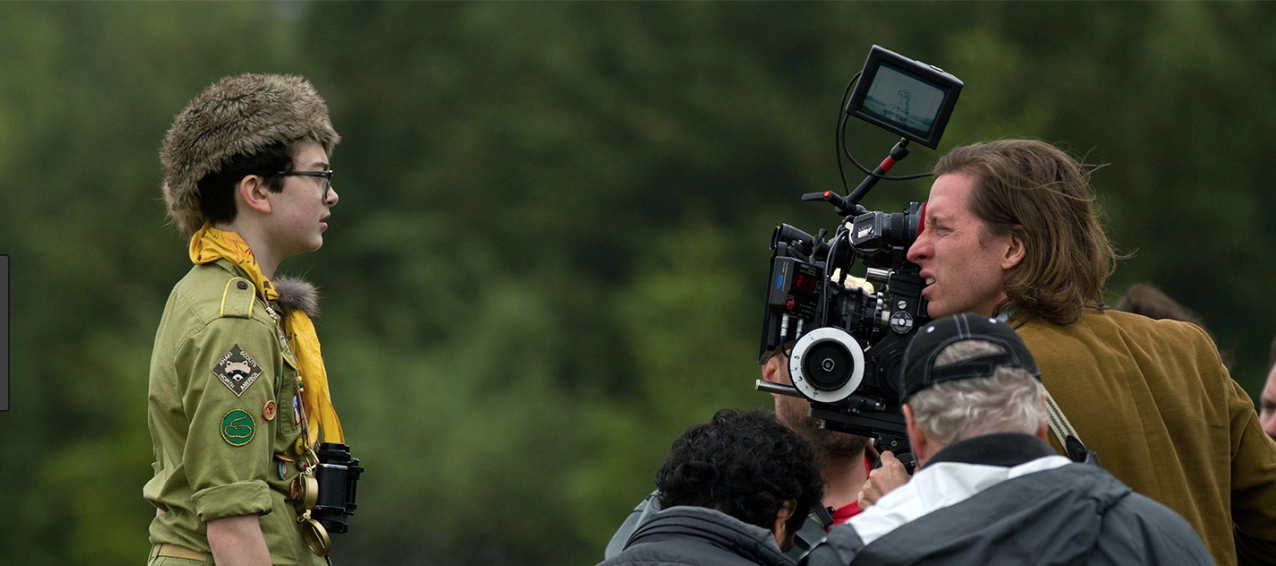
What is Auteur Theory in Film?
If you're studying film, you may have come across the idea of auteur theory. To put it simply, an auteur is a director or filmmaker whose distinct style and approach to the filmmaking process is so influential in their work that they are regarded as the author of the film. Let's take a deer look into auteur theory in film!
Creative Humans makes it easy to find and hire top video production studios and freelancers. Create a Free Account or Post a Job to get started.
A Quick Example of Auteur Theory
A familiar contemporary example of auteur theory in film would be Wes Anderson. This famed director has created a unique look with limited color palettes, central framing, and wonderfully crafted (and heavily controlled) sets that create their own world for the film. Essentially, when you see a Wes Anderson film, you know it is a Wes Andersen film. This level of authorship over a film is what makes an auteur.
Filmmaking is a Collaborative Effort
Interestingly, many directors who are considered auteurs will create art with a similar style no matter who they end up working with. This is what separates them from your more conventional filmmaking processes. Now, it would be foolish to consider the director the sole author of any film, since filmmaking is such a collaborative process. For a film to really come together, you need to have great acting, a knowledgeable crew, and an editor who can put it all together. Oh yeah, and someone needs to author the script!
Screenwriters vs Author in Auteur Theory
It may sound a bit weird that the screenwriter isn't generally considered to be the author of the film—though many auteurs do play an active role in the actual writing of the script. The easiest way to explain this is that the screenplay is merely a first draft of a film. It takes the director, actors and crew to transform the pages into a film-worthy performance. Then it requires the editor to piece together a final story based on both what the director and crew delivered and what was written in the original pages. Unsurprisingly, however, many directors who are considered auteurs do have co-writing credits for their films.
A Few Famous Auteurs
The main idea of auteur theory suggests that a director can impose a unique vision across all aspects of a film so much so that they become the so-called "author" of a film. In this sense, there are certainly many directors we can call auteurs. Classic directors like Alfred Hitchcock and Charlie Chaplin are obvious, as are more modern picks like Quentin Tarantino and even Christopher Nolan. However, if we are discussing the topic, we must address the obvious criticisms it as well.
Criticisms of Auteur Theory
One of the primary criticisms of auteur theory in film is that in some cases the most obvious influence on the film comes from another individual. Charlie Kaufman is a great example. A well-known screenwriter, if you read a list of his films (Adaptation, Being John Malkovich, Synecdoche, New York, etc.), you would obviously consider that he is the main influence over the work. Consistently Kaufman is nominated for best screenplay awards, and he explores similar themes throughout all his work which can be seen even though different directors have handled various films of his.
Screenwriters are an obvious choice when it comes to who is the real author of a film, though there are examples of other crew members influencing a work. Take Emmanuel Lubezski who has left his stamp on filmmaking history with his three consecutive wins for the Academy Award for Best Cinematography. And he did that on films from two different directors. Lubezski's work is distinct for having long single shot takes (oners), using natural lighting, and fluid camera movements. An exaggerated example of this would be Iñárritu's Birdman, which was shot and edited to look like a single take while films like Cuarón's Gravity and Malick's The Tree of Life maintain a very similar aesthetic, making it clear that Lubezski is truly the one with control over the visual aspects of the film.
Summary
To sum things up, an auteur in film is a director who imposes a distinct vision and style over their film to the extent that they are considered the distinct "author" of the work. However, with many different individuals working on a film, it is important to consider others who may have strongly influenced the movie as a whole and not always attribute a film solely to the director, as all films are a collaborative process.
What other members of a film production do you think have a large impact on the final product? Be sure to let us know and follow along here for more tips and tricks.
Creative Humans makes it easy to find and hire top video production studios and freelancers. Create a Free Account or Post a Job to get started.
Popular roles
Creative Agencies ● Production Companies ● Cinematographers ● Editors ● Directors ● Motion Graphic Designers ● Animation Studios ● Post Production Companies
Popular categories
Animation ● Branded ● Commercials ● Corporate ● Documentary ● Explainer ● Lifestyle ● Live Events ● Music Videos ● Nonprofit ● Post Production ● Promos ● Social Media ● Stop Motion ● Technology ● Sports ● VR & AR ● More Categories

Top Video Trends of 2019
For better and worse, it's 2019 and the media landscape is shifting again. We know, not exactly a huge surprise there. It is the start of a new year, so it's worth checking out some of the latest trends, whether that has to do with new social media happenings or the evolution of camera tech. Read on as we talk about the five most interesting and useful video trends of 2019!
Creative Humans makes it easy to find and hire top video production studios and freelancers. Create a Free Account or Post a Job to get started.
eXtended Reality... Whoa
First it was virtual reality. Then it was augmented reality. Now, we have finally settled on extended reality, or XR, which is basically a universal term for all types of new tech related to creating immersive video experiences. This is still going to be a relatively rare format since the audience isn't quite ready for it yet. Viewers need some extra equipment to experience this kind of content. But we think it is still incredible when done well. Tools are getting cheaper and better every day, and now services like YouTube and Facebook are supporting 360° uploads.
This technology will remain on the experimental edge of video production with clear benefits if you can pull it off. Convincing someone to enjoy an XR experience can be tough, though a well-produced video will capture their attention and be a unique way to separate yourself from the usual. Speaking of tools to pull this off, good camera choices would be the Vuze XR (it is in the name after all), GoPro Fusion, and Insta360 Pro. There are plenty of more affordable picks are out there too.
Discover the best VR & AR studios at Creative Humans!

Mobile First
IGTV, Snapchat, and YouTube are still giants in the industry. Making inspiring social-oriented video content is going to be one of the best ways to get your message out there. This may be one of the top video trends of 2019, but it's certainly not a fad. More and more users are expected to view content on mobile devices compared to desktop. Finding and engaging your audience where they hang out will be crucial to getting in front of them.
Following the dominance of app-based social media, it is becoming more and more true that the place people go to consume media is the smartphone in their pocket. The next step would be a tablet, which remains firmly in the app-based structure. Making videos in 1:1 format or even natively shooting vertically for a mobile audience will do better for these viewers.
Another common aspect of these mobile-focused videos is the use of captions. Scrolling through your Facebook feed on the train is not where you want a video randomly start blaring music. Captions help people enjoy the video and understand the message without needing to interrupt their commuting playlist or favorite podcast. Also, it is worth considering making captions for all your videos going forward to benefit those with disabilities or who are hard of hearing. And, captions done right can actually be read and indexed by search engines.
Discover the best social media video production companies with Creative Humans!
Smartphone Productions Become More Common
Producing a video from start to finish with only a smartphone is not exactly an unheard of feat these days. Even feature-length movies can be made on iPhones. It is getting easier, too! Affordable kits with grips and microphones are common and make it easy for nearly anyone to make a video with good quality. Nothing can beat a pro, but this can help supplement your top-tier content.
Plus, it's fast. A social media manager can now shoot and edit themselves. No need for a series of edits or multiple individuals transferring various files back and forth followed by approvals, more edits, and then, finally, publishing. A drive to publish content will help push this movement. A word of warning: just because everyone is telling you that you need to publish more videos, doesn't mean you should publish bad videos. A lot more content will be created this year, not all of it good, make sure you stand out with higher quality work.

We'll Do it Live!
There's nothing more authentic than a live broadcast. Consumers are smart, and they know when they are being misled or perhaps being sold by a flashy, well-produced video. Live streams and quick-hitting pieces centering on individuals speaking to the camera are a solid way to connect with your audience. Many more social sites are beginning to support it natively as well. Facebook Live, Instagram Live, YouTube, and Twitch are just a handful of your options.
Tools exist to stream even if you aren't an experienced video professional. You can also just stick to your smartphone and an app to get going at a moment's notice. Working quickly and going live is a great way to reach your audience while appearing relatable. Authenticity is critical to success in this medium. It helps especially when you are hosting an event and showing off behind the scenes footage or even just letting more people enjoy the experience even if they can't be there in person.
Discover the best live video production companies with Creative Humans!
Take to the Skies
Drones have shown no sign of slowing down coming into 2019. Aerial footage is still exciting and is getting cheaper and easier to capture. The FAA is still regulating much of the commercial usage, but new proposed rules may make it easier to operate if you are licensed. As with all tech, drones are getting cheaper and better by the day.
Sure, there are some already tired tropes in aerial footage, but a well-shot drone video can still wow or be used as a powerful, yet subtle, establishing shot in a bigger piece. It also makes a video look a lot more expensive than your standard tripod shot.

Final Thoughts
If you still haven't embraced video for your organization, now is the time to get started. We hope these top video trends of 2019 help you find some inspiration and organize your campaigns.
Creative Humans makes it easy to find and hire top video production studios and freelancers. Create a Free Account or Post a Job to get started.
Popular roles
Creative Agencies ● Production Companies ● Cinematographers ● Editors ● Directors ● Motion Graphic Designers ● Animation Studios ● Post Production Companies
Popular categories
Animation ● Branded ● Commercials ● Corporate ● Documentary ● Explainer ● Lifestyle ● Live Events ● Music Videos ● Nonprofit ● Post Production ● Promos ● Social Media ● Stop Motion ● Technology ● Sports ● VR & AR ● More Categories
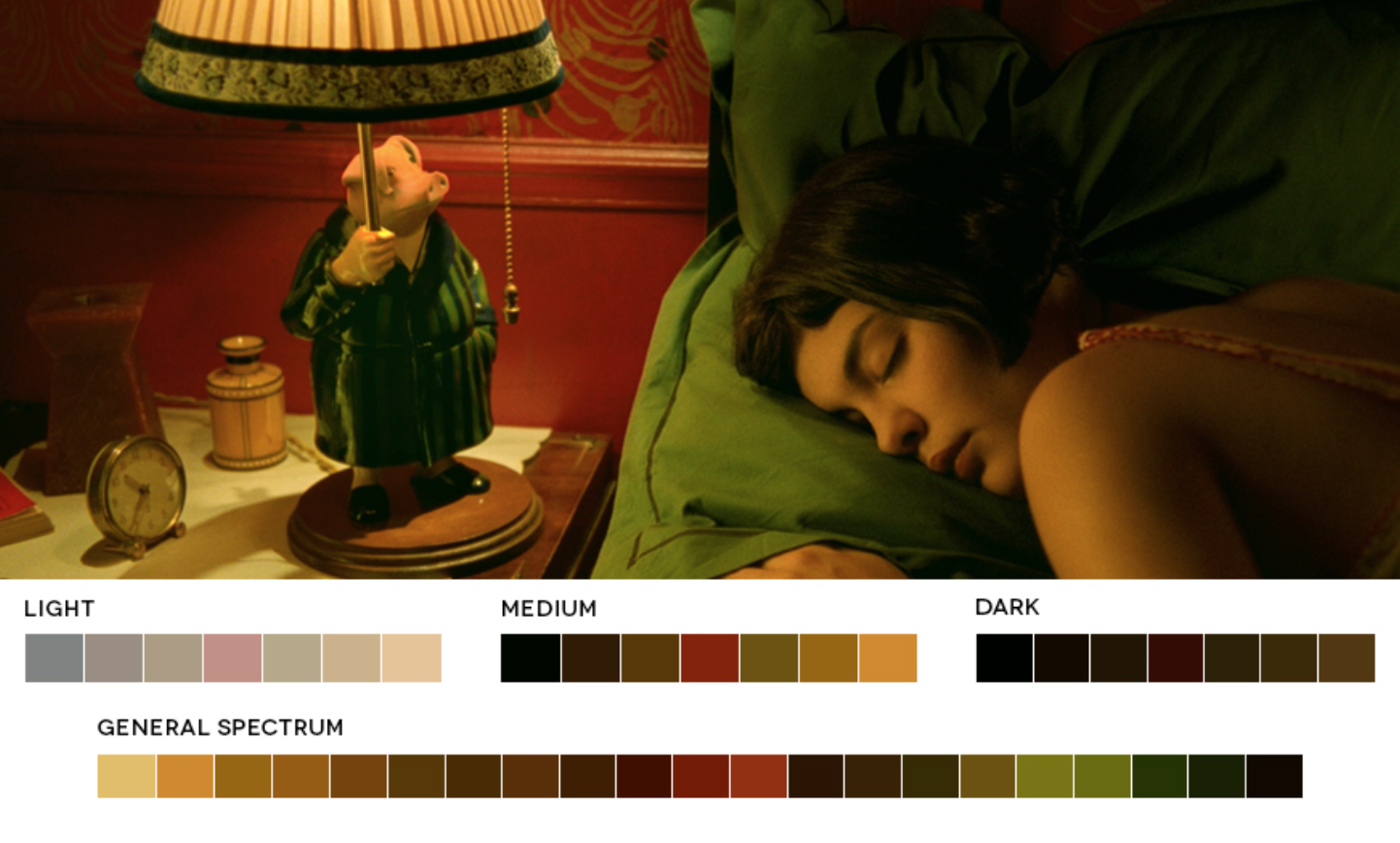
How to Color Grade Video Footage
Nothing involving color grading can generally fall into the realm of "basic." It is a highly technical area of filmmaking, and on large-scale productions there are dedicated individuals with the label of colorist who can make or break a film. If you aren't a color grading pro, some tips will definitely help you produce a stellar final product. Here are some basic rules to follow as you learn how to color grade video footage!
Creative Humans makes it easy to find and hire top video production studios and freelancers. Create a Free Account or Post a Job to get started.
1. Calibrate your Displays
Perhaps the most important thing when you begin to color grade footage is that you are working with calibrated displays. You absolutely need consistency when you work on color critical applications, and it generally isn't that difficult to perform your own calibrations at home. This is also the time to understand color spaces and gamuts so that you can know the limits of your displays and compare them to the final destination. If you want to know some important ones to research, here are some of the most common: sRGB, Adobe RGB, and DCI-P3.
2. Learn to Read Scopes, and Trust Them
Even if you have 20/20 vision and perfect color acuity, you still can't trust what you see on the display in front of you. This is why scopes are so important. Learning to read something like an RGB Parade will help you quickly pinpoint issues in your footage and know immediately how to correct them.
Beyond being a useful set of tools, scopes also help ensure you stay within the boundaries of the final display format—be that broadcast, projection, or a TV you have at home. This is important, because if you push too far into the limits or beyond them, your footage will quickly fall apart. For example, if you push your highlights to 10,000 nits for an HDR display and then play this on a standard dynamic range screen, all the highlight detail will be lost and it can make some videos unwatchable. Unfortunately, there is so much more to scopes than can fit in this article alone, so we highly recommend going out and reading up on them and testing them out in your software of choice.
3. Lift, Gamma, and Gain
When color grading video footage, there are three main areas which you can work on: lift, gamma, or gain. To translate, these terms refer to your shadows, midtones, and highlights, respectively. This is critical to proper color grading work as it helps you understand the best way to work with your footage and apply corrections and grades.
To get a nicely exposed shot, a best practice order to follow would be optimize your shadows, then your highlights and midtones. For a lot of footage, color casts aren't uniform throughout the full luminance range. You could have opposing colors in your shadows versus your highlights, green shadows and magenta highlights for example. Being able to identify this and the tools to make adjustments is critical.
4. Working in a Proper Order
Even if your end goal is to have your film look like The Matrix, you shouldn't add that distinct green tone first thing. There are general protocols for what to do first and what to do last when you apply grades, though you can create your own system if you prefer.
- First thing we would recommend is to apply any noise reduction or major corrections first
- Then apply a proper balance/correction of your contrast and color as well as any localized adjustments
- Finally, apply your filters and other creative effects
There is a reason for this order beyond keeping you organized. The order you perform the work determines how each step is handled. For example, if you add a vignette before doing the initial correction, then go to adjust the overall contrast, you may end up eliminating most of the effect or making it way too strong.
5. Don't Go Overboard
This is probably the most important tip when color grading video. When you first get going with some serious grading software on a project, it is really easy to see all the tools and want to make use of every single one. Unless you have an incredibly distinct vision, like Sin City's stylized look, there generally is no need to dramatically push anything in an unrealistic manner. You should still experiment to get the perfect look for your scene, but make sure to reign in any choices that might be a little too extra for your overall piece.
Final Thoughts
As a final piece of advice to sign off, we recommend that if you are learning to identify color issues in your footage, you can always push the saturation up. Once you do this, the off colors will pop out more, making it easy to see what needs to be changed.
Do you have any video color grading tips of your own to share? Or do you have a question about a tool or workflow? Make sure to let us know and stay tuned here for plenty of educational pieces.
Creative Humans makes it easy to find and hire top video production studios and freelancers. Create a Free Account or Post a Job to get started.
Popular roles
Creative Agencies ● Production Companies ● Cinematographers ● Editors ● Directors ● Motion Graphic Designers ● Animation Studios ● Post Production Companies
Popular categories
Animation ● Branded ● Commercials ● Corporate ● Documentary ● Explainer ● Lifestyle ● Live Events ● Music Videos ● Nonprofit ● Post Production ● Promos ● Social Media ● Stop Motion ● Technology ● Sports ● VR & AR ● More Categories
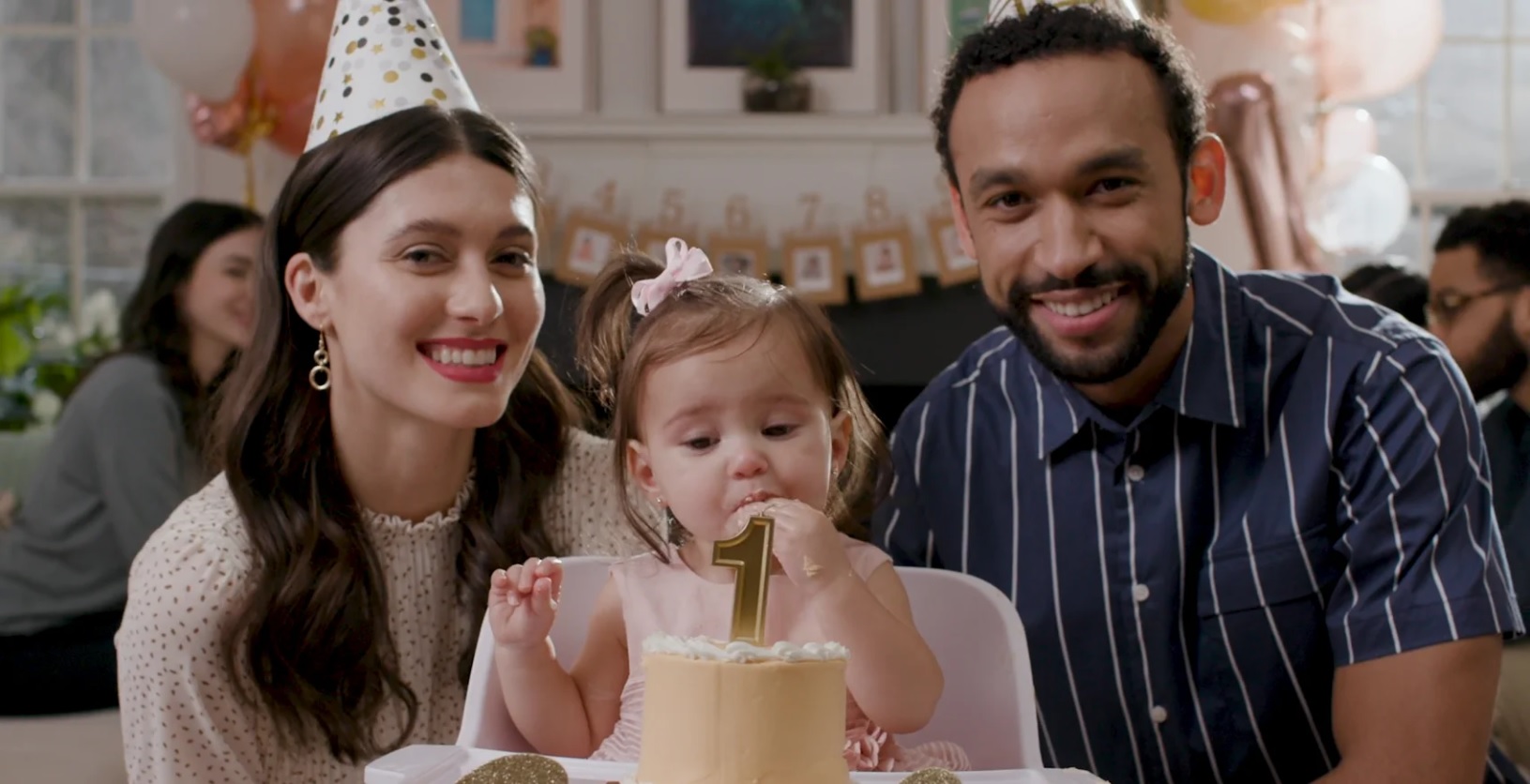
8 Promotional Video Examples from Creative Humans
Promotional videos are incredibly versatile marketing tools. From launching a startup to demonstrating new products and services, videos offer an engaging and entertaining way to communicate with your target audience.
But making an effective promotional video is often more difficult than it might seem on the surface. Writing an engaging script, choosing an impactful art style, and tailoring the content to your target audience can be a significant challenge.
To help business owners and marketers gain inspiration for their video marketing initiatives, here are eight great promotional video examples from the video production professionals at Creative Humans!
Creative Humans makes it easy to find and hire top video production studios and freelancers. Create a Free Account or Post a Job to get started.
8 Great Promotional Video Examples
If you're new to video marketing, one of the best ways to gain a better understanding of what works and what doesn't is to look for inspiration from experienced creators and video marketers.
Here are eight high-quality examples of promotional videos that are engaging, informative, and entertaining.
1. MakerBot for Professionals | Ideas in the Making
MakerBot is a 3D printer manufacturer that markets its products to educators and professionals. This promotional video is remarkably effective for two reasons:
- It succinctly introduces MakerBot's 3D printers—emphasizing their power and potential to be used for innovation.
- It effectively conveys the advantages of MakerBot's 3D printers compared to its competitors' products.
The video takes an inspirational tone, appealing to engineers and product designers whose goals revolve around creating exciting new products without limitations. The creators of this video even went the extra mile to hire real engineers and produce the video in a professional manufacturing facility to enhance the authenticity of the video.
2. Nike BKLN Basquiat City Edition
The Brooklyn Nets decided to honor Basquiat, one of New York's most influential and renowned artists, with a jersey inspired by his art.
To introduce this jersey, Nike Basketball debuted this promotional video, shot on film to convey an authentic grittiness that complements the impactful voiceover and soundtrack that carries the video. At only one minute long, this short video focuses on Brooklyn's basketball culture, emphasizing themes of hope and greatness.
By evoking feelings of pride, this project is able to form a strong emotional connection between the viewer and the jersey being showcased in the video.
3. Nectar Mattresses: Sweet Dreams Delivered
When shopping for a mattress, consumers are looking for a product that promises comfort and a good night's sleep—and that's exactly what this promotional video for Nectar Mattresses communicates. Moreover, the video emphasizes Nectar Mattresses' nationwide delivery with a catchy line: "We're delivering a better night's sleep to the world."
The video takes the time to quickly highlight the product's key benefits: comfortable, breathable layers that "feel like a dream," and a price that beats its competitors. Affordable, comfortable, and free nationwide delivery—what's not to like?
To wrap things up, the video advertises a special offer to entice viewers who may still be on the fence.
4. Cheerios "Anthem"
Cheerios cereal is a product that needs no introduction. As such, the focus of this promotional video is to establish an emotional connection between the viewer and the brand.
The video accomplishes this by appealing to some of our strongest emotions: love and nostalgia. Backed by a warm soundtrack, the commercial focuses mostly on parents bonding with their children and loved ones over a bowl of Cheerios—a fond memory that many viewers will relate to.
5. Honda Powersports
Honda Powersports is a division of the auto manufacturer that focuses on ATVs and other off-road vehicles.
Rather than appealing to the average car buyer, these products are geared toward blue-collar workers, athletes, and outdoorsmen. For this reason, rather than emphasizing qualities like comfort and luxury, the video highlights aspects like craftsmanship, reliability, and durability. These qualities are not only emphasized in the voice-over, but also through the various shots of the ATVs being driven on rough terrain in varying environments.
At only 30 seconds in length, the video doesn't waste any time driving home its key point: that Honda ATVs are the perfect option for consumers looking for a high-quality off-road vehicle.
6. Hershey's Lancaster "Unexpected"
Lancaster Soft Cremes were Hershey's first new product in years, so it was important that the product's introduction video was memorable, informative, and enticing.
The commercial starts with a quick explanation of the product's origin—Milton Hershey's "killer" caramel recipe. Then, the video quickly flashes forward to explain how the company has reimagined the original recipe to create delicious, smooth Lancaster Soft Cremes.
"A throwback to the past, yet totally new" perfectly sums up the product, acknowledging the candy's historic roots while emphasizing its uniqueness.
7. Saks Off 5th
Saks Fifth Avenue is a high-end department store known for carrying a wide variety of expensive designer brands. Saks Off 5th, on the other hand, is the affordable alternative to Saks Fifth Avenue, offering designer brands with steep discounts.
However, if this video was the first time you heard of Saks Off 5th, you'd never know it was the budget version of its high-end cousin. Rather than focusing on its cheaper prices, this short video simply showcases a selection of its jewelry via a 15-second montage of the products being worn by two different models.
When your business needs no introduction, simply showcasing the product and telling the viewer where to get it is often enough.
8. Canon Selphy
The Canon Selphy Square QX10 is a compact, wireless photo printer that is perfect for the average, amateur photographer who simply wants to capture life's special moments and be able to print their pictures on the fly.
After a brief product introduction, this promotional video tells the story of a couple capturing their life through photos. Starting with the couple moving into their new home, printed pictures showcase a timeline of their relationship, from memorable vacations to the birth of their child.
Through this narrative, the video is able to effectively highlight how the Canon Selphy can help you keep a visual record of the moments you never want to forget.
Hire Video Production Professionals
When done right, promotional videos are incredibly effective marketing tools that allow companies to launch new initiatives, explain products, and form strong emotional connections with their target audience.
One of the best ways to accomplish this is to partner with a professional video production company or freelancer who has experience developing impactful videos for brands similar to yours.
Creative Humans makes it easy to find and hire top video production studios and freelancers. Create a Free Account or Post a Job to get started.
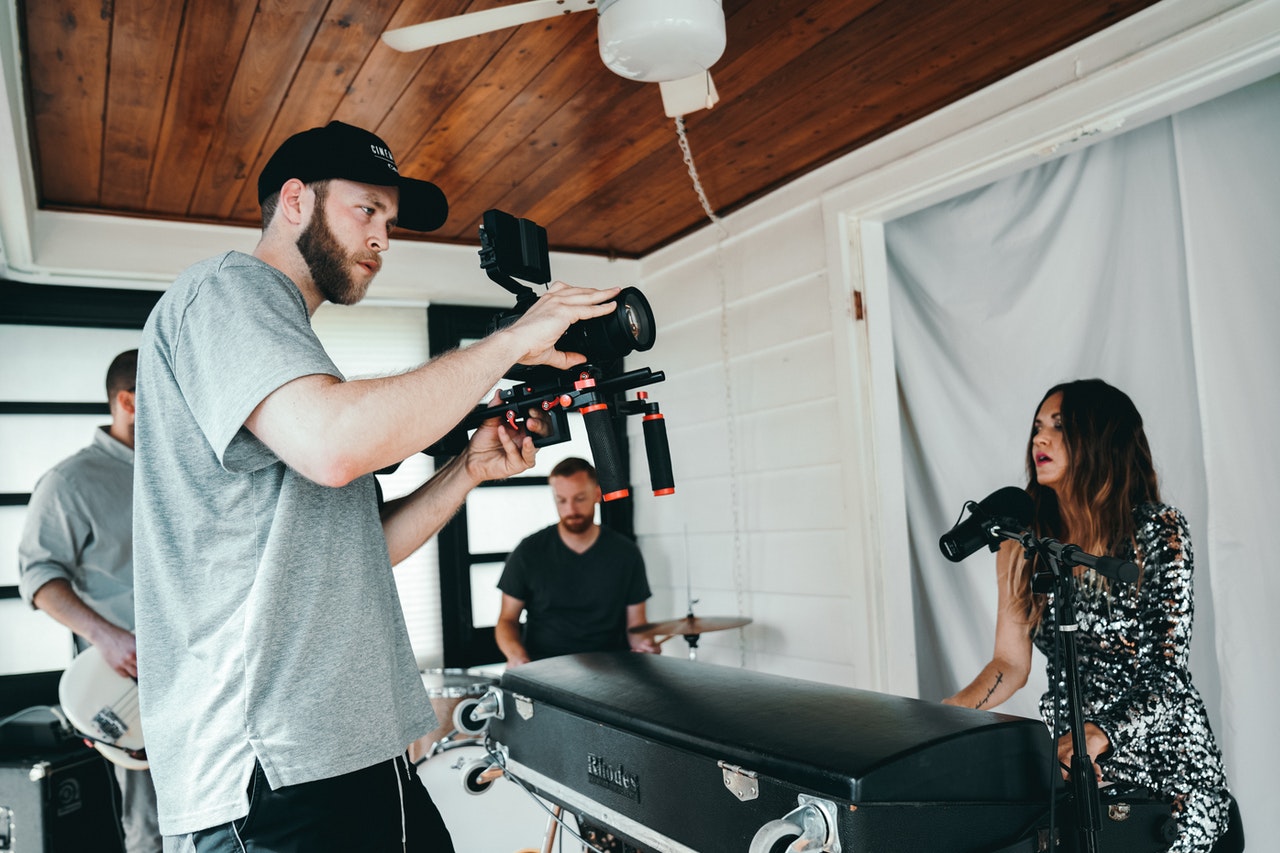
How to Make Money Off of Live Streaming
Over the past several years, live streaming has become a leading form of online entertainment and offers a great way for individuals and companies to connect with their audiences in a more intimate and impactful way. In 2019, Internet users spent over 1.1 billion hours watching live video.
Even better, live streaming is also a great way to make money. If you have a sizable audience, monetizing your live streams can generate significant revenue. But of course, it's not as easy as simply creating an account on a live video platform and waiting for the money to roll in. To help you get started, here are five ways you can make money off of live streaming!
Creative Humans makes it easy to find and hire top live video production studios and freelancers. Browse the Directory , or Post a Job to get started.
Best Live Streaming Platforms to Make Money
There are a variety of platforms you can use to live stream and make money. The best platform for you will largely depend on where your audience already exists. For example, if you have a large Facebook following, then it would make sense to start your live streaming career on Facebook's live video platform.
With that in mind, some of the most popular live streaming services include:
- Twitch
- YouTube Live
- Facebook Live & Facebook Gaming
- Periscope
Some companies also choose to launch their own self-hosted live streaming platforms. If you already have a loyal following, this can be a great way to maximize your revenue as you won't have to split a portion of your earnings with your platform partner.

5 Ways to Make Money Live Streaming
Each of the live streaming platforms listed above offers several ways for users to earn money while streaming. From audience donations to ad revenue, here are five ways to make money off of live streaming.
1. Donations
One of the most common ways streamers earn money is through audience donations and tips. Platforms like YouTube and Twitch allow viewers to send money directly to their favorite streamers to show their support.
Twitch, for example, lets viewers make cash donations or tip streamers via the platform's virtual currency, called Bits. Similarly, YouTube Live viewers can send tips or purchase Super Stickers to financially support streamers.
2. Subscriptions
While occasional tips and donations can be a nice revenue boost, streamers can earn more consistent revenue through channel subscriptions.
Most streaming services allow viewers to subscribe to their favorite creators for a monthly fee, a portion of which goes directly to the streamer. These subscriptions offer incentives such as ad-free viewing, custom emotes, and subscriber-only content.
3. Advertising Revenue
Advertising revenue powers much of the Internet, and live streaming is no different. Facebook Live, Twitch, YouTube Live, and other popular platforms all allow streamers to run ads throughout their broadcast and earn a portion of the revenue that they generate.
Depending on the platform, you may have to meet viewership requirements to earn ad revenue. If you do meet these requirements, the money can add up quickly.
However, ad revenue should not be your only source of revenue while streaming. First, running too many ads may turn away some viewers who may have otherwise subscribed or made donations to your channel. Moreover, many viewers use ad-blockers, which reduces the amount of money your ads can generate.
4. Sponsorships
Brand deals and sponsorships offer a great way to generate income by promoting products from brands that you personally support. These mutually-beneficial partnerships are typically less controversial than ads, as they are less intrusive and can be catered to your audience.
When talking to brands about potential sponsorships, it's important that you clearly understand what your obligations are and what you have to do to satisfy the sponsorship agreement.
For example, some companies may simply ask you to place a small banner on your stream overlay, while others may provide you with a custom discount code to promote during your stream.
Moreover, it's always a good idea to do background research on the companies that reach out to you. As you build an audience, you'll likely be contacted by a variety of brands for potential sponsorship deals, including some less-than-reputable businesses.
5. Selling Products & Merchandise
Product and merchandise sales are a significant source of revenue for many live streamers. While this revenue does not come directly from live streaming, it's a great way to take advantage of your live stream's success to generate passive income.
Most platforms won't let you sell merch directly to your audience, but they will allow you to advertise your merch that you sell on a third-party site. The YouTube merch shelf, for example, allows creators to showcase their official merchandise directly below their stream.
Hire Professional Creative Talent
Live streaming has become an invaluable medium for businesses and individuals looking to make money online. It's easy to get started, the initial investment is low, and there are countless ways to monetize your stream and earn money.
To maximize your revenue from live streaming, it's important to prioritize the production quality of your broadcast to create an entertaining experience for viewers. If you need help getting set up, search the Creative Humans directory to find and hire expert talent to optimize your live stream.
Browse the Directory

How Video Can Boost Your Inbound Marketing Efforts
Business owners and marketing professionals should always be looking for ways to improve their inbound marketing efforts and attract more high-quality leads. Video marketing is a great strategy for boosting customer interactions and generating more conversions. Audiences tend to find video content more engaging, more entertaining, and more informative than traditional text-based content.
While you probably already use videos to some extent in your marketing strategy, prioritizing video content over other marketing efforts can be a great way to gain more organic traffic. Here are five ways video marketing can boost your inbound marketing efforts!
Creative Humans makes it easy to find and hire top video production studios and freelancers. Browse the Directory , or Post a Job to get started.
5 Ways Videos Improve Inbound Marketing
Videos are an incredibly impactful marketing tool, but how much of an impact do they really have on your inbound marketing results? Here are five ways you can use videos to boost your marketing ROI and organically build your audiences.
1. Establish Brand Authority
To increase organic leads, it's important to provide value for your customers. A great way to do this is through a comprehensive library of thought leadership videos.
You video content can consist of anything from downloadable webinars marketed through your website to a content library on YouTube or Vimeo that includes explainers, how-to videos, FAQs, interviews, documentaries, and other valuable resources. Content hosting platforms like Wistia provide tools to boost your video marketing efforts, including marketing automation integrations, video SEO, and more.
Be sure to add CTAs and links to relevant landing pages within your video description to increase web traffic and conversions.
2. Increase Social Media Leads
Social media platforms like Facebook, Twitter, Instagram, and LinkedIn offer a great way for brands to connect with customers and form long-lasting, mutually-beneficial relationships. But to achieve the benefits that social media has to offer, it's important to produce content that appeals to your audience and generates shares.
If you want to create social content that engages your followers, videos are your best bet. 82% of Twitter users watch video content on the platform, and videos on social media generate 1,200% more shares than text and image content combined!

3. Improve SEO
As any digital marketer knows, SEO is vital to increasing web traffic, generating organic leads, and increasing conversion rates. While it's certainly not the only factor that Google takes into account to determine search engine rankings, video content can increase your chances of reaching a top ranking on Google by as much as 5,300%.
Google also now features rich snippets, which include relevant videos displayed on the first page of search results. While you need to self-host your videos for them to appear in these rich snippets, the results are often well worth the effort.
Videos should be uploaded and updated consistently to stay relevant, and you should be sure to include optimized metadata to enhance the searchability of your video content.
4. Boost Landing Page Performance
Landing pages are an invaluable tool for generating conversions and continuing to carry visitors through the sales funnel. Including a video on your landing page can increase conversions by as much as 80%.
Of course, landing page videos shouldn't necessarily be the same content you upload to your social media channels. Here are a few tips to keep in mind for your landing page video content:
- Videos should generally be between one to three minutes to avoid high bounce rates
- Don't autoplay videos
- Design a thumbnail that is appealing and accurately reflects the video's content
- Place the video near the top of the page or in another high-visibility area
Make sure to track your video's analytics to see how visitors are responding to it and make changes as necessary to optimize conversion rates.
5. Keep Blog Readers Engaged
Leads generated from blog posts are high-value. By clicking on one of your blog posts, readers are indicating that they are interested in your business and content to a certain extent and are more likely to make a purchase.
However, it can be difficult to keep readers engaged throughout the length of a blog post. Videos are a great way to attract more visitors and keep them engaged while reading your blogs.
Be sure to include the video near the top of the blog post, and make sure to place a CTA in the video in case the readers don't make it to the end of your post!

Hire Professional Video Production Talent
Inbound marketing helps businesses build brand loyalty and increase sales revenue by generating organic leads. If videos aren't a major aspect of your inbound marketing campaigns, you may be missing out on a significant number of potential customers.
Creating and publishing informative, high-quality, and relevant content is a great way to increase organic traffic and enhance your existing inbound marketing efforts. If you need help creating optimized video content for your social and marketing channels, search the Creative Humans directory to find and hire expert talent for your video projects.
Browse Directory
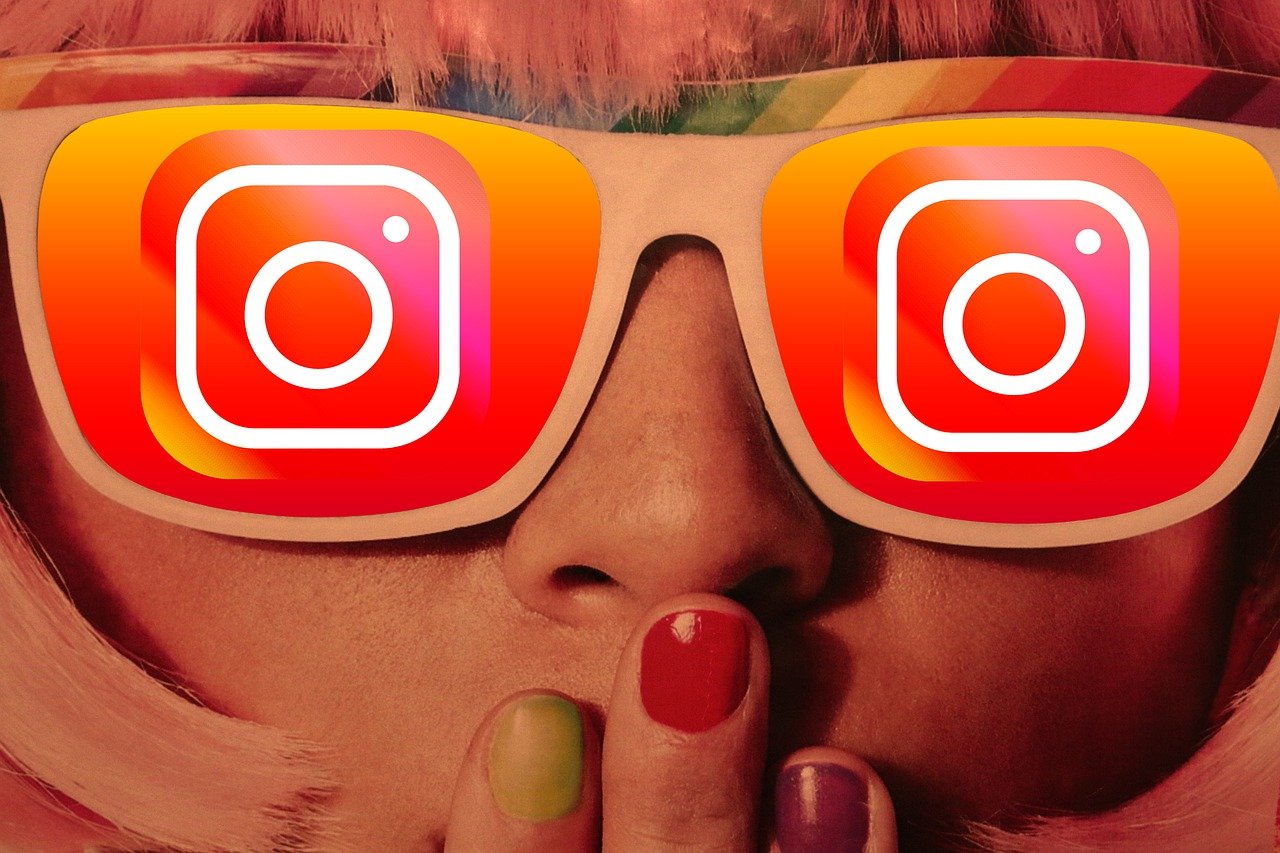
Social Media Video Production Tips
Social media is an ideal platform for sharing video content to promote your brand. Your followers can even boost your marketing efforts for you by sharing your content with others, making it go viral. Video content created for social media applications like Facebook, Instagram, Twitter, and others can be a significant marketing tool for any brand—but only when it's done right. To help you create an engaging campaign, here are some essential social media video production tips.
Creative Humans makes it easy to find and hire top video production studios and freelancers. Create a Free Account to get started.
Research and Develop Your Concept
What is it about your brand that your audience finds engaging? If you already have an established social media presence or other content types on your website, review your analytics to determine your top-performing content. You can then use that information to plan a concept for your new video campaign. While you don't want to simply copy your successful campaigns, take a moment to consider which elements were most engaging to your audience, and use that to guide your future content.
Hone in on Your Call to Action
Don't focus on the "big picture" of your brand. Effective social media videos have a very short amount of time to deliver their messages. Narrow your messaging for your video to focus on an individual product or promotion for maximum effect.

Establish an Aesthetic
While this might be your first video for social media, you will want your audience to associate particular visuals with your product or service to help with your brand's identity in future marketing. Aspects like color, filters, music, and graphics can be applied to your ongoing video content to build familiarity with your audience.
Immediate Impact
On average, Facebook users spend 1.7 seconds looking at a piece of content on a mobile device and 2.5 seconds on a desktop. Additionally, 47% of video impressions come from individuals who viewed less than three seconds of a video on Facebook. This means that your video needs to engage your audience immediately, from the very first frames.
Keep It Short
Audiences are far more likely to finish viewing your content if it is brief. Though Facebook and Twitter allow for longer videos, Instagram stories are limited to just 15 seconds. Your video content on all social media platforms should be less than 15 seconds for maximum impact. Even with this much time to work with, it's important to remember that most users will only watch three seconds or less of a video on social media platforms. Ensure your most important message is upfront at the beginning of your video.

Nail the Thumbnail Image
Many users will engage with your social media video before they even watch it—because they will see the thumbnail image. Ensure that the thumbnail is properly formatted for the platform you are sharing on, and make it engaging! A great thumbnail can make the difference between a user deciding to watch your video or keep scrolling.
Prominently feature your brand's identifying information, such as your logo, in your video's thumbnail. Even if users don't view the video, they will get an impression of your brand.
User-Generated Content
Users will be more likely to share your video if they have a personal connection to it. Social media videos that include photos, comments, or video clips created by your audience can help significantly boost your engagement. Consider ways that you can include your current audience within your concept for your video.
Include Subtitles
Many social media users scroll through their feeds without sound on, and some platforms require users to actively turn sound on to hear audio. Including subtitles is essential to ensure your messaging gets across to all viewers.
Superior Sound Design
While many users will watch your video without sound as they scroll through their social media feeds, don't treat your video's sound as unimportant. Your video's sound is still an effective method of delivering your messaging when a user decides to listen to it.
If your video features voiceover or dialogue, record it with a high-quality microphone. A production team can also help you select the ideal music for your video as well.

Review Production Specs
Unfortunately, the major social media platforms do not all use the same specifications for video content and requirements for each change over time. Let your production team know what platforms you will intend to share your content on, so they are prepared to tailor your video content for those applications. For example, your production team will know if they will need to crop your video to fit the size limitations of a platform and shoot the footage accordingly.
Create Options
Shooting content for a single 15-second video may take very little time for a professional crew. Maximize the time you hired them for by shooting your concept in several different ways or by using your location to shoot some different ideas for future social media content all at once.
Hire Professional Social Media Video Production Talent
Social media platforms have limitless potential for engaging with your audience and developing new business. Professional social media video production companies and freelancers can elevate your social media marketing with exceptional content. For the best results, search the Creative Humans directory to find and hire expert talent for your next social media video project.
Creative Humans makes it easy to find and hire top video production studios and freelancers. Create a Free Account to get started.
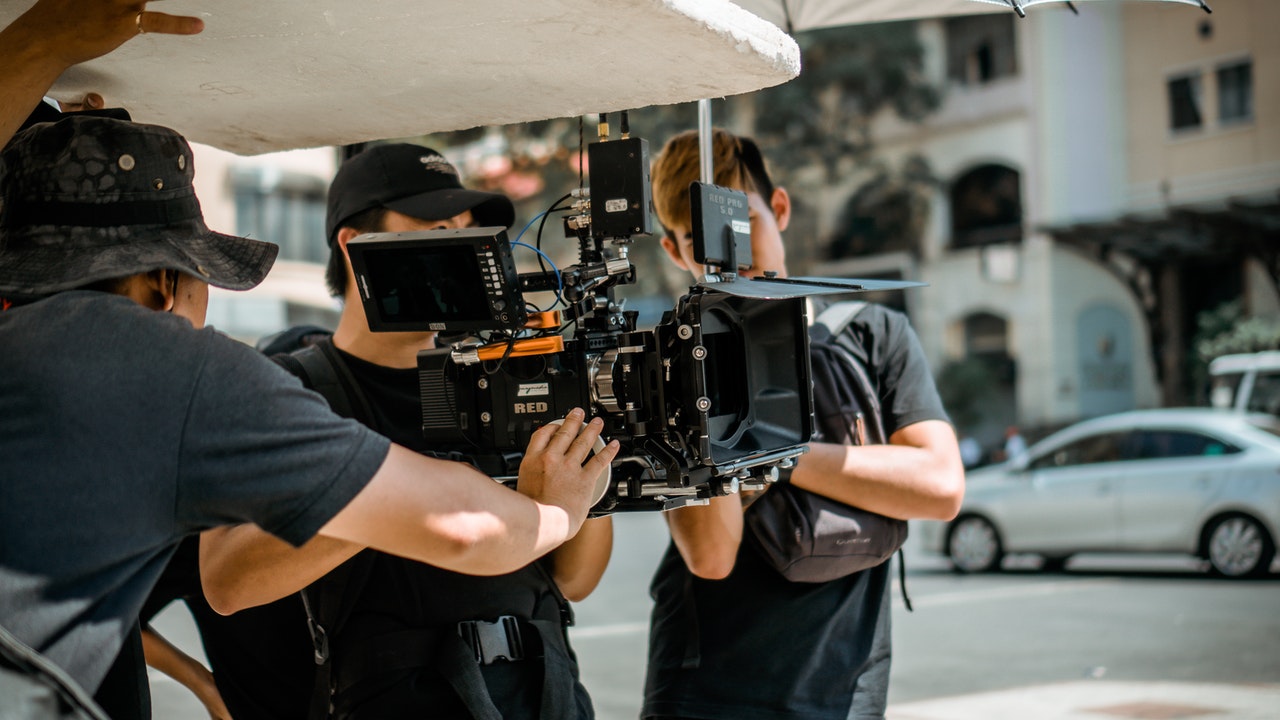
How to Plan a Video Project: Essential Pre-Production Tips
Videos are an essential part of any successful content marketing strategy. According to HubSpot, 54% of consumers prefer to see videos from brands more than any other type of content. Videos help brands create lasting relationships with customers and are great for explaining new concepts, demonstrating products, and more.
That said, the video production process can be fairly complicated. To carry out a successful video project, it's important to take the time to plan out the project in detail before getting started. In this guide, we'll walk you through how to plan a video project so you can get the most from your campaigns. Here are a few important pre-production tips to keep in mind to ensure your video project is completed as quickly and efficiently as possible.
Creative Humans makes it easy to find and hire top video production studios and freelancers. Create a Free Account to get started.
Pre-Production Tips for Creating a Successful Brand Video
The video production process involves several steps. From concept planning and scheduling to hiring talent and storyboarding, it's important to plan out every aspect of your production to ensure filming goes smoothly. If you're planning on putting together a video project, make sure to keep these pre-production tips in mind:
Target Your Audience
Effective video content development revolves around determining and effectively communicating with your target audience. Before beginning production, create a buyer persona for your ideal customer.
A buyer persona should identify certain key characteristics, such as:
- Demographics
- Your customers' motivations
- Customer hobbies and interests
- Customers' careers
- Pain points
By creating a detailed buyer persona based on key characteristics like these, you can create a more focused video that connects with your ideal customer.
Define Your Message
After identifying your audience, it's important to define your message. What do you want viewers to take from your video?
Are you trying to explain a new product or service, or is the video focused on generating brand awareness? What problem are you trying to solve for your customers, and how is your solution effective?
Your video should be focused and have a clear message. Don't overstuff your video with information pertaining to various products and services. Instead, create shorter videos tailored to specific subjects.

Set the Video Length
The length of your video will have a significant impact on how much the video costs to produce and on the completion rates—that is, the number of viewers who actually finish the video. For general marketing purposes, videos should typically be between one to three minutes. However, length may vary depending on the purpose of the video and what stage of the sales funnel your audience is at.
For example, if your intended audience is still in the awareness stage, a shorter, more accessible video is ideal. For customers nearly ready to make a sale, a longer, more explanatory video is generally more effective.
Write a Great Script
A good script makes a good video. It's important to thoroughly review and revise your script, ensuring it is polished before moving forward with production.
Consider hiring a professional copywriter to work with you to develop a script that appeals to your target audience while clearly conveying your message. Make sure to get input from various team members, and be prepared to go through several drafts before moving onto production.
Set a Budget
Creating a realistic budget is an essential pre-production tip for any video project. A budget serves two main purposes: 1. It helps to keep you from overspending once production begins, and 2. it helps to guide your creative decisions. For instance, if you are making an animated video , you may opt for 2D animation rather than 3D animation if you have a limited production budget.
When you are creating your budget, you should also be making your final decision on where and when you will be shooting your video, who your casting and crew will be, and what gear they will be using.
While it's important to set a realistic budget, you should avoid attempting to reduce costs by cutting corners and skipping on important equipment. A low-quality video with terrible audio is likely to worsen your audience's perception of your brand.
When working with a professional video production company , they will be able to create a video concept based on your budget without sacrificing quality.
Shot List
A shot list maps out everything that will happen in a scene by describing each shot within the video. It serves as a kind of checklist, providing the project with a sense of direction and preparedness for the film crew.
The shot list is typically made in collaboration with the director and cinematographer. Making a video demands knowledge of shot type, camera movement, lighting, actor staging, and much more. Putting this information down in a shot list helps the filmmakers remember what it is they wanted and how to execute.

Storyboard
A storyboard is a series of drawings that depict each individual scene of your video. Storyboards are an invaluable resource during pre-production, as they serve as the blueprint for the video. In addition to laying out the video timeline, storyboards help establish the style and creative direction of the video.
Storyboards can also help you visualize locations, making it easier to find a proper shooting area. Plus, they can make it easier to understand what equipment you may need to get the shots you're looking for.
Create a Schedule
A production schedule is one of the most important parts of your project. It will help keep the production organized and on budget. You want to make the most out of each location.
In addition to noting dates and times, a production schedule should include other information, including:
- Filming locations
- Call times for cast and crew
- Crew members and talent information
- Equipment being used in each shot
- A breakdown of which scenes are being shot at which times and at which location
Your production schedule should be the primary point of reference for all necessary production-related information.
Camera / Grip and Electric Equipment
Work with your crew to make a breakdown of all the gear you need prior to production. This can help to prevent production hiccups, help to prevent overspending, and also help you to refine your shot list and shooting schedule.
A production manager can work with you to help you understand what equipment you need based on your script, storyboard, and other details. After making a list, the production manager will coordinate equipment purchasing/renting as needed.
Locations
When it comes to choosing a filming location, you have a number of options to choose from. Will you be on set in a studio or in a practical location such as an office, a home or somewhere outside?
- Shooting on location Depending on what and where you are filming, you may need to get film permits from the local film office. Shooting on location will also require you to provide transportation for the crew, talent, and equipment—and if filming outdoors, you will be subject to possible changes in weather.
- Studios , on the other hand, can offer elaborate, customized sets. Plus, you won't have to worry about weather or other unexpected events disrupting your shoot. They can also often provide gear and may guarantee you a quiet work environment.
- Audio. One of the most important things to think about when choosing your location is the sound. If you are filming an interview or dialogue, you want to find somewhere quiet without the worry that you will get interrupted.
Our Advice… Hire a Professional Video Production Company
Producing a high-quality video tailored to your audience is a great way to build brand awareness, acquire leads, and generate conversions. But creating an effective video is easier said than done.
Working with a professional video production company can help you navigate the pre-production process and effectively plan a video shoot that falls within your budget and meets your needs. Search the Creative Humans directory to find and hire expert talent for your video production project.
Creative Humans makes it easy to find and hire top video production studios and freelancers. Create a Free Account to get started.
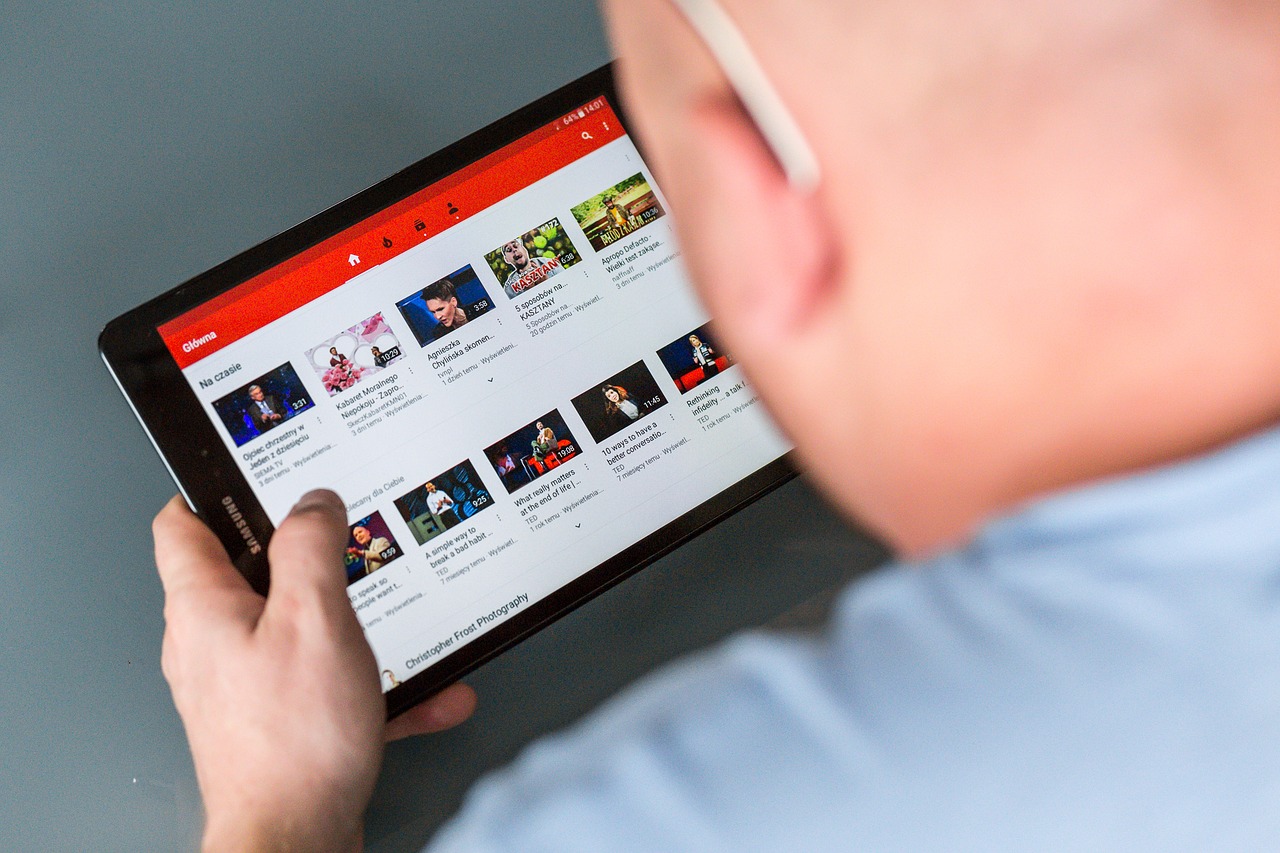
Essential YouTube Marketing Tips: How to Use YouTube for Marketing
Creating YouTube videos for your brand should be an essential part of your digital marketing campaign. YouTube users cumulatively watch over one billion hours of content per day, and YouTube is the second-largest search engine on the internet. On the other hand, the sheer amount of content uploaded to YouTube (over 500 hours every minute) can quickly bury your content. No matter how good your video is, just posting a high-quality video on YouTube won't necessarily lead to anyone actually watching it. To help you get the most out of your campaigns, here are some essential YouTube marketing tips!
Creative Humans makes it easy to find and hire top video production studios and freelancers. Create a Free Account to get started.
Put Effort into Your Channel's Branding
A single quality video on YouTube is a great starting point, but to really maintain interest and attract new customers to your brand, you need a professional-looking YouTube channel page to host your content.
Use colorful, eye-catching graphics on your channel page to grab the attention of viewers. While it's a good idea to include text in your graphics to provide more information on your brand, do not overload the graphics with too much text or include a too-lengthy description in the "About" section. Let your videos provide that information!
Use Short, Click-Encouraging Titles
Simply naming your YouTube video after your brand name will not encourage users to click on your video. Instead, use a title that will make your viewers want to click on your video, like "How [Your Brand] Will Save You 1000 of Dollars Yearly!"
Based on that title, viewers will need to watch your content in order to discover how your brand can impact them in a positive way. Ideally, your title should be under 60 characters to ensure the entire title appears in the listings while people are browsing on YouTube.

Use Keywords
Because YouTube users generally utilize the site as a search engine for video content, uploaders need to use keywords effectively to optimize the search performance of their videos.
As you are uploading your video, use the tag option to associate your video with relevant keywords that would help your video appear in search results. You can use up to 15 keywords, and you should use all of them. In addition, using the most significant keywords in your video's title can help boost its placement in searches.
Use a Visually-Appealing Thumbnail
When you upload a video, YouTube automatically generates a thumbnail for your video. However, since the thumbnail is the first visual a user will see of your video across all platforms, creating a unique, visually-engaging thumbnail is essential. In fact, according to Creator Academy, 90% of the best-performing videos on YouTube have custom thumbnails.
Use the most visually impactful, exciting frame from your video and insert colorful titles, graphics, or icons to help entice clicks. Stick to that title format with all your videos on your channel.
Use the Captions Feature
People who are hearing impaired use YouTube, and captions are also useful for YouTube users who might be watching your video in a public place where they cannot use sound. Video captions will allow viewers to receive essential information and enjoy your video even if they cannot hear it.
End with a Call to Action
If you frequently watch YouTube videos by popular creators, you've undoubtedly heard them say phrases like, "Subscribe to my channel!" You may have even seen icons with links to the creator's website or other social media accounts (YouTube calls these "Cards").
These elements give viewers a place to find out more information about your product or service while encouraging viewers to continue engaging with your brand.
Use Your Analytics
YouTube video view counts are not the only data that you can learn from. YouTube provides analytics about the audience that watches your video content, including information on how long your videos are being watched and what demographics are viewing your videos.
Use this essential data to best determine what your future video content should focus on to keep your content relevant and impactful for your audience.
Post Videos Regularly
With so much content being posted to YouTube daily, even the most viral videos are often quickly forgotten. To keep people returning to your channel and engaging with your brand, you'll need to regularly post high-quality content.
Many successful YouTube channels schedule posting new videos at a specific day and time on a monthly, biweekly, weekly, or even daily basis so their audiences know when to return for more content.
Hire a Professional YouTube Video Production Company
We hope these YouTube marketing tips have been helpful. Before you can start marketing your YouTube channel effectively, though, you need fantastic content to promote! Creative Humans can help you find and hire experienced video production companies and freelancers who can create YouTube content that will set your channel apart.
Explore the Creative Humans directory today to find talent that can help you launch a successful YouTube channel for your brand!
Creative Humans makes it easy to find and hire top video production studios and freelancers. Create a Free Account to get started.

What the Best Corporate Videos Do Right
Whether intended for internal and external business use, corporate videos have proven to be an effective method of elevating the perception of a business, its culture, and its products or services. But how do you produce a great corporate video that both informs and engages your audience? Here's what the best corporate videos do right.
Creative Humans makes it easy to find and hire top video production studios and freelancers. Create a Free Account to get started.
Elements of the Best Corporate Videos
To produce effective video content for your organization, focus on these important tips culled from the strategies and presentations of the best corporate videos:
Determine Your Audience
A corporate video created for internal use will likely have a very different focus than a video created for the general public. Similarly, a video created for new employee orientation would feature different information than a training video made for veteran management.
Because of that, your messaging should be tailored to make the most impact on its intended audience. If your video needs to speak to two different audiences, perhaps you should consider creating two different, focused videos.
Stick to the Message
You don't want your video to be any longer than it needs to be. Not only do you want to keep the attention of your audience, but you also don't want to overspend your budget to produce your video. Figure out what your video's objective is and the most direct way to convey that message. If you can sum up the purpose of your video in one short sentence, you're already off to a good start.

Be Professional
Shooting a video in-house may seem like a fun team-building activity, but it will probably not produce an effective video. Much like you dress up for a job interview to make a good first impression, your corporate video may serve as the first impression for your potential customers or employees.
That's why it's so important to professionally shoot your video with high-quality lighting, sound, and editing. The higher the quality of your content, the more likely your audience will take your message seriously.
Provide Value
Nobody likes to feel like his or her time has been wasted. Whatever the objective of your video may be, it is important for a viewer to feel like they learned valuable information from watching it.
Even corporate videos that are meant to be instructional, like companywide safety videos, can present information in an engaging way. Consider ending your video with a summary of the information covered to remind viewers what they were meant to learn.
To Joke or Not to Joke
Including lighthearted moments in your video can help endear its content to audiences. However, be aware that effective humor is challenging. You want to avoid hokey or off-color jokes—and if you are making a video for international audiences you need to understand that humor does not always translate to different cultures. If you cannot determine a way to use humor in a universal way, you may want to avoid a humorous tone.

Avoid Dated Content
You will get more value out of your corporate video investment if it will remain effective for years to come. To that end, it's best to utilize content that won't appear quickly outdated. Be aware that the latest technology, clothing styles, or pop culture references could end up appearing humorously out of date to viewers even two or three years after you produce your video.
Camera Comfortability
Your employees will likely appear in your corporate video. Unfortunately, not everyone who appears in your video will be comfortable on camera. When producing your video, select the most camera-comfortable employees to appear, hire professional actors when possible, or have your production team work with various camera angles and other techniques to film participants who are uncomfortable on camera.
Background Music
Adding the right background music to your video will raise the perception of its professionalism, improve engagement, and help with the narrative flow of the video. Background music will also play a major role in setting the overall tone of your video. Your production company will likely have access to low-cost or free music that could be used on your video.

Visual Impact
Utilizing basic animation or motion graphics within your corporate video can highlight key points that you want to stick with your audience. Graphics can also help to make your video visually impressive and impactful.
These visual elements should be used sparingly based on your budget, because you definitely want your video to avoid coming off like a PowerPoint presentation.
Hire Professional Corporate Video Production Talent
Experienced corporate video production companies and freelancers can help you focus and present your message in the most effective way. For the best results, search the Creative Humans directory to find and hire experienced talent for your next corporate video project.
Creative Humans makes it easy to find and hire top video production studios and freelancers. Create a Free Account to get started.

The Animated Video Production Process
Animated videos are great for demonstrating products, introducing new concepts, and sharing ideas with your audience. With the help of a professional animation studio, you can generate content that engages viewers in a way that other types of video content cannot. If you're interested in creating an animated video, it's important to understand the complex animated video production process. Here's everything you need to know to help you plan your project and stay on track!
Creative Humans makes it easy to find and hire top video production studios and freelancers. Create a Free Account or Post a Job to get started.
Breaking Down the Animation Production Process
The animation production process is made up of several steps and requires a lot of time, effort, and planning. While it might seem intimidating upfront, with the right team in place, creating an effective animated video can be a seamless process.
From beginning to end, the animated video production process is made up of the following steps:
1. Concept
2. Script
3. Storyboard
4. Voice Over & Music
5. Animatic
6. Style
7. Styleframes & Characters
8. Production
9. Animation
To get a better idea of how it all comes together, let's take a look at what each of these steps involves.

1. Concept
First is the concept phase. Before ironing out the details, it's important to have a clear idea of your goals and what the end product should look like. In this stage, you'll need to answer the following questions:
- What is the video about?
- What should the viewer learn?
- What art style should you use?
- How long should the video be?
- Where will this video be shared or distributed?
- Who is the target audience?
Answering questions like these before getting started will help you effectively plan out the entire project and create a final product that accurately represents your brand and business objectives.
2. Script
The script is a critical element of any animated video. Effective animated productions should be concise, comprehensive, and easily-digestible.
Be sure to decide the length of the video in advance, as this will determine the length of your script. For marketing purposes, one to two-minute videos tend to be the most effective. However, this may change depending on the purpose of your video. As a general rule of thumb, 140-150 words equates to about one minute of speaking time.
3. Storyboard
A storyboard is a series of sketches that visualize each individual scene of the video. This serves as a foundation for animators to refer to and build from when creating the video. The storyboard will also help to establish the style of the video.
This step often involves plenty of back and forth between the production company and the client. The storyboard will serve as the framework for the animated video, so it's important to ensure that it best represents the client's voice, brand, and vision before moving forward in the production process.

4. Voice Over & Music
Voice acting is an important aspect of animated video production. The right voice and delivery can go a long way in effectively delivering your message to your target audience. Typically, this involves listening to demo reels from several voice actors to find the right fit for your project. Once a voice actor is chosen and the script has been approved, the voice over process can be completed fairly quickly.
This is also when you should choose any music that you want to play during the video. Music should reflect the tone of the video and should be able to be played in the background without overshadowing the voice over.
*** CHANGES BEYOND THIS POINT CAN INCREASE COST ***
Requesting changes to the script or storyboard after the voice over and music step can increase the cost of animated videos, because your production company will need to re-hire and re-record the new script.
5. Animatic
Animatics are moving storyboards. While that may just sound like a video, it's essentially the halfway point between a storyboard and a finalized animated video.
Animatics are generally used to establish timing and scene transitions. They are created by playing each scene from the storyboard in order and adjusting the timing of each scene to adjust the pacing along with the voice over.
Animatics are often played alongside a soundtrack to make it feel more like a finalized video and to help provide a better sense of what the final product will look like.
6. Style
What do you want your video to look like? Before beginning production, you need to establish an artistic direction for the video. First and foremost, the style should reflect your brand's image. It's also important to choose a style that appeals to your target audience.
Often, the best way to establish a specific style is to gather a collection of images from similar videos and brands for inspiration.

7. Style Frames & Characters
Style frames are fully fleshed out drawings of a few scenes from your video. These images aren't animated but are incredibly detailed and are used to ensure you are happy with the video's style before animation begins. Everything from colors to character design is established during this stage.
*** CHANGES BEYOND THIS POINT CAN INCREASE COST ***
Ensuring you are happy with the style frames and characters before proceeding with production can save a lot of time and money. It can be costly to rework styling and reanimate scenes if you decide you are unhappy with the style after production has begun.
8. Production Begins
Now that the video's style has been established, scenes have been illustrated, and voice overs are completed, production can begin.
In this step of the animated video production process, everything created before this point is assembled. Designs are finalized, voice overs are mixed, background music and sound effects are created, etc. Assuming you've taken the time to carefully flesh out the design and concept for the video, production is often a very smooth process.
*** CHANGES BEYOND THIS POINT CAN INCREASE COST ***
At this stage, all assets should be finalized. Requesting changes to assets created in previous steps at this stage can greatly increase the cost of your project.
9. Animation
The final step in creating an animated video is, of course, the animation itself. This is when the script is brought to life through motion graphics and animation.
The animators will compile and put together all of the necessary assets, frame by frame. This process requires a lot of time and attention to detail as even the smallest mistakes can ruin the experience for the viewer.
Several revisions may be necessary before the video is finalized and are generally priced into the production company's quote. Once you are happy with the final product, you can publish your video and share it with the world.

Hire Professional Animation Studios
We hope this guide to the animated video production process helps you plan out your next project. Animated videos are a great way to connect with your audience, establish brand identity, and generate leads. But creating an animated video can be a complicated process to take on alone. Experienced animation production professionals can help to streamline this process and allow you create a high-quality video that achieves your goals.
Creative Humans makes it easy to find and hire top video production studios and freelancers. Create a Free Account to get started.
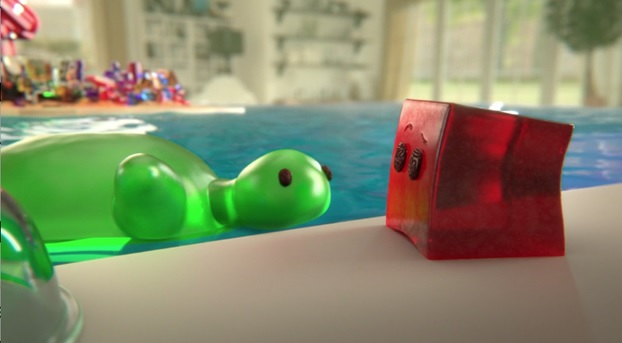
Different Types of Animation Styles
Animated videos are a great way to connect with viewers in an impactful and memorable way. They can be used to create explainer videos, product demonstrations, and more. By partnering with a professional animation studio or an experienced freelancer, you can create unique and engaging content to share with your target audience.
One of the most important steps in the animation production process is choosing a style. Different types of animation styles convey different tones and are best suited for different purposes. To help you understand what your options are, here's a quick overview of some of the most commonly used animation styles.
Creative Humans makes it easy to find and hire top video production studios and freelancers. Create a Free Account to get started.
9 Types of Animation Styles
The best type of animation style for your production will depend on what you are hoping to achieve with your video. Additionally, different styles have varying cost and time requirements to keep in mind.
From standard 2D animation to stop motion , here are 10 of the most popular types of animation styles that you can choose from when creating your own animated video:
1. Traditional / 2D Animation

2D animation probably doesn't need much of an explanation. It's used to create flat, 2D characters and environments. While this is one of the oldest animation styles, its flexibility makes it a prominent choice for a variety of applications, including cartoons, promotional videos, explainer videos, and more.
In traditional animation, each frame was meticulously hand drawn, which can be very time-consuming. Today, animators have access to digital tools and techniques that help to streamline the 2D animation process.
2. 3D Animation

3D animation was quite revolutionary when it was introduced. Not only has 3D animation allowed animators to create more immersive, realistic animated experiences, but 3D animation also has practical applications in industries like medicine and architecture.
3D animation is often used for full-length movies, interactive advertisements, commercials, and other marketing materials. However, for simple explainer videos and similar projects, 3D animation isn't always the best option as it can be much more time and labor-intensive.
3. Stop Motion Animation
Originating over a century ago, stop motion is one of the oldest animation styles and can be seen in many classic animated movies.
To create stop motion productions, creators take pictures of still objects in a specific sequence and string these pictures together to create the illusion of movement. In addition to offering a unique aesthetic, stop motion is a fairly cost-efficient animation style due to a lack of need for expensive equipment and facilities.
4. Rotoscope Animation

Rotoscope animation involves taking live-action footage and tracing over it with a rotoscope tool—similar to traditional animation styles that involve tracing photographs onto glass panels.
Rotoscoping is often used in situations where it's necessary for the animated character to interact realistically with the environment. Rotoscope animation is typically cheaper than standard 3D animation and is great for commercials and films.
5. Motion Capture
Motion capture is a modern form of 3D animation that allows creators to create ultra-realistic animations based on live-action scenes. Motion capture is frequently used in the gaming industry to create realistic character animations and lifelike facial expressions.
The motion capture animation process involves dressing actors up in suits that track their movements and interactions so that they can be recreated with computer graphics.
6. Typography Animation

Typography animation is the practice of creating animated text. This animation style is often used in movies to create interesting title screens and credit segments.
Businesses can use typography animation to create explainer videos, interactive statistic models, interesting presentations, and employee training materials. This can also be one of the most affordable types of animation styles.
7. Mechanical Animation
Mechanical animation is used to break down the functions and configurations of mechanical products. It involves drawing and animating every detail and mechanism of a machine to create an informative visualization.
This animation style has practical applications in the engineering industry, as it can be used to make adjustments to products before development. Mechanical animation is also great for product demonstrations.
8. Claymation

Clay animation, or Claymation, is a type of stop motion animation that involves creating characters with clay and photographing their movements in sequences, just as you would with traditional stop motion animation.
Claymation has been most popularly used in classic children's movies like Chicken Run , as its unique, playful style is appealing to children. It can also be used to create unique shorts and commercials. Claymation is very time-consuming and is often best-suited for short projects.
9. Cut-Out Animation

Another form of stop motion animation, cut-out animation is probably most recognizable from the popular animated show, South Park . To create a cut-out animation production, creators utilize paper cutouts of characters that are superimposed on animated environments. While this animation style traditionally worked similar to shadow puppets, modern cut-out animation involves using scanned paper cutouts to streamline the process. Cut-out animation is ideal for cartoons, storytelling videos, and explainer videos.
Work with Professional Animators
Hopefully, this overview of the different types of animation styles helps you effectively plan your next animation project. Generally, standard 2D, 3D, and motion graphics animation are ideal for business marketing purposes, but depending on your specific project requirement, you may prefer one of the other styles included above.
If you're not sure which animation style best meets your needs, an experienced animation professional can help walk you through your options and choose the right one for your project.
Creative Humans makes it easy to find and hire top video production studios and freelancers. Create a Free Account to get started.
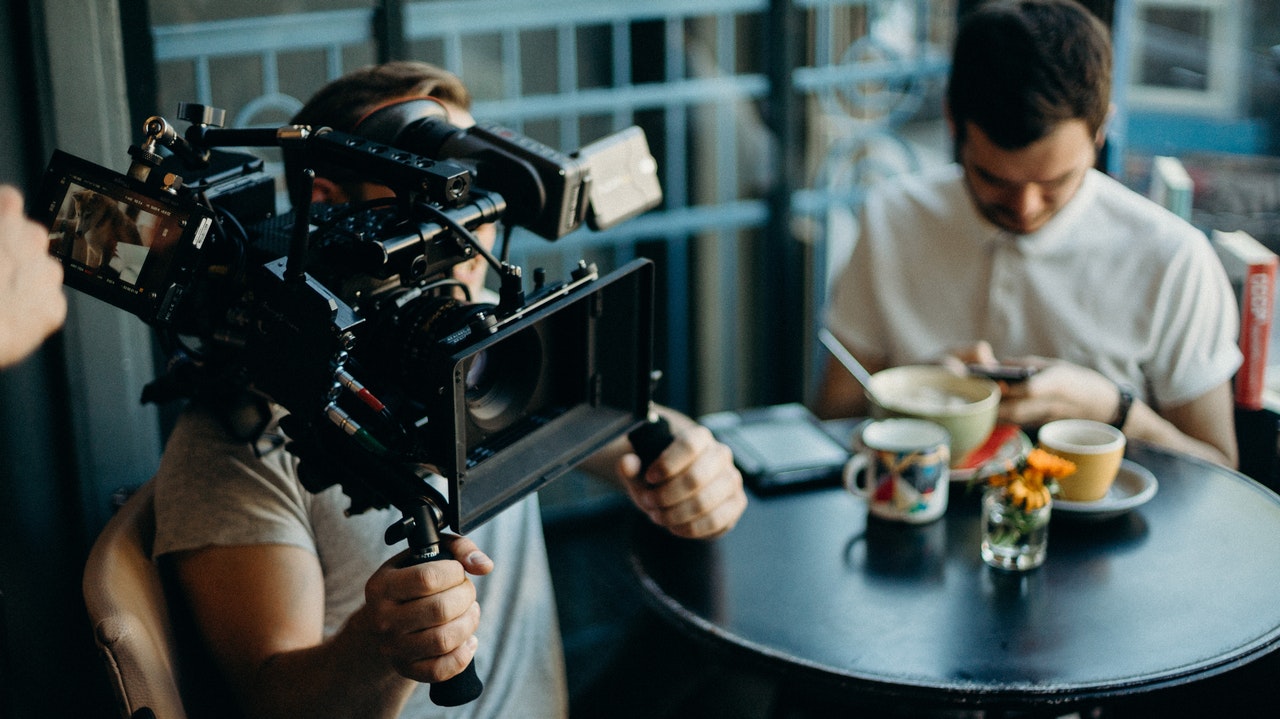
Video Marketing Statistics 2020: Is Video Marketing Worth It?
Video marketing has always been considered a critical aspect of both traditional and digital marketing. Videos can be used to communicate company mission statements, explain new products and services, create tutorials, and much more. Overall, they are a great way to connect with customers in a versatile and engaging way.
But is video marketing actually worth it? Is the video production process worth the time, money, and effort? Before investing in any marketing initiatives, it's important to understand what returns you can expect to achieve. To help you explore the value of video marketing, check out these video marketing statistics for 2020.
Creative Humans makes it easy to find and hire top video production studios and freelancers. Create a Free Account to get started.
8 Key Video Marketing Statistics
Is video marketing worth it? The shorter answer is: Yes, it is. But if you need some more convincing before you invest in a video production project, here are eight statistics that demonstrate the value of video marketing.
1. Videos Are in High Demand
Demand for videos from brands and businesses is high and quickly growing. According to HubSpot, 57% of consumers from ages 18 to 24 prefer to see video content from businesses they support over other types of content. 56% of consumers from ages 25 to 34 feel the same. In fact, the only age group to not share this preference is consumers that are 55 or older—but still, 47% of these consumers tend to favor video content.
2. More Effective Messaging
When it comes to digital marketing, the first challenge is getting your target audience to view your content in the first place. The second challenge is effectively communicating your message through this content. This is where video marketing shines.
Per Invisia, consumers tend to retain 95% of a brand's message when they receive it through a video compared to 10% when delivered through text.

3. Videos Enhance Your Social Media Marketing
Generating shares is key to a successful social media marketing campaign. Videos are much more likely to be shared than other types of social content. Compared to text and image content, social videos generate 12 times as many shares! If you're struggling to create share-worthy content on your social media channels, video marketing may be the solution.
4. Increased ROI
ROI is king when it comes to measuring the success of your marketing efforts. This metric is one of the best indicators of your ability to acquire leads, increase traffic, and generate conversions.
In their 2020 report on video marketing statistics, Wyzowl found that 89% of video marketers say video gives them a good return on investment, and 87% say that video marketing has increased their website traffic.
5. Video Marketing is Becoming Even More Popular
If everyone else is doing it, it might be a good idea to consider utilizing video marketing as part of your overall digital strategy. According to the same Wyzowl report, 85% of businesses use video marketing compared to 87% in 2019, 81% in 2018, 63% in 2017, and 61% in 2016. This tells us that companies are increasingly realizing the value of video marketing and choosing to integrate it into their marketing campaigns.

6. Landing Page Performance
Increasing web traffic and acquiring leads is an incredibly important step in the sales funnel. Once there, your website needs to be able to convert those leads into paying customers. According to Campaign Monitor, including a video on your landing page can boost conversion rates by as much as 80%.
7. Videos Aren't Just for B2C
Video marketing is widely known to be an effective way to facilitate communications between businesses and consumers, but what about B2B video marketing? Is video marketing still worth it for B2B businesses?
The stats say yes. The Content Marketing Institute found that 71% of B2B marketers use video marketing, making it more widely used than case studies, infographics, webinars, white papers, and eBooks.
8. Improve Search Engine Rankings
Search engine optimization is a vital aspect of digital marketing. Successful SEO campaigns help increase brand awareness, web traffic, lead generation, and sales conversions. As such, it's important for marketers to do everything they can to improve their search engine rankings.
Invisia found that websites that include a video are 53 times more likely to reach the front page of Google.

Hire Video Production Professionals
As you can see from these video marketing statistics, the answer to the question, 'Is video marketing worth it?' appears to be a resounding yes. But to take advantage of this powerful medium, you need to create high-quality video content that clearly conveys your message and appeals to your target audience.
The best way to accomplish this is by working with a professional video production company. From pre-production to filming and editing, a professional production company can oversee the production process from end-to-end, helping you to create a high-quality, high-converting video campaign.
Search the Creative Humans directory to find and hire expert talent for your video production project.
Creative Humans makes it easy to find and hire top video production studios and freelancers. Create a Free Account to get started.
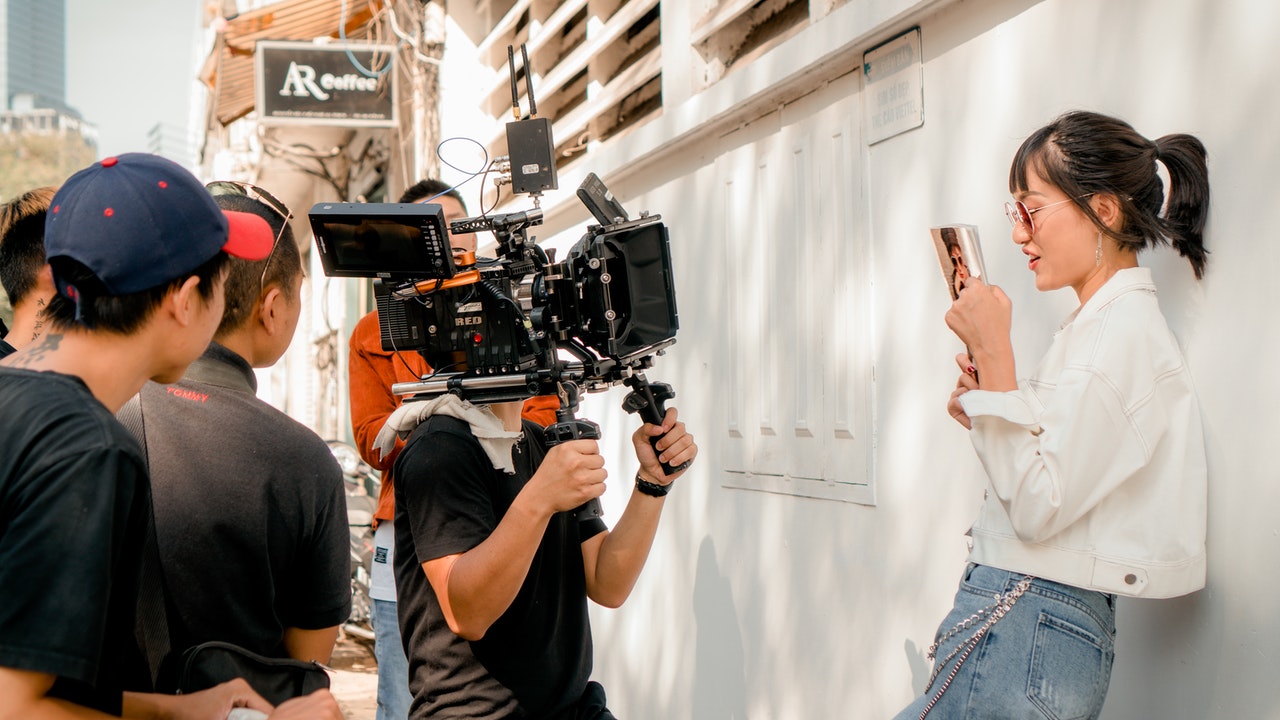
Live Video Tips & Best Practices
Live video streaming is gaining traction as an impactful and cost-effective marketing strategy for a variety of reasons. It's accessible, the entry cost is low compared to other video productions, and it offers an engaging way to interact with customers.
Live streaming also helps businesses connect with audiences on different channels, as it is available on a wide variety of platforms, including LinkedIn, Facebook, Twitter, YouTube, Twitch, and more.
But live video production is still a relatively new tool that many marketers are still adjusting to.
How can you get started, and what can you do to optimize your results? Here are a few live video tips and best practices to help you get the most out of your live videos.
Creative Humans makes it easy to find and hire top video production studios and freelancers. Create a Free Account to get started.
Live Streaming Best Practices
80% of consumers prefer watching live videos over reading blogs from brands, making live streaming a great way to engage your core audience.
If you're trying to prepare for your first live video production or are looking for ways to improve upon past events, here are five helpful tips for hosting an impactful live video event.

1. Speed is vital - Check Your Internet
Of course, one of the major downsides of live events is that technical difficulties can derail the stream and negatively impact the experience for everyone involved. While you can't control everything, it's important to pay special attention to key components that can impact the quality your live stream—like your Internet connection.
More specifically, make sure to keep track of your Internet upload speed. For a smooth 1080p stream, you generally want to have an upload speed of at least 5 Mbps, and ideally, around 10 to 15 Mbps. Use a cabled connection whenever possible, as Wi-Fi can be spotty.
67% of viewers say the quality is the most important factor in a live stream, so make sure your Internet connection isn't sacrificing your chances of success.
2. Advertise - Promote the Event
A successful live event requires promotion. Otherwise, you aren't likely to get the value out of the event that you expect. There are several ways you can raise awareness for a live video event:
- Send an email newsletter announcing the event
- Post about the event frequently on all related social channels
- Create a hashtag campaign
- Create a Google Ads campaign
- Ask associates to help promote the event
Additionally, to maximize viewership, you can stream the event across multiple platforms at the same time. You should also schedule the event during a time block that is convenient for the majority of your audience.
3. Practice - Test Your Stream
Live video streaming can be unpredictable. The best thing you can do to prepare for a live event is to test your stream set up frequently prior to the event to iron out any issues.
In the days leading up to your event, schedule a few different times to test your stream. Make sure to check for audio issues, quality issues, chat functionality, lighting, equipment issues, and anything else that could derail the event.

4. Communicate - Engage with the Audience
Live video events offer one stand-out benefit that can't be matched by other forms of digital content: direct audience engagement.
If you aren't actively engaging with your audience throughout the live stream, you're missing out on much of the value that live video offers. As mentioned, you can increase engagement by choosing moderators to interact with viewers throughout the event.
Depending on the nature of your event, it may be difficult to actively engage with viewers throughout the entire production. In these cases, consider planning a portion of the event for audience questions and comments.
5. Parental Supervision - Moderate the Stream
When hosting a live video event, moderation is an important factor that shouldn't be overlooked. Moderation includes activities such as removing inappropriate comments, suppressing spam, responding to audience questions and comments, and more.
Make sure to select one or a few people to moderate the stream. This will help improve engagement and create a more inclusive space for your audience.
Hire Live Video Production Specialists
Live video streaming is a fantastic way for brands to connect with their audience in a more meaningful way. As live streaming continues to grow in popularity, now is a great time for businesses to implement live video into their content strategy.
To get the most out of your live video efforts, it's important to take steps to optimize the quality and engagement of your stream. Professional live video production companies and freelance professionals have the expertise and knowledge needed to help you set up a successful live video event.
Search the Creative Humans directory to find and hire expert talent for your live video production project!
Creative Humans makes it easy to find and hire top video production studios and freelancers. Create a Free Account to get started.

How to Make a Branded Documentary
Many companies are discovering the value in producing branded documentaries that move away from a hard pitch to offer education and inspiration to their audience. Documentaries provide a great opportunity to promote transparency while building a feeling of authenticity and establishing a community around your brand. To get the best results from your project, here's how to make a branded documentary that truly engages and inspires your audience.
Creative Humans makes it easy to find and hire top video production studios and freelancers. Create a Free Account or Post a Job to get started.
Choose the Right Topic
Though a documentary can be made about virtually any subject, a powerful documentary needs to focus on a compelling topic. The more attention-grabbing and intriguing your topic is, the more likely people will watch it.
In the case of a branded documentary, seek out a topic that is relevant to your brand. What causes do you stand for? What problems does your company work to solve? What is the brand's lifestyle all about—and can you find any interesting characters or stories that embody that lifestyle? Does your company itself have an interesting or inspiring story?
- Vans, an edgy shoe company, produced an acclaimed documentary covering skateboarder culture in Southern California.
- Patagonia regularly produces mini-documentaries centered around environmental protection, wildlife, prominent outdoor athletes, and more.
- Dick's Sporting Goods produced an Emmy award-winning documentary following the story of a 40-year rivalry between two high school football teams who suddenly merged due to budget cuts. The students had to work together to inspire one another, overcome their differences, and pursue victory.

Show, Don't Tell
This is not the time for a hard sale. Don't tell your audience how your brand is helping to improve a problem or the benefits of your next product. You're not producing an informercial. Your goal with your documentary should be to create engaging content that speaks for itself. Immerse your audience in your brand's message, don't shove it in their face.
Define the Scope
Create a plan for the filming details, such as how long the documentary will be, how it will be distributed (i.e., theaters, television, online), and what the budget is. All of these factors will establish the overall plan for your documentary.
Do the Research
Thoroughly research your subject, including opposing viewpoints. Even if your documentary's point-of-view is intended to be firmly on one side of a controversial issue, it's important to examine other views to help strengthen and support your argument.

Gather Material
To supplement the footage that you will shoot, seek out archival photos, videos, audio, and other materials that can help to illustrate your subject. You will likely need to acquire permission to use these materials in your documentary. Collect a surplus of material, so you can have backup options if you are unable to get the rights to use certain materials.
Even experienced documentary filmmakers might gather dozens or even hundreds of hours of material and only use a fraction of it in the final cut.
Create a Presentation Plan
Some documentaries feature voiceover narration throughout, while others feature hosts as on-camera guides to advance the narrative. Still other documentaries rely solely on subject interviews. Decide what would be the most effective presentation for your material.
Conduct Interviews
It's an excellent idea to include experts or eyewitnesses in your documentary to provide context and details. Determine who would be the best individuals to feature. Depending on the length of your documentary it will probably be best to limit the number of interview subjects. Because of that, you should feature the subjects who could provide the best material.
When recording interviews, it's best to work with a professional crew to ensure that your footage has high-quality lighting and audio.
Create a Shoot Plan
When determining how to shoot your documentary, you should consider how your documentary will be viewed. A nature documentary with sweeping shots of landscapes, for instance, would likely look best on a big screen and shot with a high-quality camera. An interview-focused documentary, however, will likely be shorter with closer shots. Once you have your goals defined, your production team can determine the ideal equipment for shooting your project.

Write a Script
Though many documentaries attempt to document reality as it happens, most documentaries include at least some scripted content to put the footage into context and to better engage the audience. While writing a script, determine how your archival material and interviews would best fit into your presentation.
Edit Your Materials
You may be overwhelmed by the amount of archival material, research, interviews, and footage that you have at your disposal, but the purpose of your documentary is to tell the most effective story. Editing will shape your documentary's message and it will help you determine if you need to compile or shoot additional material. The editing process may take several rounds.
Add the Finishing Touches
Motion graphics like titles, animation, and text overlays will give your documentary a professional presentation. These production enhancements can make your audience take your documentary more seriously.
Plan for Release & Promotion
As your documentary approaches its release date, prepare a plan on how to promote it to your target audience. Utilize your media channels and seek partnerships with other brands or organizations that might collaborate with you on your release to increase views.
Hire Professional Documentary Production Talent
The best way to make an engaging branded documentary? Work with a professional team. No matter what your documentary's topic or focus is, a professional production team can assist you in creating thought-provoking, influential content. Experienced documentary production talent can assist you in all aspects of crafting your project. To find the best documentary studios and freelancers, browse the Creative Humans directory today.
Browse Directory
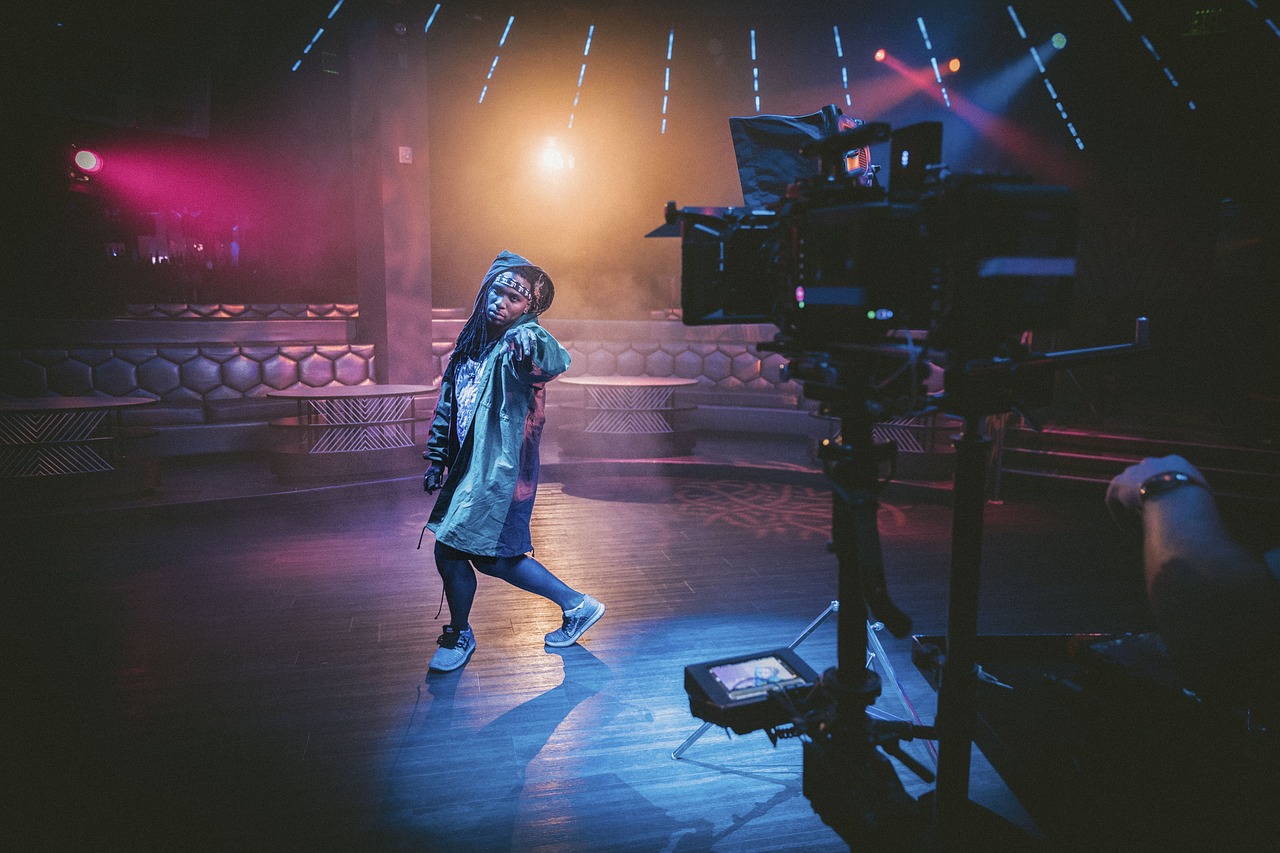
Video Production Cost Guide: How Much Should Your Video Cost?
When you ask a production company "How much does a video cost?" you're not going to get a simple answer. On the lower end, the average cost of a professional video production runs from $10,000 to $30,000 while higher-end productions cost hundreds of thousands of dollars. But what factors actually influence the cost for your video? That's exactly what we'll walk you through in this video production cost guide.
Interested in hiring an experienced and vetted video production company to produce a video for your brand? Browse the Creative Humans Directory or Post Your Job on our job board to get started.
Video Production Cost Factors
The quote that video production vendors will provide you will be based on several major cost factors for your project, including but not limited to:
Your Crew
Most video production professionals have a full-day or half-day rate that they will factor in when determining how many days it will take to shoot your project. Other production professionals may charge you by the hour. It's a good idea to ask potential candidates for your project to disclose their day rate ahead of time.

Location
Whether you shoot your video in a studio or on-location, there will likely be a cost for filming there. The Location department will scout and negotiate the location fee for you.
Transportation
Shooting on an exotic location on a remote snowy mountain peak will cost far more than filming in a studio with a local crew. You'll need to pay for people's travel time, transportation and accommodations. If you're hoping to save money on your project, stay local if at all possible.
Gear
The larger the camera you want to shoot on the more expensive the rental. Does your location need to be lit with a 4k or Kino Flos? Do you need a dolly or a gimbal to create fluid floating shots? If you are recording sound, each actor will need a wireless lav or will need to be boomed by an audio person. The gear you bring to set will dictate the look and feel of the video. It can get expensive, but the right equipment can elevate your spot to look and sound like a professional production.

Post-Production
After your video is shot, it will require post-production services like color correction, editing , motion graphics , and sound mixing before it is finished. The longer or more complex your final video needs to be, the more post-production time and effort will be required.
Voice Over
If your video will feature voice over narration, you will need to factor the cost for hiring voice over talent into your budget. While it may be tempting to do it yourself to try to save money, this is not an area where you should skimp. Poor quality voice over can detract from the quality of your video and limit the impact of your campaign.
Key Factors to Control Video Production Costs
Be sure to review any quote you receive to determine what is included in that price and inquire about what services would be an additional expense. There are some particular aspects of a video production that could substantially increase costs. These include:
Preparation
Being charged overtime on a project can significantly overspend your budget. All talent involved in the production should be prepared the day of the shoot to perform their duties properly. The cinematographer should know his or her shots, actors should know their lines and blocking, and the director should have a detailed plan for getting from shot to shot. Going back into production for reshoots can be extremely expensive.

Actors
You should not cut corners when it comes to on-screen talent. Hiring professional on-camera talent for your video is important. The more experienced the actor, the higher his rate will be, but the better their performance will be as well. When you film a person who is not trained for on-camera work, they can appear stilted and uncomfortable. A bad performance isn't something you want to fix in post. The production company you hire will be able to cast the spot for you, or they will have recommendations of casting agencies that will be able to find you the perfect on screen talent.
Visual Effects or Animation
While high-quality visual effects or animation might make your video stand out, they also could break your budget. For visual effects , vendors typically charge by number of shots. For animation , vendors typically charge by each minute of animation.

Music
Music drives video and is an important part of any video. The cost for music varies dramatically depending on what you are looking for. Will you need original music composed for you or will you be using stock? If you want to licence a popular song, that can be extremely expensive.
Hire a Professional Video Production Company
Have you drafted a budget for your next video production but aren't sure if it would cover the project that you have in mind? Creative Humans makes it simple to search for and hire talented production companies and freelancers who can help you produce exceptional video content on nearly any budget. Explore the Creative Humans directory today!
Browse Directory
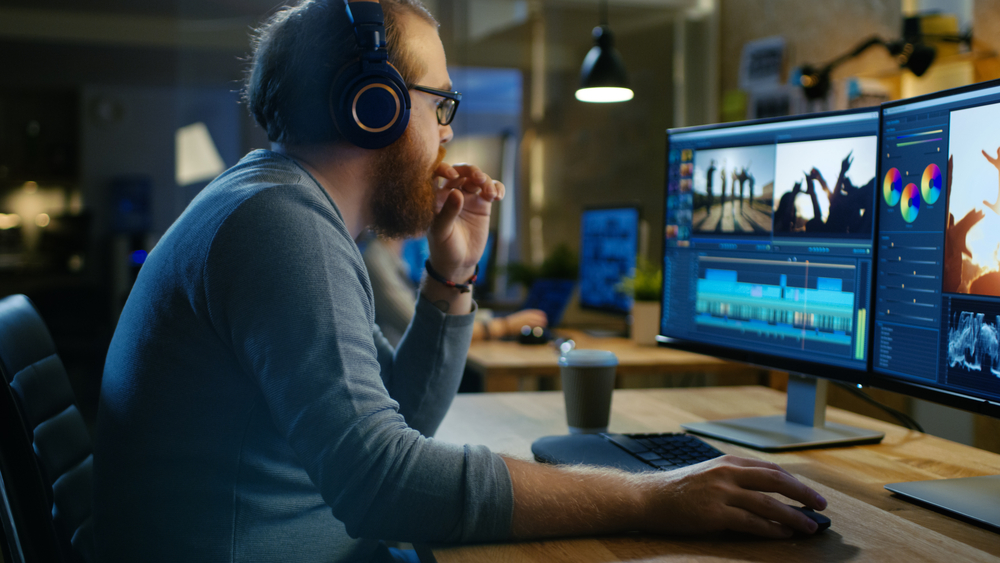
10 Reasons to Hire a Professional Video Editor
In today's crowded world of online media, competition is fierce. You'll need your video to be interesting and professionally produced to stand out from the crowd and get the results you're hoping for. Editing is not a task that should be delegated to someone without experience. A talented video editor can ensure that your final video is as exciting and engaging as possible while saving you time and providing helpful advice every step of the way. Still don't believe us? Here are 10 reasons why you should hire a professional video editor for your next project!
Are you looking for a cool, talented, experienced video editor to finish your project? Browse the Creative Humans Directory or Post Your Job on our job board to get started.

Image source
1. Speed
Editing can be a tedious process, especially for those who do not have experience sorting, trimming, and sequencing video and audio clips. A professional video editor will finish your production faster, more efficiently, and with better results than an amateur using the free editing software preinstalled on their personal computer.
2. Good Taste
A shoot for even a short video project could produce several hours of footage. Determining the best takes to use in the final product can be challenging for an inexperienced editor. A professional editor has experience determining what takes look best together and can be an essential asset to help ensure your content flows in the most clear and effective way possible.
3. Attention to Detail
Your video project may have started as one big idea, but by the time it is finished, it will be composed of hundreds (or thousands!) of individual frames. Professional video editors are trained to focus on even the smallest details that contribute to the overall quality of your finished project, leaving you free to focus on other aspects of your content.
4. Movie Magic
Editing video is not just arranging clips into their proper sequence. A professional editor can also assist with post-production details like color-correcting your footage, applying filters and custom settings to each frame, syncing the audio and video, and maintaining continuity between shots. These are essentials for creating professional-looking video content that an amateur could easily miss.
5. Quality Audio
While you might be focusing on the visuals of your project, the sound included in your final video should also be of the highest quality. A professional editor will be equipped with a library of superb sound effects and music that will elevate the overall presentation of your project and they will edit it to align with the music making it look and sound picture perfect.

Image source
6. The Best Tools for the Job
Most personal computers come with basic editing software. This leads many to believe that they can save a buck by just editing their own video content. But those programs simply aren't equipped to handle the high-quality visual and sound effects that your project will need. A professional editor will have state-of-the-art software like Avid Media Composer, Adobe Premiere Pro on their high speed suped up computers that are specially designed for editing and graphics.
7. Knowing What's Missing
In addition to professional software and equipment, an experienced editor brings a wealth of knowledge from other productions to your project. While editing your project, an editor can consult you on any shots or sequences that they feel are missing from your footage, helping you to get a better final product. These recommendations will be invaluable if you need to reshoot any part of your project.
8. More Options
A professional video editor can create a rough cut of your project to view before proceeding to finalize the edit. Don't like some things that you see in the rough cut? An experienced editor can quickly recut the sequence or apply different effects to your footage to give you other options to consider.
9. Deadlines
Experienced editors are used to working under time constraints and pressure. Many of them even have experience working on live television where they have to make split-second decisions. You can rest assured that a professional editor can complete your projects and deliver quality work by whatever deadline you have.
10. More Runtimes
If your project has time constraints for its medium (television, social media , etc.), a professional editor can offer you several cuts or runtime options. For example, because standard TV commercials run in 15, 30, and 60-second slots, many brands will create three versions of the same commercial to fit each slot. A skilled editor is an experienced storyteller and can tell the same approximate narrative with your footage no matter the allotted length.
Hire a Professional Video Editor Today
You're investing a lot in the creation of your video content. Hiring a professional video editor can help you get your money's worth while ensuring your content looks its best.
Browse the Creative Humans Directory or post a job on our job board to find the best talent for your project.

How to Make an Animated Video for Business
You don't need to own a multi-billion dollar company to reap the benefits of animated videos. Businesses of all sizes can engage potential customers with short animated videos on their websites, social media accounts, email campaigns and more.
Animation is an extremely effective way to explain what your brand is all about, why consumers should choose your products or services, and what sets you apart from your competition. Most importantly, animation is visually engaging, fun and appeals to nearly every audience. Here's how to make an effective animated video for your business.
Looking for the best animation studios and freelancers? Browse the Creative Humans Directory or Post Your Job on our job board to get started.
Animated Video Benefits for Business
Animation offers many benefits for businesses, including:
Increasing customer engagement . A growing number of consumers are using online videos to help them make purchasing decisions. An animated video can help your brand stand out from your competition.
Professional presentation . A well-produced animated video elevates the perceived level of professionalism of your product or service by demonstrating your message in a colorful, impactful way.
Versatile content . An animated video for your business can be repurposed for numerous uses. You can repurpose your video for use on a landing page, as social media content , as an intro for a presentation, or as content to play on a monitor at exhibitions or conferences.
Universality . Perhaps most importantly, animated figures and content can be created to represent any demographic—or none at all. This will allow you to market your product or service globally. If your animated video features narration, it can be translated into any language as well.
Types of Animated Videos
There are several different types of animated videos to consider for your business. One style may be better suited for your project than another. Here's what you need to know:
2D . Traditional "flat" animation is the most commonly used form. It is often the most cost-effective, because it can be created with relatively inexpensive software like Adobe Animate. 2D animation can be rendered to appear like classic hand-drawn cartoons, or it can incorporate sleeker, more modern designs.
3D . Computer-generated 3D animation can look stunningly realistic and draw comparisons to imagery from blockbuster movies, modern video games, or virtual reality. Unsurprisingly, the more high-quality 3D animation is, the more time and money will be required to render it.
Stop Motion . For stop-motion animation , animators stage physical models and shoot objects one frame at a time to create the appearance of motion. While this can be a time-consuming process it can be used to create fun, incredible and unique visuals.
Infographic . Instead of depicting animated individuals or characters, infographic animation prominently features shapes, icons and text. If you have a complicated message you need to present, this can be a cost-effective option.
Animated Video Production Tips
No matter what animation style you choose, here are several tips to help ensure your animated video is effective:
Plan It Out
Every frame of animation will cost money to produce. In fact, that is how animated jobs are priced out–by the second. You don't want to spend your budget on animated sequences that you will not use in your final video. A script will be written first, then that will be storyboarded out. During this process, you'll finalize the look, feel and voice of the video before going into production.
Use Narration
Many animators specialize in character animation. This is a unique skill set that you will want the right artist to take on. When your animated characters have dialogue to say, it will require additional animation to depict mouth movements and facial expressions. By using narration instead, the animation can be less detailed and can be completed quicker. The narration can also be altered or replaced as needed to serve a new audience or tweak your messaging.
Keep It Short
Shorter, simpler videos at 30 seconds or less can be much more impactful and versatile. In general, shorter videos will also cost less and have shorter production times.
Use Background Music
Background music will help the flow of your animated video and add to its quality and entertainment value. The right music will also help provide the intended emotional feel and pace that you want your video to have.
Hire a Professional Animation Studio
You might be convinced that creating an animated video for your business is a must, but you may not know where to start. No problem. An experienced animation studio can assist you in creating the ideal content to promote your message. Search the Creative Humans directory of professional animation studios and freelancers to find the best talent for your project.
Find & Hire Animation Studios
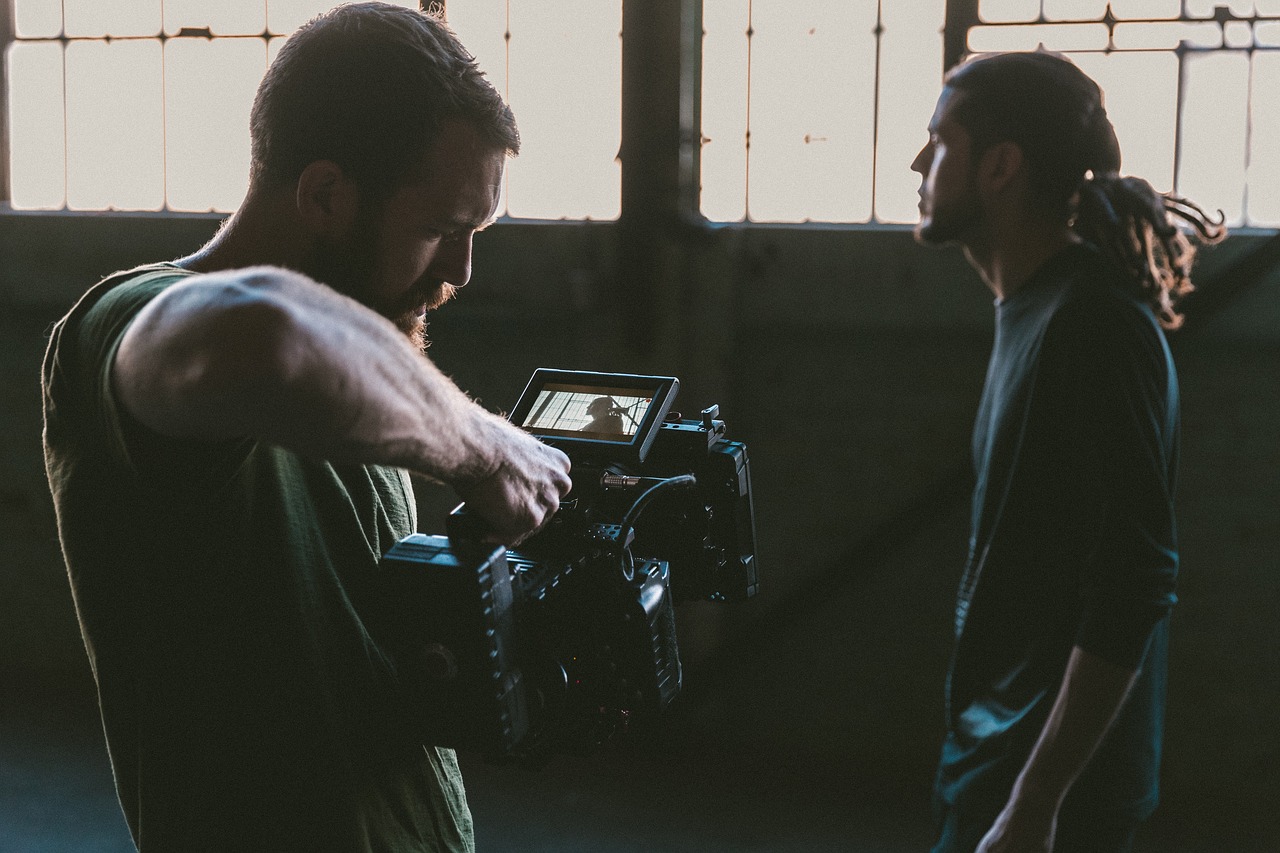
What is a Sizzle Reel? Take Your Branding to the Next Level
A "sizzle" or sizzle reel is a 1-2 minute promo video designed to give a quick, stylized overview of your brand and/or offering. Traditionally, sizzles have been used by various filmmakers such as production companies, directors, editors, cinematographers, animators to feature a fast paced montage of their best work. Other industries have adapted the format for their own brand objectives, such as a launching new product or promoting an upcoming event. Here's everything you need to know to create a successful sizzle!
Looking for experienced production talent to create a dynamic sizzle video for your brand? Browse the Creative Humans Directory or Start Your Job and post it on our job board to get started.
The Value of a Great Sizzle
Think of a sizzle video as a movie trailer for your event, product or service. Similar to a trailer, the purpose of your video is to create anticipation and excitement for your offering by enticing the viewer with exciting, energetic content. An engaging sizzle can offer substantial return on investment by easily increasing brand awareness and excitement.
Another great benefit of sizzle videos is the ability to repurpose existing footage into a new, exciting video. Most people want to create sizzles out of pre-existing footage they have. With the production landscape being what it is right now, this is a great way to hire someone to work remotely and still make a great ad for you.
Tips to Create an Effective Sizzle Video
Here are some tips for creating the best sizzle video for your brand!
Know Your Goal
There are many potential goals for a sizzle reel, such as building brand recognition, demonstrating your services, or promoting an upcoming event—among many other possibilities.
Your first step should be to determine your goals for the video and how your video could best service those objectives. Make sure that your call to action—what you hope the viewer will do after watching the video—is clear.
First Impressions
The most impactful content in your sizzle reel should come at the very beginning. Not only is this the first opportunity to hook your viewer, but you want the viewer to watch the entire video as well. Eye-catching visuals with bright colors and fast-paced music would be ideal choices for your video's opening.
Make Sure it Sizzles
The word "sizzle" implies content that is hot and buzzworthy—two words that should be used to describe your video when it's complete. While a sizzle reel can contain narration or subtitles, it should not be an explainer video . This is not the place to include detailed instructions on how to use your product or service or descriptions of the history of your brand. Viewers can seek out the details after your sizzle reel piques their interest. Instead, your reel should be used to build excitement and engagement.
Work with a Professional Team
To get the best quality video, turn to a professional team. An experienced editor and production team can help you from concepting, filming to post-production. Your team can help you to create additional assets from your reel, such as different versions targeted at various audiences. shorter or longer versions, and more. These can be great assets for all of your digital marketing channels.
Working with professional cinematographers also guarantees that whether you are filming real people or actors that they will look great. When casting models or actors you should remember to reflect the demographics you are targeting.
You don't want your footage to look lousy so be sure to always hire a strong cinematographer for your project.
Keep It Moving
A typical sizzle reel runs 1 to 2 minutes, but some run as short as 30 seconds. Whatever the length, you'll need to share many engaging visuals featuring your brand or offering in a short period of time. A sizzle reel should be tightly edited to pack as much visual content together in order to maintain the viewer's interest and level of excitement.
Don't Forget The Music
In addition to exciting visuals, the right music is also essential for an effective sizzle. As most sizzles don't have a voiceover or words, it will be up to your music to build the excitement. Your music should be fast-paced, playful, and something that the editor can use to cut to. If you use a slow song, you'll have a slow video.
Thumbnails & Engaging Copy
If you'll be sharing your video on your website and through your social media channels (and you should), your video's thumbnail should be eye-catching and visually engaging. This image is like your movie poster; it's what the audience first sees and engages with. Talk to your team in advance and consider bringing in a still photographer or using a frame from the most visually stunning sequence in your video.
Post Production Shapes Your Story

Plan for the post production of your sizzle reel to take much longer than the length of the shoot itself. Editing , a nimation and adding visual effects can take time to put together—but high-quality work is worth the wait!
To find experienced editors who can create the ideal presentation of your sizzle reel project, browse the Editors Directory at Creative Humans.
Distribution - Get Your Video Scean
While you're creating your sizzle reel, prepare for its launch and how you will share it with your audience. Featuring it on your website or social media are great first steps. Be ready to share it with your email list as well. If you don't have an email list yet, you can create one from the contact information of your previous customers. Consider collaborating with another brand that has a similar audience to reach new potential customers through their marketing channels as well.
Depending on your goals and budget, you may also want to consider paid distribution channels for your video. For instance, you can pay to have your video distributed as an ad on YoutTube. You could also "boost" your post on social media platforms, using targeting tools to reach your preferred demographics for a fee based on impressions. If you're unfamiliar with paid distribution, consider working with a third-party marketing agency for assistance.
Create the Perfect Sizzle Video with Creative Humans
By now, you likely realize how valuable an effective sizzle reel can be for promoting your brand. Browse the Creative Humans directory of video production companies and freelancers today to find all the talent you need to create the perfect sizzle reel.
Browse Directory
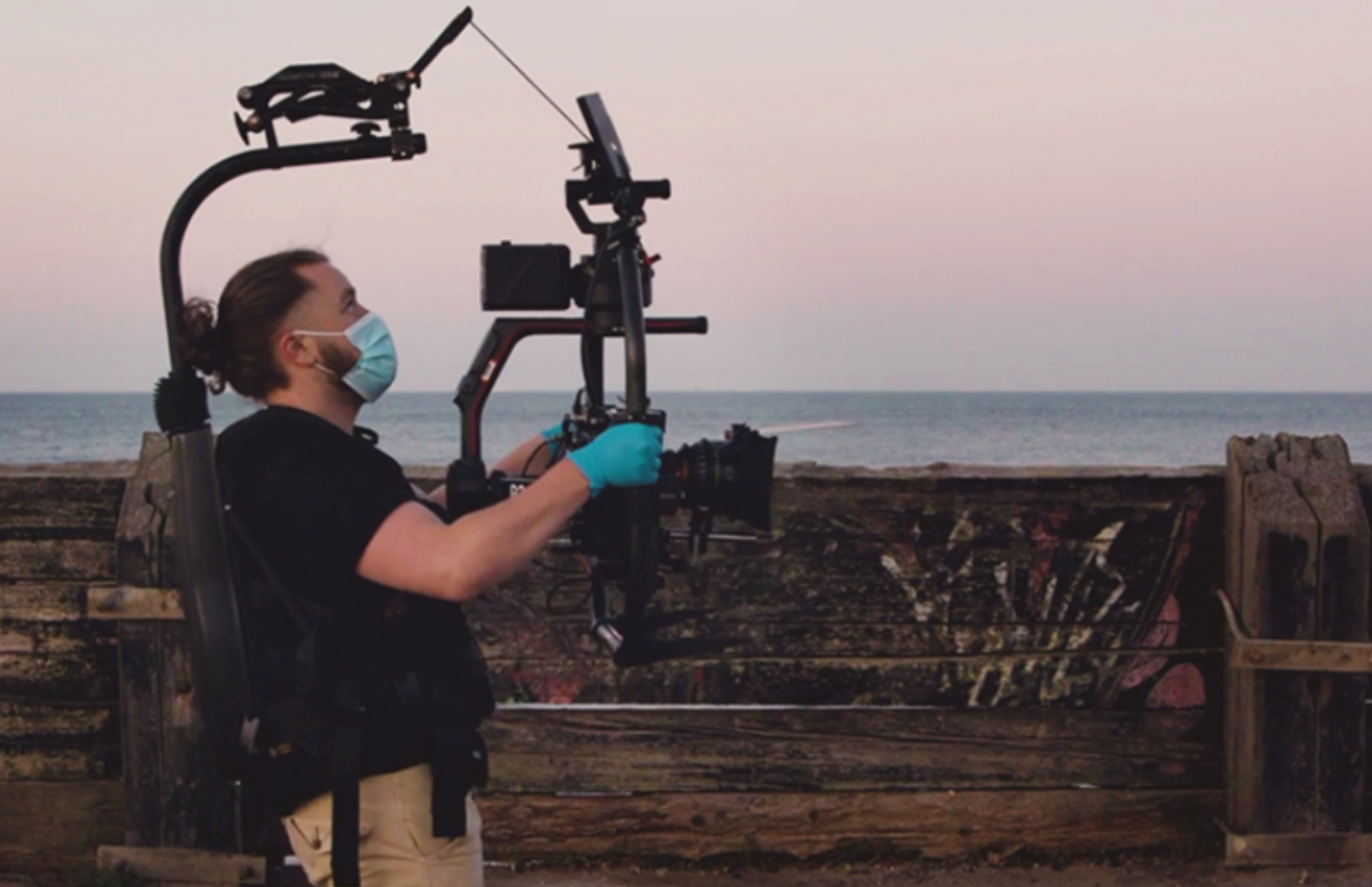
How to Follow Covid-19 Shooting Guidelines
In the next major step toward the resumption of film and television production, the Directors Guild of America (DGA), International Alliance of Theatrical Stage Employees (IATSE), International Brotherhood of Teamsters (IBT) and the Basic Crafts, and Screen Actors Guild-American Federation of Television and Radio Artists (SAG-AFTRA) today released "The Safe Way Forward," a Multi-Union Report on Covid-19 Safety Guidelines.
Testing is the Key to the Resumption of Production
The Unions and Guilds quickly determined that a comprehensive, mandatory testing regimen would need to be the cornerstone of a safe return to production in a pre-vaccine landscape.
Testing Frequency and the Zone System
The Guidelines lay out that:
- Every member of the cast and crew be tested for active Covid-19 infection before their first day of work to ensure they are not shedding the virus. Cast and crew members will then be subject to regular testing protocols during the course of their work on the production.
- Given that performers are uniquely vulnerable for the reasons described above, the Guidelines require a higher testing frequency of at least three times a week at minimum for them as well as those with whom they come into close contact.
- Individuals who work in areas like the production office – where physical distancing and PPE can be utilized – can be tested less frequently, at a minimum of once a week.
The Guidelines require the implementation of a specialized "Zone" system laying out barriers within which those on set can flow based on proximity to cast, level of testing, PPE and the extent to which physical distancing can be observed in the performance of their work. Cast and those with whom they come into frequent contact would be grouped in Zone A, while other individuals on set would be grouped in Zone B. The Zone system is the structure and foundation around which all on-set Covid-19 safety decisions should be engineered. A detailed tour of the inner-workings of the Zone system is included in the Guidelines.
New Health and Safety On-Set Positions
To execute testing and the Zone System, the Guidelines require the creation and staffing of two new positions/departments with authority to oversee the production to ensure the Guidelines are being followed, and to take immediate action to correct any unsafe practices or conditions:
- A Health Safety Supervisor (HSS) (referred to in the Industry White Paper as the "Covid-19 Compliance Officer") would be in charge of the testing process, hire and coordinate the necessary Covid-19 medical staff, and be responsible for related health safety for the production. The HSS has the authority to pause the production in event that a breach threatens the health of the cast or the crew.
- There would also be a Health Safety Department, with a Manager and staff. The Health Safety Unit Manager (HSM) would oversee the execution of HSS directives in conjunction with the directors' team, and other relevant department heads.
The full set of Guidelines, and a listing of the experts consulted by the Unions and Guilds, can be found via the link below The document will be updated with further specific safety protocols as they are developed.
https://www.sagaftra.org/files/sa_documents/ProductionSafetyGuidelines_June2020EditedP.pdf

10 Facebook Video Ads Tips to Get Results
As the most popular social media network worldwide, Facebook offers brands incredible opportunities to promote their products and services with video ads. However, crafting the perfect ad for Facebook is different than creating a commercial or even a promotional YouTube video. Here are 10 essential Facebook video ads tips to help you get the best results.
Want experienced production talent to help you create Facebook video ads? Search the Creative Humans Social Media Video Production Directory or Post Your Job on our job board to hire expert talent.
Target Your Audience
As of September 2019, Facebook has over 2.5 billion active users. While that is a staggering number of potential customers, trying to promote your product or service to all of them would be impossible. Instead, it's important to determine the audience you are trying to reach with your advertisement and what visual and story elements would most appeal to them.
If your budget allows, consider creating multiple advertisements that each appeal to the sensibilities of different target markets.
Sound Off

Analysis indicates that up to 85% of all video views on Facebook are viewed without sound. To that end, you should create a video ad that can still convey your message even if the viewer watches it muted. At the very least, the first seconds of your video should not feature key information in the audio (without supporting text) in case a user needs to manually turn the sound on.
Your video should still include audio for those who view it with sound, but consider utilizing suitable background music for your video instead of voiceover narration. When creating Facebook video ads, focus on the visuals associated with your brand that would most engage your target audience.
Keep Supporting Text Concise
As most users will be viewing your content on mute, it is important to include text to promote your message. In addition to a concise video description in your post, you can include captions and on-video text to provide context to your video. If you use Facebook's automatic "Add Captions" feature, be sure to review them for accuracy.
When drafting your messaging, keep your text as brief as possible. The purpose of your advertisement is to entice your viewers into clicking your link for more information, not to provide all the information in the advertisement itself.
Video Quality Matters
While anyone can shoot a Facebook video ad today with their smartphones or other devices, shooting high-quality video is a lot more challenging. You should record your footage for your ad in the best quality possible that your camera allows.
Facebook allows video ad uploads to be up to 4GB regardless of video length, so don't be overly concerned about file size when producing your video. Aim for the highest resolution possible. Be sure to follow Facebook's other specifications for video ads to ensure your ad appears as intended on viewers' screens.
Aim for an Immediate Impact

A Facebook user browsing their feed might only spend about 3 seconds on your post before scrolling past your ad. Because of that, you need to hook interest from the moment your video begins.
Eye-catching imagery will make your video too impressive to ignore. This also means getting your branding information in the video as quickly as possible so users know what they are watching before they decide to scroll.
To find the best VFX artists to create extraordinary visuals for your project, browse the Motion Graphics Designers Directory at Creative Humans.
Keep It Short, Really Short
Since you can only expect to hold the attention of a Facebook user for a few seconds, keep your videos short. One brand, for instance, saw a 271% increase in video completion rate after utilizing ads that were just six seconds long versus the brand's prior 30-second long ads. The shorter your video ad is, the more likely a viewer will watch the entire thing.
Go Vertical

TikTok isn't the only social media platform that embraces vertical video. A vast majority of Facebook users access the app on smartphones, so your advertisements should be primarily designed for mobile users.
A vertical video (9:16 ratio) will show up larger on smartphones than a horizontal video (16:9 ratio), meaning your vertical ad can make a greater visual impact on smartphone viewers.
Avoid "Clickbait" Elements
Social media users are becoming increasingly savvy to common techniques of "clickbait" advertisements, including misleading or sensational headlines ("You'll Never Believe How This Woman Became a Millionaire!"). While Facebook has made attempts to discourage clickbait headlines, they are still commonplace. You can still interest your target audience, however, by including authentic supporting text.
Use Engaging Thumbnails
To interest users who have turned off the video autoplay feature, your video's thumbnail must be visually engaging enough to get them to click "play." Be sure to create thumbnails that are primarily graphics-based, because Facebook reduces the delivery of an ad if the thumbnail contains text covering 20% or more of the video. Luckily, you'll receive a warning message from Facebook if your video is at risk for reduced delivery.
Learn from Metrics

Facebook provides advertisers with in-depth metrics on how their videos perform, including how many times 25%, 50%, 75%, and 95% of your video's length was watched by a user. While you won't know this information before creating your first video, once you have it, it can help you make creative decisions on future video ads to design videos that your audience will find most engaging.
Create an Effective Video Ad Today
After reading these tips, you should be prepared to promote your brand with Facebook video ads. To hire experienced production talent, search the Creative Humans Social Media Video Production Directory or Post Your Job on our job board.

How to Make an Engaging Explainer Video
Explainer videos are short videos that outline the essentials about your brand or product for your target audience. Because an explainer video is often the very first glimpse a consumer sees about your product, it needs to have an immediate impact. Here's how to make an explainer video that engages your audience, promotes your message, and gets results.
Want to create outstanding video content for your brand? Browse the Creative Humans Explainer Video Production Directory or Post Your Job on our job board to hire experienced production talent for project.
Develop Your Message & Script

The most important goal of your explainer video is to share a clear message. After watching, your audience should know how and/or why they should use your product or service. Determining your ideal messaging and writing a script upfront will save you both time and money, since you will be going into your shoot with a clear plan that a production team can expand upon to make your video.
When drafting your script, detail the key points your audience needs to know about your brand and your offering. You should work from the assumption that your viewers have never heard of your brand before. Consider important questions, such as:
- Who is your target audience?
- What problem does your audience have that your product or service can solve?
- How can your offering solve that problem?
- Why is your product or service the best choice for consumers?
- What is the clearest way to illustrate these concepts for the viewer?
It's best to keep your script brief. While there is no "perfect" length for an explainer video, shorter is generally better to help ensure you keep your audience's attention. Ideally, your video should be under two minutes—but consider striving to get your message across in no more than 30 seconds. Shorter explainer videos can also be repurposed as social media content!
Animated Explainer Videos

Image Source
The current trend in explainer video production is to utilize animation to deliver key messaging. Animation allows you to easily illustrate concepts with simple imagery and to use art and character design to best appeal to the sensibilities of your target audience.
There's no need to overshadow your message with flashy, expensive graphics. Instead, many effective explainer videos utilize simple, clean animation styles. The goal is to use visuals that best illustrate your point without distracting from your message.
To find the best animation production talent for your project, browsing the Animation Studio Directory at Creative Humans.
Live-Action Explainer Videos
While there are many benefits to animated explainer videos, animation may not be the best way to present every offering. For instance, if you are hoping to promote a new product, a live-action video may be the better choice, allowing you to demonstrate how the product works firsthand.
Be sure to shoot the product being used several times at different angles to give your editor several options when cutting together your footage. Quality lighting is also extremely important to ensure that your product looks its best.
Another option to consider is an explainer video featuring a combination of both live-action and animated content. Live-action footage can be used to show your product in action, while animation can be used to help explain key concepts.
Voiceover & Text

Whether you are producing an animated or live-action explainer video, you will likely use voiceover narration to provide clear information to your viewers. Concise dialogue should be delivered by a professional voice actor whose voice will set the proper tone for your video. For example, a product meant to save lives should have a more serious, authoritative voiceover, while a product that helps a user brew a better cup of coffee may shoot for a more casual, bubbly tone.
If your brand is international, an advantage of creating a video with a voiceover is that you can record voiceovers in different languages to use the same video for different markets. With that said, your video should still be visually engaging enough without sound for those who are watching with the volume off. Consider including captions in sync with the script or add text to highlight key points. This can be especially useful when sharing your content on social media, as videos are often silent when users are scrolling.
Music
Background music can also help to set the tone for your video. This doesn't mean you need to license a popular pop song to include in you video. In fact, that could actually distract viewers from your message. Instead, your production team can help you determine the low-cost music cues that could work best for your video. As with the other elements in your video, be sure to choose music that suits the tone and brand feel you are hoping to create.
Hire Top Explainer Video Production Talent

Whether you are just launching a brand or want to promote a long-established product of service, an explainer video is an excellent way to share information about your offering with consumers.
If you're ready to produce an exceptional explainer video, browse the Creative Humans directory of video production companies and freelancers today.
Browse Directory
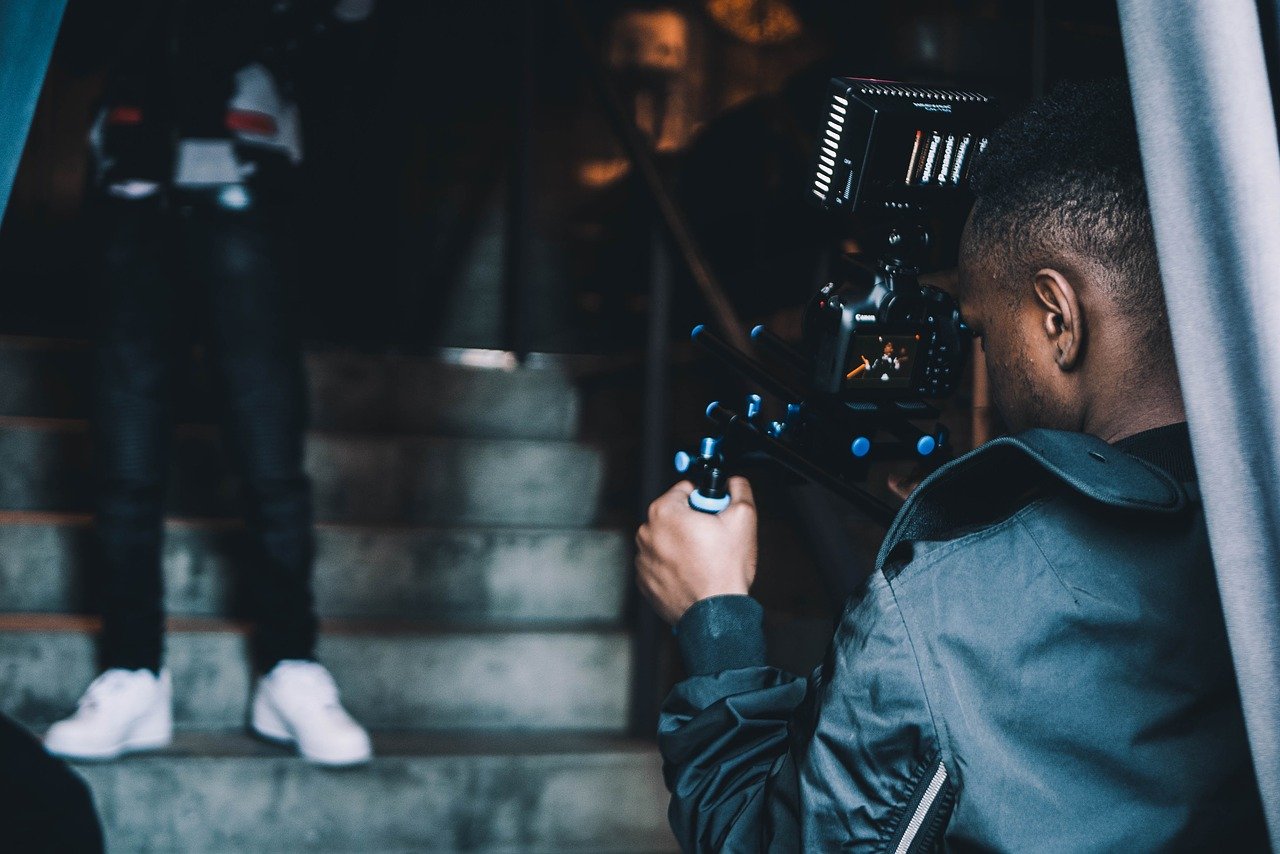
5 Reasons You Need Branded Video Content
As the reach of traditional print and television advertising declines, the importance of finding new methods to market your product or service increases. One of the most successful emerging marketing methods is branded video content, which promotes a product or service with informative or entertaining content while keeping your brand out of the forefront of the video.
Consumers strongly connect with branded video content, because they perceive that it offers them more than an outright sales pitch, whether that is informational or educational content, engagement with a community of similar individuals, supporting a worthy cause, or simply pure entertainment value. Still unsure if branded video is right for you? Here are five reasons that might just convince you otherwise.
Interested in producing effective branded video content? Browse the Creative Humans directory of vetted production companies and freelancers to find the best talent for your project. Get started .
1. Attract Younger Demographics

The age of traditional television viewers continues to increase as younger demographics shift to watching content online in greater numbers. 81% of internet users age 15 to 25 and 71% of internet users age 26 to 35 use YouTube, which has a reach far larger than any form of traditional media. While older demographics also utilize YouTube, the amount of content watched by YouTube users in the 18 to 34 year-old demographic is increasing and is a significant source of how they receive information.
Because of this, online branded video content can be targeted much more specifically at the age demographic for your brand. Additionally, branded video content on YouTube can reach far beyond the popular video streaming site if it is shared on social media as well.
2. Your Audience is Already Looking for Product Review Videos
An increasing number of consumers are shopping for products online, so the need for online content that demonstrates how your product is used is becoming increasingly more important.
YouTube has become one of the go-to places for consumers to check out a product or service before making a purchase. In fact, how-to videos are the most popular content on YouTube. The bottom line? How-to video demonstrations of your product in use or video reviews/testimonials of your brand's services can be a tremendous selling tool.
Creating review content for your brand that focuses more on casual personality and engagement than on a dated infomercial demonstration style can help persuade consumers to make a purchase.
3. Branded Video Allows for More Creativity

One of the major advantages of online video content is that it does not need to fit the strict time limits or pitch style of television advertisements. Still, it's surprising to see so many companies and brands continuing to adhere to "TV style" advertisements when creating online video content. Instead, branded video content can offer more creative, more informative content to help promote your brand.
For new brands, a 30 or even 60 second advertisement can be very restrictive when it comes to introducing your product or service, particularly if it is innovative or unlike anything else on the market. It can also limit your ability to tell an engaging story to promote your offering.
Many consumers have already been conditioned to binge-watch their favorite content on streaming services for hours at length. As long as the quality of your content is strong, long-form videos provide an excellent opportunity to connect with your audience.
4. Consumers Want to Know What Your Brand Values
Many consumers view purchases as not just buying a product but as buying into a brand's philosophy or lifestyle. They are interested in what a brand values and represents as well as what it will say about them as a person or how that brand gives back to make the world a better place.
Branded content allows a company to offer deeper insights into what your brand stands for beyond just selling your products. If your brand supports charitable causes or promotes community engagement, branded video is an extremely effective way to communicate those missions to consumers.
Want to showcase how your brand can help consumers maintain their ideal lifestyle? Creative Humans can connect you with top Lifestyle Video Production Companies .
5. Branded Video Helps Build Community

The costs of acquiring a consumer can be significant, particularly for a brand in a crowded marketplace. That's why it's essential for companies to deepen their engagement with consumers to ensure repeat business. If you can build a community around your brand, you can build a valuable network of repeat customers and word-of-mouth marketers.
Branded video content can help you build that community by connecting your product or service to a larger consumer movement. For example, workout programs and athleisure apparel brands may engage consumers by creating fitness and healthy living video content, while kitchenware brands may create cooking videos featuring their products in use. In both instances, the video content challenges consumers to participate by following the examples and creating their own video content that contributes to the brand's community—while expanding the reach of your marketing campaign.
Pretty soon, your low-cost branded video content could grow into a community of repeat customers yielding an exceptional return on investment.
Hire Top Video Production Talent
Are you convinced that branded video content is right for your brand? Creative Humans makes it easy to find and hire talented production companies and freelancers who can help you produce outstanding video content. Post a job or browse our talent directory to get started.
Browse Directory

Top Video Marketing Trends of 2020
Video content remains king for marketing your product or service. As of 2020, the average global consumer views 84 minutes of video content online per day, a number that has been increasing every year. Additionally, consumers are now more frequently purchasing products and services directly after viewing a "shoppable" promotion video containing a direct link to purchase for that brand on social media. While this indicates the tremendous opportunity that video content offers in promoting your brand, it also means that you need to remain keenly aware of the current marketing trends to ensure that your videos stand out. Make a strong impact with your brand's video content by following these top video marketing trends of 2020!
Ready to create high quality video content? Creative Humans can help you find and hire the best video production companies and freelancers . Get started.
User-Generated Content
Because of the need for social distancing in 2020, many brands were unable to advertise their product or service in traditional ways without having access to production facilities. So, one of the biggest video marketing trends in 2020 has been to feature self-filmed content created by users as authentic testimonials and endorsements from real-life individuals. This kind of content is perfect for lifestyle campaigns, social media videos, and more.
To make the most of user-generated content, however, you should consider working with experienced post-production talent like editors, animators, and motion graphics designers. The right post-production talent can help to give user-generated content an expert polish to ensure it can represent your brand as professionally as possible.
Authenticity

Low-cost, self-recorded content created by users might not have the most professional production values, but it has one bonus that is difficult for scripted content to emulate: authenticity. In some cases, an "imperfect" production—one that appears casual and more "real"—can make a much stronger impact on an audience than a slickly-produced commercial spot full of obvious stock images and phony messaging.
While many brands have been utilizing influencers with significant social media followings to promote their offerings, consumers are demonstrating a growing awareness of issues that can arise with influencer-based marketing. Some brands have even made rejecting requests for free products from influencers a marketing tool. Whatever the reason, influencers are not a top video marketing trend in 2020 in part because of a perceived lack of authenticity.
Even though the influencer facade might be fading, real-life consumers promoting your product in their own words can help market your brand in a way that will connect with individuals without causing them to feel like they are being "professionally influenced."
TikTok & Vertical Video
No social networking application has had a bigger year in 2020 than TikTok, a video-sharing service whose popularity has exploded with users uploading thousands of dance, lip-sync, music, and other types of videos displaying their talents. Not only is it the most-downloaded app of 2020, but it is also being used by an extremely coveted demographic for marketers: 42% of TikTok users are between 18-24 years old.
Short-form video content that resembles TikTok videos have achieved massive popularity this year. Many brands have also adopted the vertical video display popularized by TikTok videos in order to better match the displays of smartphones.
However, it's worth noting that TikTok has recently been the source of many privacy, security, and data-mining concerns that may affect how users use the app in the future. It's important be aware of potential risks to your brand before utilizing TikTok directly for marketing. Even so, video marketing professionals can still emulate the look and feel of a TikTok video to leverage the trend without using the platform itself.

AR Content
In 2016, the AR (artificial reality) game Pokémon Go shattered just about every global record for a mobile gaming app, ultimately achieving five Guinness World Records, including most downloaded mobile game in its first month.
While 2016 might seem like a lifetime ago in terms of gaming, the popularity of AR in branding has only grown, perhaps reaching an all-time high in 2020. In fact, projections say that the number of global smartphone users will total 3.5 billion in 2020—and as the number of consumers with smartphones increases, the more valuable unique content created specifically for smartphones becomes.
AR uses a smartphone to superimpose text, graphics, and audio features upon a user's view of the real world. This technology offers an incredible opportunity to grow your brand's influence and reach with consumers by creating new and exciting immersive experiences.
Want to create a truly unique VR or AR experience? Creative Humans can help you find the Best VR & AR Production Companies .

Live Videos
Not every marketing video needs to have a full production behind it to be effective. Social media features like Instagram Live have allowed virtually anyone to "broadcast" themselves and interact virtually with viewers. The growth in popularity in live videos have enabled brands to promote their offerings, create spur of the moment lifestyle videos, and even communicate directly with millions of potential viewers in real-time.
Beyond directly promoting your brand, live videos are great for lifestyle campaigns. This kind of video can be very budget friendly while helping to give a feel of authenticity and closeness with your brand. Working with the right live video talent can help ensure your presentation will have strong production values while still coming off as spontaneous.
Hire Top Video Production Talent
Ready to make the most out of the top video marketing trends in 2020 and beyond? Browse the Creative Humans Directory to find talented production companies and freelancers who can help you create exceptional video content.
Browse Directory
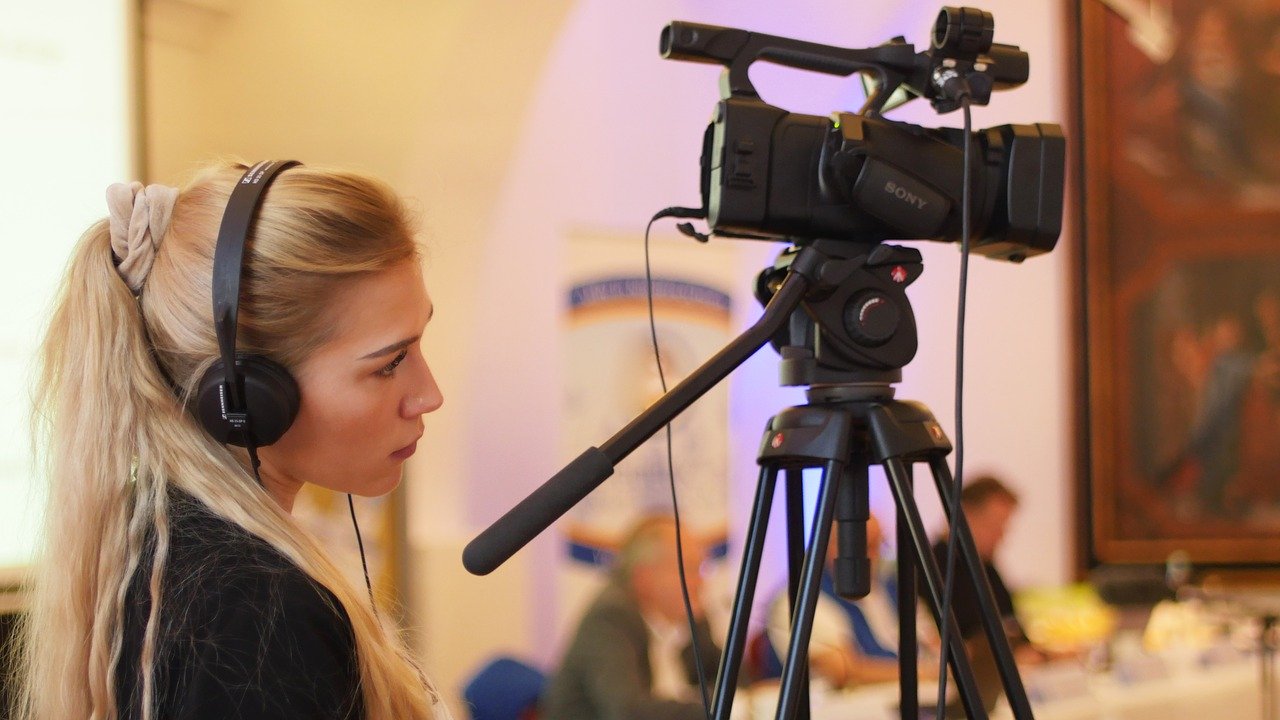
How to Make an Effective Promo Video
A high-quality promo video is an excellent way to increase awareness for your product or service. Your promo video can be used as a commercial, social media content, website feature, and more. In this post, we'll walk you through how to make an effective promo video so you can get the most out of this project.
Browse the Creative Humans directory to hire the best promo video production companies and freelancers for your project .
What's Your Goal?
The first step in creating an effective promotional video is to determine what goal you are trying to achieve with your video. Your goal may be to introduce your brand, promote a new product or service, offer a discount, or something else. Once you have the goal for your project in mind, you can start planning out your video.
Nail the Perfect Tone
How do you want your audience to feel? The tone of your video should be driven by your goal and brand. While a humorous tone might make your promo video memorable, it may not effectively highlight important features of your offering. You should determine the emotional response that would most likely motivate your target audience to action.
Following through on your intended tone is key to delivering the message of your promo video. If your product or service is used to save lives, for instance, including a voiceover with a serious, thought-provoking tone will likely resonate with your target audience.
Establish a Budget
Like most other productions, a budget is an essential tool that you will use to determine what resources and talent you can use to create your promo video. Go back to your goal, message, and tone, and decide what elements are absolutely necessary for your video. As you work to stay within your budget, you can decide if things like hiring a celebrity, adding heavy motion graphics, or other elements improve your video or simply ramp up its cost. Working with an experienced production team can help you establish guidelines for your content to maximize production values within your budget.

Duration & Engagement
While the average length of a short-form promo video runs 30 to 60 seconds, a promo video will need to engage your audience within its first ten seconds, or you risk losing the attention of your audience. Starting your promo video with an impactful statement or visual is crucial to maintaining interest.
Storyboarding
Once you have your goals, tone, and message established, an excellent starting point is to storyboard your concept with your creative team. A storyboard version of your video will help you determine if the basic presentation of your ideas will sell your message. This process will allow your team to refine your initial ideas before you spend money and resources to start producing the video.
Focus Groups
A pre-production focus group can be helpful to determine what key elements you should include in your video. You may decide to work with a focus group before and after developing a storyboard, to source feedback at these crucial stages. A post-production focus group can also be helpful to refine your video after the shooting has been completed. Use the group's feedback to help establish the correct tone and information presented in your video.
Who Will Deliver Your Message?

Finding the right representative to speak in your video is crucial. Effective promo videos can feature a range of representatives, including celebrities, models, company representatives, your customers, and more. Will your target audience respond best to a person who speaks from a position of knowledge or authority—or will they have a stronger connection with a depiction of a typical consumer? In either case, people corresponding to your target demographic should be well represented in your video.
Expose Your Brand
If you are promoting a product, be sure that the product and its packaging will be clearly visible at several points during the commercial. Your brand's logo and any other identifying information, including any colors associated with your brand, should also be clearly visible. A succinct brand slogan in your promo video will also help provide a connection to the product or service.
Inform Your Audience
It may go without saying, but your video should sell your audience on why they should purchase your product or service. Here are some key tips and strategies to keep in mind when making your promo video:
- Demonstrate. Present visually-detailed examples of how your product works or how your service operates.
- Compare. You could inform your audience by demonstrating the superiority of your product or service in comparison to those of your competitors.
- Create Demand. Demonstrate to your audience how your product or service will fill a need for them. How will your offering improve their lives?
- Call to Action. Inform your audience on where to find your products or services and how they can get take advantage of your offering.

Narration & Graphics
Remember to engage your audience with information both aurally and visually. Voiceovers and narration are common in most promo videos, but be sure to include on-screen graphics and explainers to help strengthen your message as well. Narration copy should be succinct and connect with your audience on an emotional level, while bold, simple graphics often provide the greatest visual impact.
What's Your Call to Action?
The main purpose of your promo video is to persuade your audience to do something: buy a product, utilize a service, vote for a candidate, and so on. Be sure to feature a clear pitch to your target audience at the end of the video to drive your message home. What action do you want your audience to take now that they've seen your message? Are there any final incentives like special deals or coupon codes that you can feature?
Hire Top Promo Video Production Talent
You're already on the right path to creating a successful promo video for your brand. To get started with the right talent on your side, browse the Creative Humans directory to find the best promo video production studios and freelancers.
Search Now

THE FUTURE OF FILM
1. Q4 IS GOING TO BE GREAT!
Let's start with the good news. We predict that the 4th Quarter of 2020 which is normally slow is going to be gangbusters!!!
2. SMALLER CREWS AND MORE WORK FOR EVERYONE
Say sayonara to that 2nd Prop assistant, we are downsizing!!! We predict that only the most vital people are going to be on set and you are going to be working long and hard.
3. THE OFFICE AS WE KNOW IT IS DEAD (FOR NOW)
Who needs a production office when you can work from the comfort of your Brooklyn walk up. With budgets dwindling and the radical improvements in technology, (remember when we all had beepers) the office as we know it will be put on hold.
ZOOM BEAUTY FILTERS
We predict Zoom rooms are going to get cooler and we are all going to get some beauty filters added as defaults in our cameras.
4. LOTS OF DEPARTMENT RE-ORGS
Covid brought a ton of layoffs and every department is going to change in some manner. Departments of 40 are now departments of 4. Someone is going to have have to step up and take charge to keep going. In order to thrive people are going to have to be adaptable and ready to embrace their new company structure.
5. MORE DELIVERABLES
Marketers have finally figured out that when they have a shoot that their marketing content is going to live everywhere. Snapchat, Instagram, YouTube, Twitter, OTT, Pluto, Hulu it's endless. This means lots more deliverables and different formats.
6. MORE ON SET CLEANLINESS
It's going to feel more like a hospital on set. We think that the free snacks and communal mugs are going to be replaced with plastic gloves and shoe booties.
7. FAR FEWER BOONDOGGLES
That work trip to the South of France and Sundance are going to be put on hold this year. No one is going to have the budget for it and no one is going to want to travel very far.

Seven Habits of Highly Production Creative People
Staying motivated can be tough, but with these 7 simple steps you'll have the tools you need to be getting more done
1. Set Stretch Goals
When you make a habit of setting stretch goals, you'll get more done. When you achieve your stretch goal, magic happens, and you get a nice big charge of endorphins.
2. Be Consistent
Prolific people don't procrastinate only to pull all-nighters later on. Figure out how to consistently delivery the best results by creating a rhythm to your work that will keep you going.
3. Have Knowledge and Technical Expertise
When you know what you're doing, you don't need to spend time searching online for a good tutorial. If you want to be a productive person, know what you are doing before the project starts.
4. Anticipate Problems
Try to anticipate roadblocks and work on those solutions in advance.
5. Communicate Wisely
Don't waste your time talking in circles. Highly productive creatives know how to communicate to reach their goals. They know that the key to success is to build and maintain effective relationships and how to keep those conversations going.
6. Take Initiative
Productive people start jobs quickly, and they never wait to be told to begin. Learn to ask for forgiveness, not permission, and the results will speak for themselves.
7. Wake Up Early
It's time to be an adult and get up early. You'll have more time for planning, strategic thinking, and getting organized.

How Much Does a 30 Second TV Commercial Cost?
Commercial advertising is one of the most effective methods to market your product or service. If you've never produced a commercial before, you may be concerned about the cost. The good news is that a successful commercial campaign does not need a high-priced celebrity pitchman or Hollywood blockbuster production values to make an impact on your target audience. In fact, a professional-looking 30 second commercial can potentially be produced for as low as $10,000.
That said, the total cost for a commercial can vary greatly. In this post, we'll walk you through the factors that may impact the cost for your commercial project.
Creative Humans makes it easy to find the best commercial production companies for your project .
Commercial Cost Factors
The two primary factors that influence the total costs of a television commercial are production costs and airtime costs. Let's take a closer look at each:
Costs of Production

As with most video shoots, pre-production planning is key to controlling overall costs of a commercial. The commercial production talent you hire will help you determine how to best present your product or service visually, how to convey the quality or significance of your brand, and how the commercial can stand out to your target audience. These factors will determine the budget for your shoot:
Production Complexity
Naturally, the more complex the concept for the commercial is, the more likely production costs will be higher. A commercial including animation or visual effects may look stunning, but it may not deliver an effective return on investment if the production's price tag is too high or the post-production work takes too long to complete. On the other hand, a short bumper ad (typically 2-15 seconds) could be very affordable, though it may not be as effective depending on the complexity of your message.
Commercial Length
The most common lengths for commercial spots are 15 seconds, 30 seconds, and 60 seconds, to get the most value out of your commercial, it can be edited into different versions in those specific lengths. Typically, a commercial spot will be delivered with different cut down lengths that can be used in multiple places. An experienced commercial director will shoot your commercial in consideration of how to best convey your message in those standard lengths. To get the most bang for your buck, ask your production company if they can produce stills and GIFs for other marketing purposes too.
Post-Production
After the shoot, a skilled editor will be instrumental in determining how to make a 15 or 30 second version of your commercial present your message as effectively as a 60 second version. In addition to editing, motion graphics artists can be hired to add text and other animations or special effects. Other post-production tasks may include voice overs, music, a final audio mix, and color correction. Each task can add to the total cost of your commercial.
Costs of Airtime

Once your commercial is produced, it needs to be presented in some way to your target audience. One might think that with free video-sharing websites, paying to broadcast your commercial on television or to stream it on a popular website would be a thing of the past. However, tens of thousands of hours of content are uploaded to websites like YouTube every single hour, making it virtually impossible to stand out without promotion or purchasing ad spots. Because of that, the more significant costs associated with commercials is airtime.
Average Commercial Airtime Costs
So, how much does a 30 second commercial really cost? Here's a quick look at the average costs for local and national TV spots:
- Local TV: $5-$10 per 1,000 views. Data from Skyworks Marketing.
- National TV: $115,000. Data from Statista.
- YouTube: $10-$30 per 1,000 views. Average cost of 100,000 views is $2,000. Data from YouTube .
- Hulu: $20-$40 per 1,000 views. Data from Hulu .
Let's take a look at some factors that may influence your airtime costs:
Programming
Everyone is familiar with the record-breaking prices that companies pay for Super Bowl commercials. Cost of airtime for a 30 second spot in 2020's Super Bowl LIV ranged from $5-5.6 million. But don't get cold feet just yet. Those extreme prices are outliers. The bottom line is that programs with higher viewership demand higher prices for ad spots.
Time of Day
Fewer people are watching television at extremely early hours, so commercial spots at 2:00 AM are normally inexpensive. But before going the low-cost route, you should consider when your target audience is most likely watching television. For example, daytime television commercials are typically targeted at stay-at-home parents, retired people, or young children, while prime-time commercials are often targeted at the sought-after 18-49 demographic.
Broadcast, Cable, or Internet
Costs to advertise are far higher during national prime-time programming than during local broadcasts. In fact, those high-priced cable prime-time spots significantly skew the average cost of airtime for a 30 second commercial broadcast, which was $104.7 thousand in the United States in 2019. As mentioned above, the average costs for a 30-second ad spot on local TV, however, can be just $5-$10 per 1,000 impressions (CPM). Advertising on popular streaming services average around $10 CPM (YouTube) to $30 CPM (Hulu).
Location
A national ad campaign would not be the best way to spend your advertising budget if your product or service is not a nationwide brand. There are 210 media markets in the United States that are ranked by the percentage of the U.S. population they reach. Each market has local affiliates of major broadcast channels, and many also have additional stations that feature local programming. When advertising online, you can also usually select your reach--national, local, or geo-targeted. This gives you many options of where you can advertise based on the geographic location of your customers.
Supply & Demand
There are typically eight minutes of commercials during a half-hour television program. Depending on the length of commercial spots and how many in-house commercials the station is airing, availability for advertising during certain programs may be limited. That's why commercial spots during popular programs are more coveted by advertisers and, as a result, is why those spots are more expensive.
Time of Year
Rates also vary by season, with television advertising costing more during the holiday season than during other times of the year.
Target Audience
Paying top-dollar to broadcast your commercial to the biggest audience isn't as effective as broadcasting to your target audience. It's important to consider your target audience compared to the demographics of the programs that you would purchase commercial airtime for.
If you provide a localized product or service, you may be able to purchase commercial time on a local station for low rates and make a strong impact on your community. Alternately, if you're attempting to target a younger demographic, you should consider advertising on a streaming platform like Roku or Hulu to reach tech-savvy cable cord-cutters.
Commercials on Social Media
If your brand has an established social media presence, you can also market your commercial to your target audience through those channels. This can provide additional low-cost reach for your ad, though you should explore options like paid advertising on Facebook or Twitter to amplify your commercial if you determine it would be a good way to reach your target audience. If you have yet to establish your brand on social media, a paid ad campaign could help to build your presence.
Hire Top Commercial Production Talent
Ready to produce a successful commercial? Browse the Creative Humans directory to discover top commercial production studios and freelancers! Creative Humans is full of highly vetted video professionals, from large production companies to freelancers. We look for talented people who have a ton of experience working with brands and agencies. Our goal is to help you make better video, by introducing you to the right filmmakers for your project. Get started for free today!
Search Now
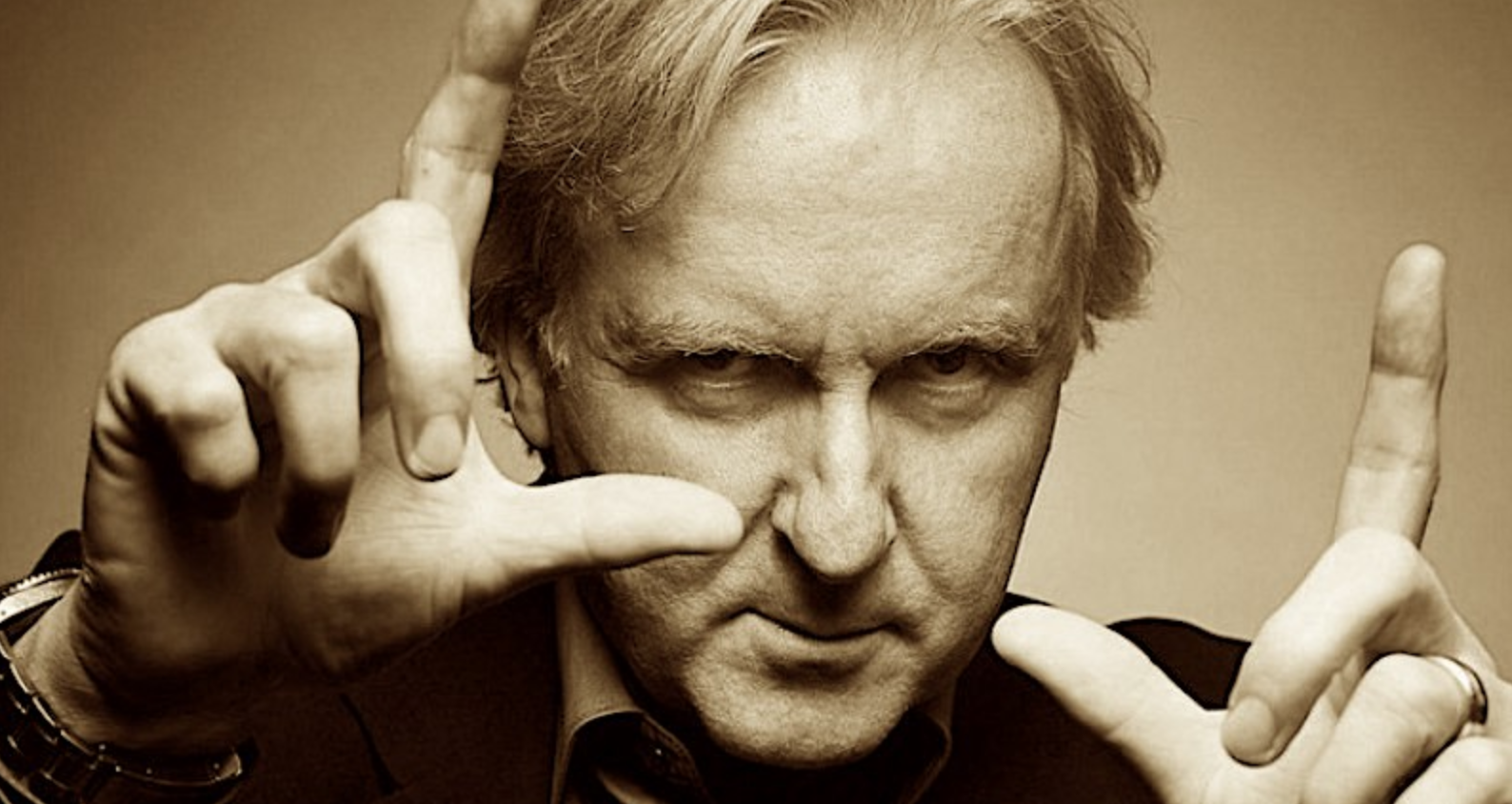
Is it advertising or entertainment?
Most of us think that a director's only client is their audience, but let's face it the reality of documentary filmmaking is more complicated, as industry groups, advertising agencies and companies today hire filmmakers to tell their stories, which are released and streamed to the public as independent documentaries. Viewers of documentary films have become captive, unsuspecting audiences for industry messaging that is shaping how we think about controversial topics, whether it is how we should grow food, manage the opioid addiction crisis, or address climate change.
OUR ADVICE...
TRUST YOUR FILMMAKER - When you work with good talent you should try and stay out of there way. When brands get too involved the films can end up looking like one big advertisement.
TRANSPARANCY - When brands are working on creating films they shouldn't hide the fact about being involved. Be proud and upfront about your production.
DIVERSITY - It's important for brands to think about inclusion upfront.
OBJECTIVES - What do you want your audience to know about your industry? Try to educate, not give the hard sell.
THEATRICAL RELEASES - Aim to secure a theatrical release. If you can get your film into some physical movie theaters then you get reviews, then you get press, and then you get eyeballs.
AWARDS - You can win them! This shouldn't be your main objective with your film, but you shouldn't assume that just because you create a brand film that it can't win some accolades.
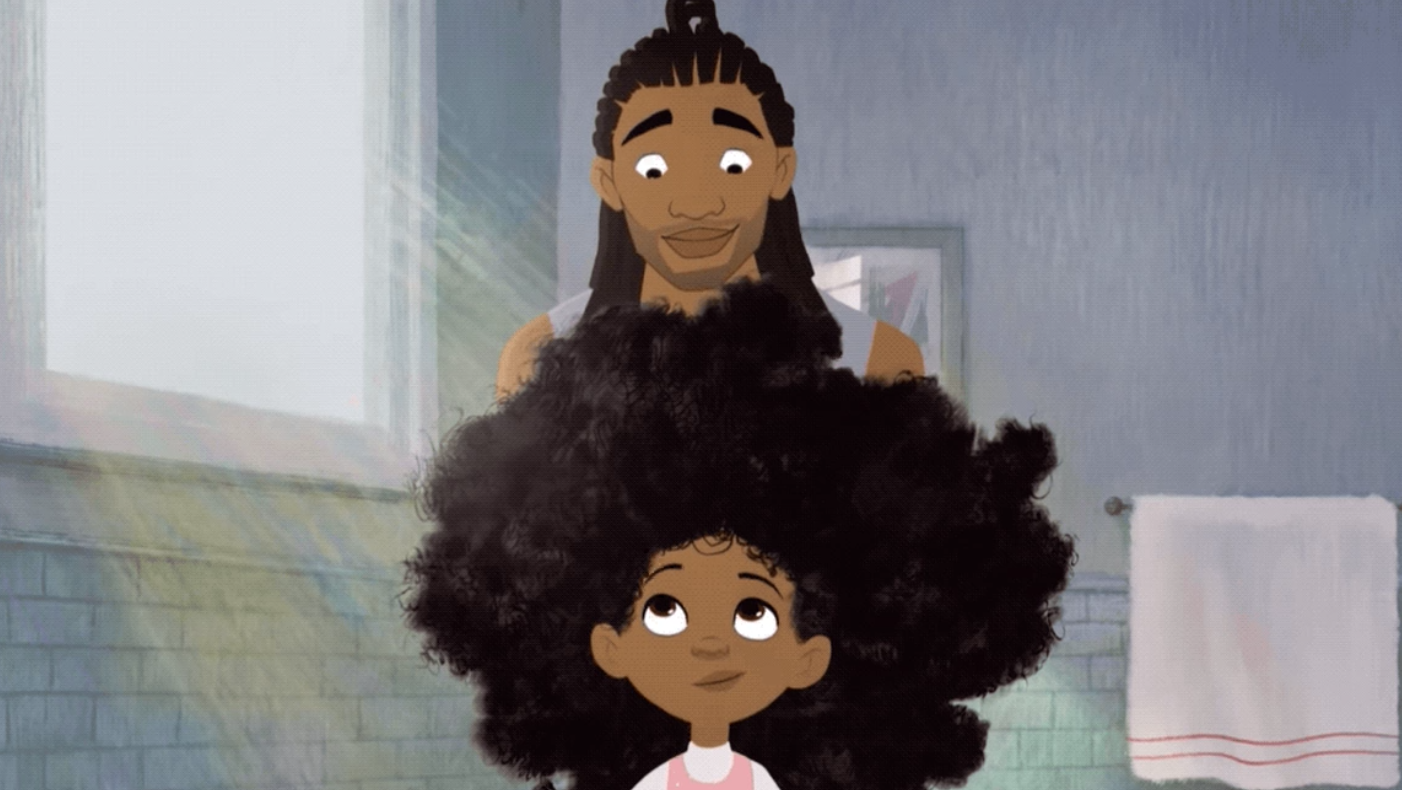
'Hair Love' Sponsored by Dove, Earns an Oscar for Best Animated Short
Client: Dove
Title: "Hair Love"
Producer : Matthew Cherry
Award : Best Animated Short
"Hair Love" is a beautiful short video told by Matthew Cherry. It tells the heartfelt story of an African American father learning to do his daughter's hair for the first time.
What makes this project so unique was that the film didn't begin with Unilever. The team at Dove learned about the film after the Kickstarter began and donated money for the production via the platform.
What makes this video so unique is that Dove had no requirements for any product placement. They allowed the filmmakers to produce the video independently and only received a thank you in the credits.
"It was pretty simple," says Esi Eggleston Bracey, Unilever's beauty and personal care EVP/COO in North America. "We wanted to help Matthew make this film for generations to enjoy, but the content was truly all his own. Like other Kickstarter backers, we received a special thanks at the end of the film."
"Hair Love's" writer, Matthew A. Cherry, said he wanted to draw attention to the Crown Act, a law first passed in California that bans discrimination based on natural hairstyles and that backers hope to pass in other states.
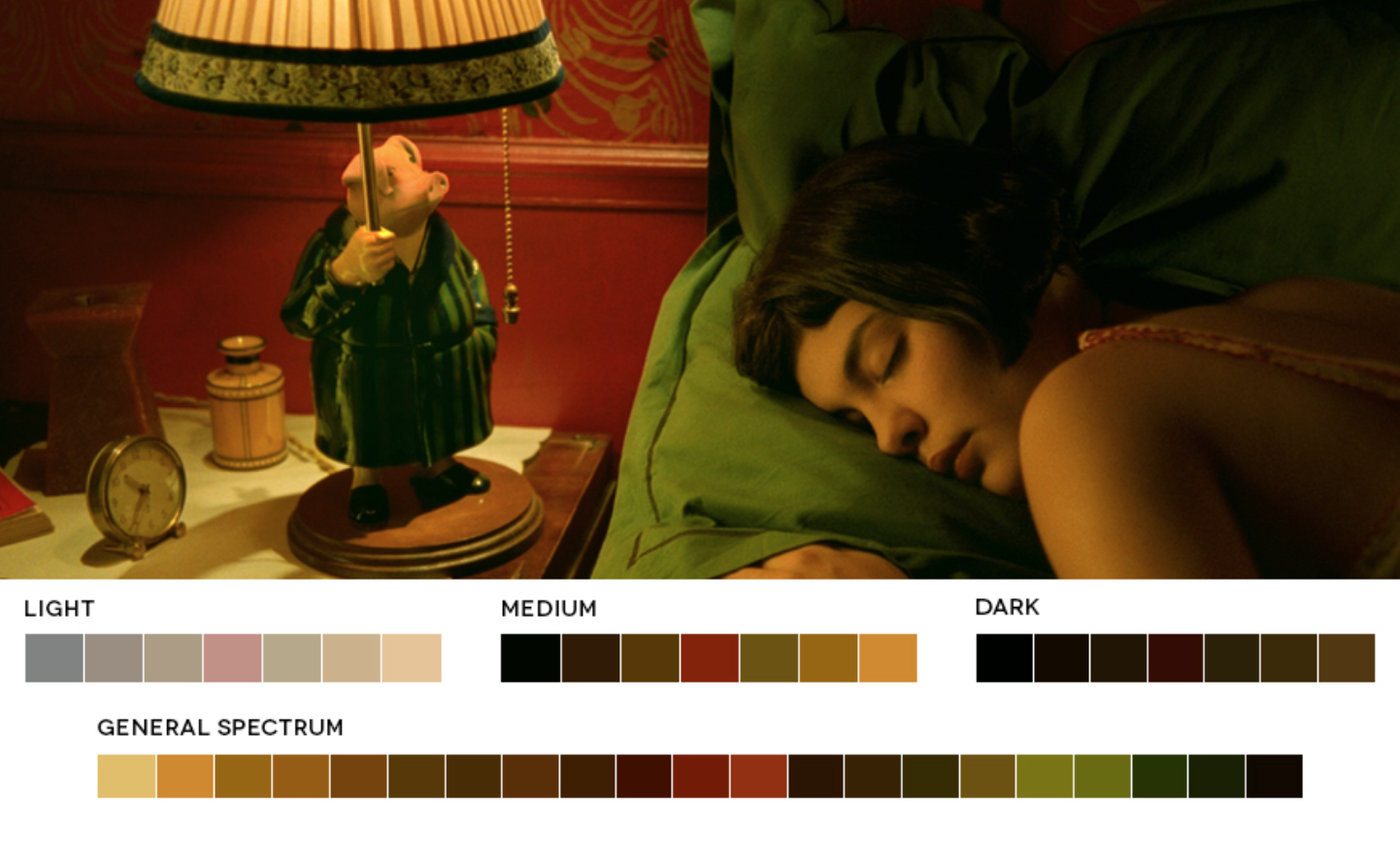
The Basic Rules of Color Grading
Nothing involving color grading can generally fall into the realm of "basic." It is a highly technical area of filmmaking which, and on large-scale productions there are dedicated individuals with the label of colorist who can make or break a film. Today, however, with high-grade video capture now possible with consumer cameras, "pro-only" features such as log gammas and HDR are commonplace, though they require a steep learning curve. Also, many indie filmmakers are now doing everything from writing to shooting to editing all by themselves, and if you aren't a color grading pro, some tips will definitely help you produce a stellar final product you know you can. Here are some basic rules to follow if you happen to be just starting out.
- Calibrate your Displays
Perhaps the most important thing when you begin to color grade, and edit for that matter, is that you are working with calibrated displays. You absolutely need consistency when you work on color critical applications, and it generally isn't that difficult to perform your own calibrations at home. This is also the time to understand color spaces and gamuts so that you can know the limits of your displays and compare them to the final destination. If you want to know some important ones to research, these are fairly common and often described in monitor spec sheets: sRGB, Adobe RGB, and DCI-P3.
- Learn to Read Scopes, and Trust Them
Even if you have 20/20 vision and perfect color acuity, you still can't trust what you see on the display in front of you. This is why scopes are so important. Learning to read something like an RGB Parade will help you quickly pinpoint issues in your footage and know immediately how to correct them. Beyond being a useful set of tools, it also helps make sure you stay within the boundaries of the final display format, be that broadcast, projection, or a TV you have at home. This is important because if you push too far into the limits or beyond them, your footage will quickly fall apart. For example, if you push your highlights to 10,000 nits for an HDR display and then play this on a standard dynamic range screen, all the highlight detail will be lost and it can make some videos unwatchable. Unfortunately, there is so much more to scopes than can fit in this article alone, so I highly recommend going out and reading up on them and testing them out in your software of choice.
- Lift, Gamma, and Gain
In color grading there are three main areas which you can work on: lift, gamma, or gain. To translate, these terms refer to your shadows, midtones, and highlights, respectively. This is critical to proper color grading work as it helps you understand the best way to work with your footage and apply corrections and grades. A general order to follow would be your shadows, then highlights/midtones, in order to get a nicely exposed shot. For a lot of footage, color casts aren't uniform throughout the full luminance range and you could have opposing colors in your shadows versus your highlights, green shadows and magenta highlights for example. Being able to identify this and the tools to make adjustments is critical.
- Working in a Proper Order
Even if your end goal is to have your film look like The Matrix, you shouldn't add that distinct green tone first thing. There are general protocols for what to do first and what to do last when you apply grades, though you can create your own system if you prefer. First thing I would recommend is to apply any noise reduction or major corrections first, followed by a proper balance/correction of your contrast and color as well as any localized adjustments, and then followed by your filters and creative effects. There is a reason for this beyond keeping you organized, as the order you perform the work determines how each step is handled. For example, if you add a vignette before doing the initial correction, then you you go to adjust the overall contrast you may end up eliminating most of the effect or making it way too strong.
- Don't Go Overboard
This is probably the most important tip here, as when you first get going with some serious grading software on a project, it is really easy to see all the tools and want to make use of every single one. Also, unless you have an incredibly distinct vision, think Sin City's stylized look, there generally is no need to dramatically push anything in an unrealistic manner. You should still experiment to get the perfect look for your scene, but make sure to reign in any choices that might be a little too extra for your overall piece.
As a final piece of advice to sign off, I would want to recommend that if you are learning to identify color issues in your footage, you can always push the saturation up. Once you do this the off colors will pop out more, making it easy to see what needs to be changed.
Do you have any tips of your own to share? Or do you have a question about a tool or workflow? Make sure to let us know and stay tuned here for plenty of tips and tricks

5 Questions You Should Ask Yourself Before Choosing Your Next Filmmaker
1. Do you like their work?
Kind of obvious we know, but really, do you like what they have created in the past? Does their work have the right vibe that you are looking for?
2. Can you afford them?
Depending on where a filmmaker is with their career they charge different rates. Also don't forget that different creative ideas all require different budgets.
3. Have they already produced similar work to what you need?
Creatives tend to specialize in different styles, genres and approaches. You don't want to ask a documentary storyteller to make a comedic spot for you.
4. How are they at communicating?
The team you hire needs to be able to efficiently and intelligently communicate with you based on both your and their needs. Be sure your team talks to you about things like schedule, budget and their plan for the creative execution.
5. What have they finished?
The proof is in the pudding!!! Make sure that the team you bring on has successfully created great work on time and one budget. Don't hesitate to ask for references and use them. You'll be happy you did.
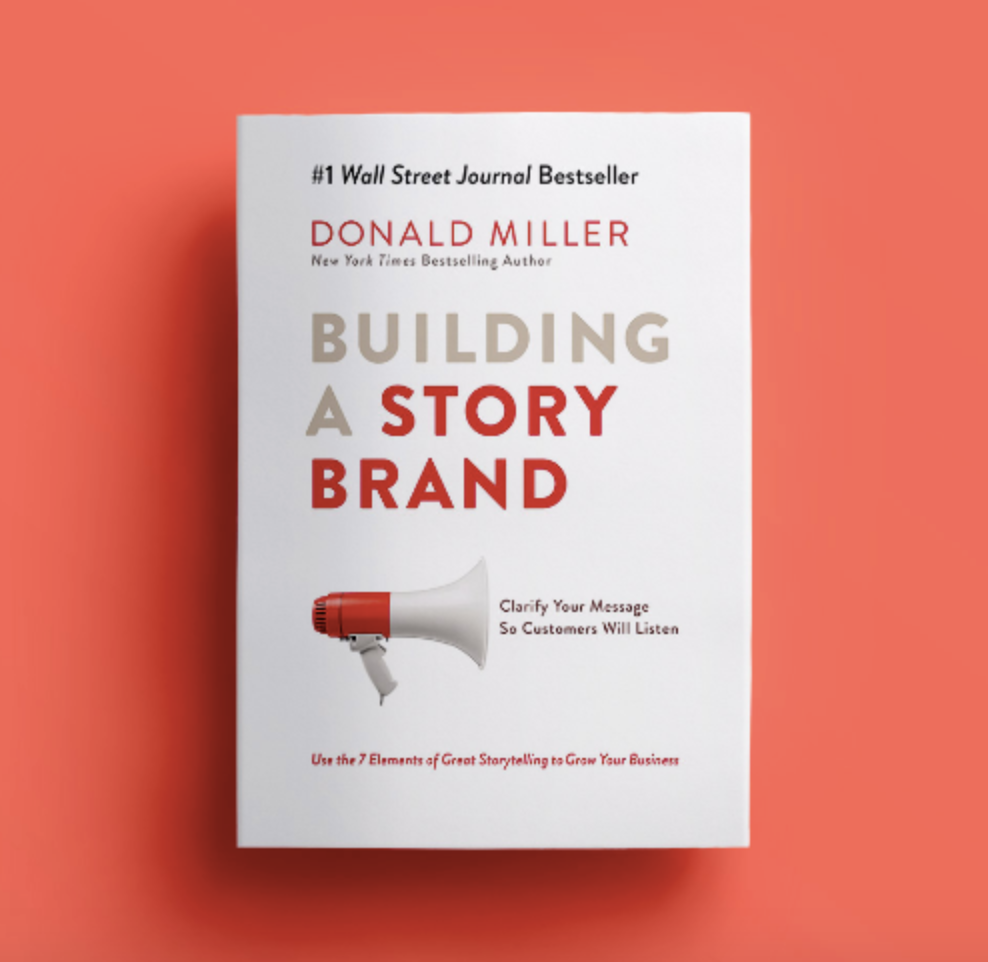
What Everybody Ought to Know About Marketing
We love good books at Creative Humans and this month we want to recommend a great one. This book is so efficiently packed with useful marketing information you'll want to reference it again and again.
The messaging and implementation techniques presented in Miller's StoryBrand framework are simple genius.
You will learn that the customer is the hero of your the story, not your brand. When you start to position your customer as the hero you will be recognized as a trusted resource to help them overcome their challenges.
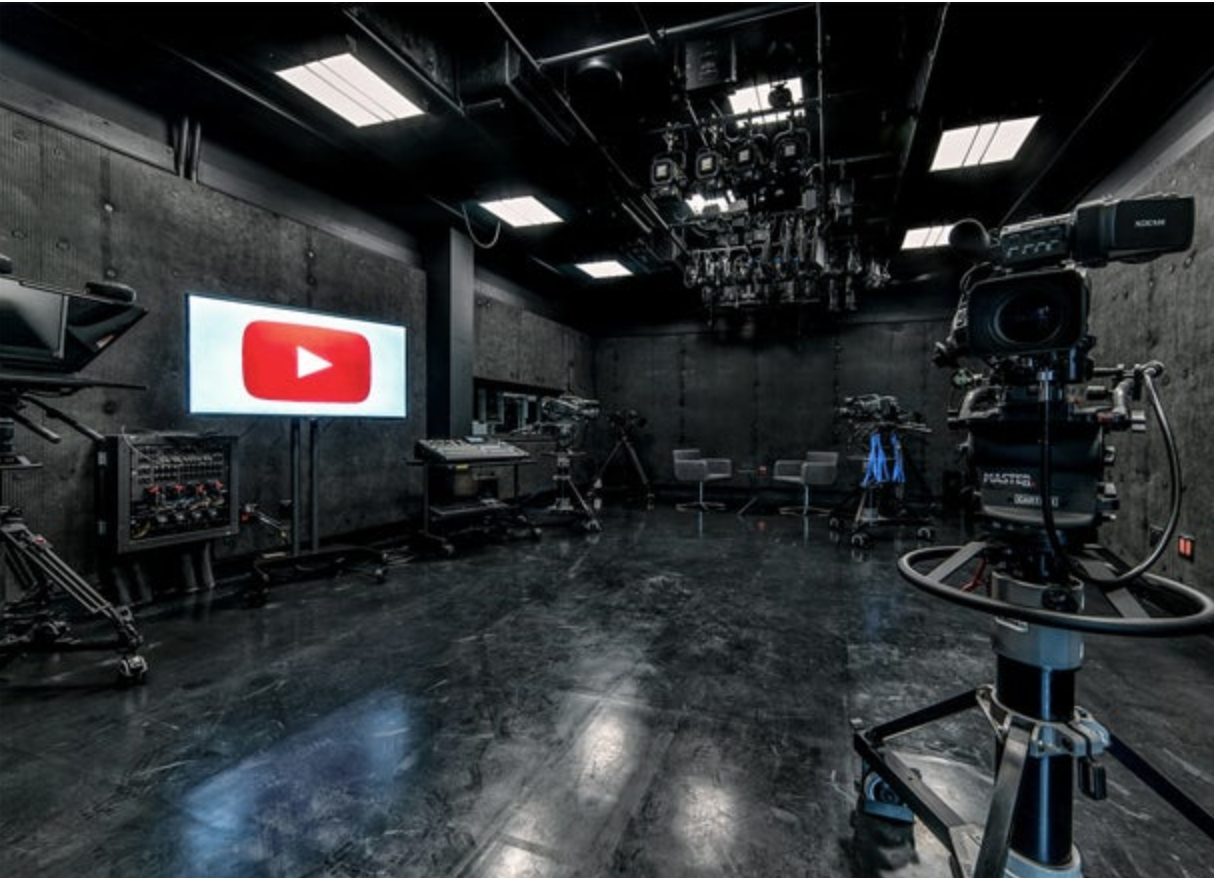
The Coolest Production Secret In New York
Do you know about theYouTube Space New York?
It's an amazing free production facility and learning annex for creators built by Google. Located in the Chelsea Market in heart of New York City right across from Google HQ. This studio space boasts four HUGE studios and gear galore. It can be booked 30 days in advance and has incredible amenities, a pre-lite greenscreen, audio/podcast suites, edit stations and more. The best part is that it's all free!WHAT'S THE CATCH YOU ASK?
The content you produce needs to be shared on your company / brands
YouTube channel that needs to have over 10,000 subscribers.

Our Top Ten Rules For Branded Video
Brands need to start embracing branded video before they get left behind. We are here to help.
1. Don't be Salesy
2. Be Consistent
3. Invest In Distribution
4. Cross-Promote Content On All Platforms
5. Produce Online Videos With Captions
6. Create Compelling Content
7. Shorter Is Better
8. OTT Advertising Is Key
9. Always Think Mobile-First
10. Develop A Relationship With Your Creatives

Check out Math & Magic, Bob Pittman's New Media Marketing Podcast

Let's Talk about Slow Motion and Creatively Using Frame Rate
Slow Motion and Creatively Using Frame Rate
Hold on and slow it down there. Now speed it up! While sticking to the old standard of 24 fps will get the job done, let's take a second to examine what happens when you start experimenting with some another option.
Taking Things Slow
We all know this one. Bumping up the frame rate will give you slow motion. If you take 60 frames per second and play it back at 24 things will still look smooth and now the action is stretched out over a longer period of time. It's perfect if you want to focus in on a particular scene or moment and why every televised sporting event makes liberal use of it. It is also simply a lot of fun.
Slowing things down is also a way to analyze fast-moving subjects. Technical applications make liberal use of slow motion in their work. Similar to how sports will use it in instant replays to see just where that ball landed, scientific research will use it to watch reactions and subjects to analyze exactly what happens.
One final use is to smooth out movement. I know plenty of people who shoot slow motion when they are working handheld for B roll. Slowing down the footage will make the camera shake much less noticeable and jarring. Granted, this isn't an ideal solution, but it's a nice trick to have in your head.
Higher frame rates aren't slowly for slow motion, however. Anyone remember when Peter Jackson make a huge deal over shooting The Hobbit in 3D at 48 fps? The additional frames meant the footage appeared smoother and more lifelike. It also helped those prone to motion sickness. You can apply this logic to what you are shooting. Capturing fast action may benefit from the added clarity of a higher frame rate.
Shooting high frame rates has become much more standard nowadays, though it is indicative of a "video" shoot. Films generally stick to 24 fps to maintain a look reminiscent of the days of actual film. You can use this knowledge to tailor the look of a certain scene to evoke a certain feeling. Aiming for a clean digital feel, a higher frame rate can do that for you.
Let's Fast Forward
One of my favorite moments in nature documentaries is when they go from day to night, or summer to winter, or from tiny seedling to full-grown plant. All of this is accomplished with time-lapse photography. Essentially it takes images at lengthy intervals and then combines them in the end into a super fast moving video. This is basically just using an ultra-slow frame rate.
For your first test here I wouldn't advise setting up a camera for days or months, maybe even just a few minutes can do the job. Many cameras now offer frame rates down to 1 fps and will automatically compile a video at the end. Go out to the beach during a sunset, shoot at 1 fps, and your final clip will show you the full sunset in a more reasonable amount of time. This is the key, time-lapses are used to show things that would take too long in real time. They can also be used to represent the passage of time.
One important goal of some time-lapse photography is to account for change that would be difficult to visualize. A recent example would be the documentary Chasing Ice. By using time-lapse equipment to record the edges of glaciers over the course of years, photographer _____ was able to show just how much the ice was melting in relatively short periods of time. It would be impossible to simply imagine the extremely slow changes taking place over the course of years. With a time-lapse it all becomes clear.
Now, there is another use for slow motion that requires some creativity, and that is evoking the look of classic black & white films. In the early days of filmmaking and with Super 8 home movies frame rates lower than 24 fps were used to conserve film. It created a distinct look. Want to make your own silent film with physical comedy, working at faster frame rates can get you closer to that look. Toss on some grain and film scratches and you have it all.
Not Just About Frame Rates
Due to how camera shutters worked, a piece of film was only ever exposed for about half the time it took to run through the gate. For 24 fps, film was exposed for 1/48 second. This may not sound important, but key to replicating the film look is sticking to this so-called 180-degree rule. With modern digital cameras this is represented as shutter speed.
Adjusting the shutter speed can change the look and feel of your video without actually changing the frame rate. This can help with certain cameras that may not have the options or quality you want. Faster shutter speeds can provide a cleaner, more realistic, and perhaps more jarring image. Slow shutter speeds will blur motion more dramatically and make it harder to see fine detail. This can be a much more subtle change as well.
There's a bit of irony to be seen here. Slow motion requires fast frame rates and cameras while speeding things up can take an unbelievably long time. Experiment yourself and change up the frame rate or shutter speed for some of your next projects, it could lead to something brilliant.
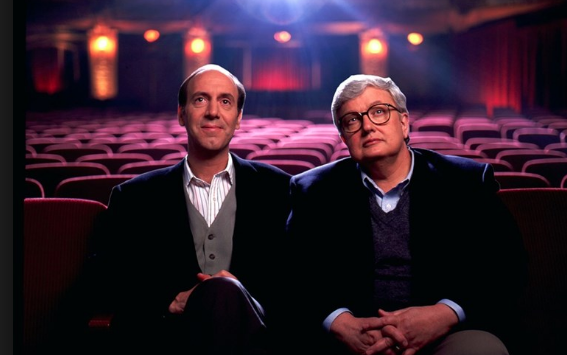
10 Reasons Your Video Sucks
We've all uttered the phrase, "That sucks." Hopefully it wasn't about your own work, but, sometimes things don't turn out as perfect as you imagined in your mind. You can learn from those experiences, though it's probably best to learn from others. Here are some of the reasons why your video sucks. Or in nicer terms, here are common mistakes to watch out for when you make your next video.
1. Audio Issues
Filmmakers can sometimes focus too much on imagery. It makes sense, film and video are visual mediums. In practice, audio can have a bigger impact on the reception of your video than simply having the best camera. Proper mixing and levels can do wonders for a videos watchability. How many people have streamed a low-res version of a clip but stuck through it regardless of quality? Now, how many of you have finished a video with unintelligible speaking or overpowering wind and distorted audio from loud sources? The answer is obvious, you are more likely to shut off a video with problematic audio than slightly soft video.
2. Meandering Introductions
One could say there is an epidemic of short attention spans. Regardless of the validity of this claim, you do want to get your video rolling as soon as possible. Films are known for starting in media res for good reason. Long, meandering introductions can turn off your viewers and cause them to turn off your video simply because you didn't get to the point soon enough, or, in other words, you buried the lede, which then resulted in them thinking that your video isn't worth w atching because it doesn't cover the topic they expected. Get it?
3. Lack of Variety
Yawn. The last thing you want with a video is to bore people. Video is exciting! Make sure yours are by having variety in your clips. This could be shot types, e.g. going from close-up to wides, or simply changing up the location. Obviously this depends highly on the style and length of video you are making, but if a 30-second commercial can be entertaining there's no reason your DIY video can't be either.
4. Nauseating Camera Shake
The last thing you want is for people to feel like they are sitting on a boat in extremely rough waters. Plenty of tools exist to steady your camera or phone—including the classic tripod—so there is little excuse for unbearably shaky footage. Sure, a little movement can be interesting in a handheld shot, but it shouldn't be overpowering.
5. Bad Composition
I believe everyone has an inherent ability to identify poorly crafted work. You don't have to be Spielberg to think a movie is bad. Maybe you can't describe in the proper terminology why the pacing of cuts during the action sequence were disorienting, but you can lean over to your friend and find that both of you understand something is wrong here. A good place to start is with composition. Sticking to basics such as the rule of thirds can help beginners capture appealing video. I would recommend just taking an extra couple seconds to examine the entire frame before you hit record. You know if it looks bad, just trust your instincts.
6. Distracting Backgrounds
Why is that guy growing a tree out of his head? Oh, wait, its just poor camera placement and subject positioning. Don't let something dumb ruin an otherwise good shot. Maybe considering moving that trash can to the other side of the room or tidying up the desk behind you before you roll the cameras. You want people to focus on you, or whatever is the subject in your video, not whatever you happened to leave in the corner of your office or studio that day.
7. Too Long
Keep your videos as tight as you possibly can. An initial edit may reveal a 10-minute long piece, but is that really the best way to handle it. Even just cleaning up edits can shave time off the clock and make watching your video less of an ordeal for potential viewers. Seeing a video runtime over five to ten minutes can be intimidating as that is a solid amount of time to commit. Sometimes its necessary, and sometimes some prudent cuts can make a video seem much more watchable.
8. Mixed Tones
If you have a serious topic, be serious. If you have a fun video, have some fun. Simple idea, but tone permeates all things on a film set. Having a bunch of fun colors or props in the background doesn't make sense for a super serious scene. And having a monotone gray backdrop when you should be having a party is problematic in the same way. Make sure that your video has a cohesive theme. Side note: this applies to your music choice as well.
9. Poor Pacing
Action and suspense are perhaps the best examples of how pacing can affect a movie. Frequent cuts during the most action-packed scenes makes everything feel faster while holding on a shot and not revealing the scary monster hiding in the corner for just an extra second can seriously up the tension. While you may not be making a feature-length film, the pacing in your video matters. For example, fun, upbeat videos will want faster pacing. The last thing you want is to make the audience bored during the most thrilling moments.
10. Nowhere to Go
Unless you are making a video who's sole purpose is to have people watch the video, you should end with some form of a call to action. Simply put, you want to take those attentive viewers and guide them to a production location. If you doing brand marketing, this could be as simple as directing them to a website. Selling something? A purchase link can lead to real sales. Don't squander a great opportunity with a poor sign off. On that note...
Have you ever made anything that just truly stunk? Follow along here at the Creative Humans blog to learn about plenty of other filmmaking techniques that can bring your next work to the next level.
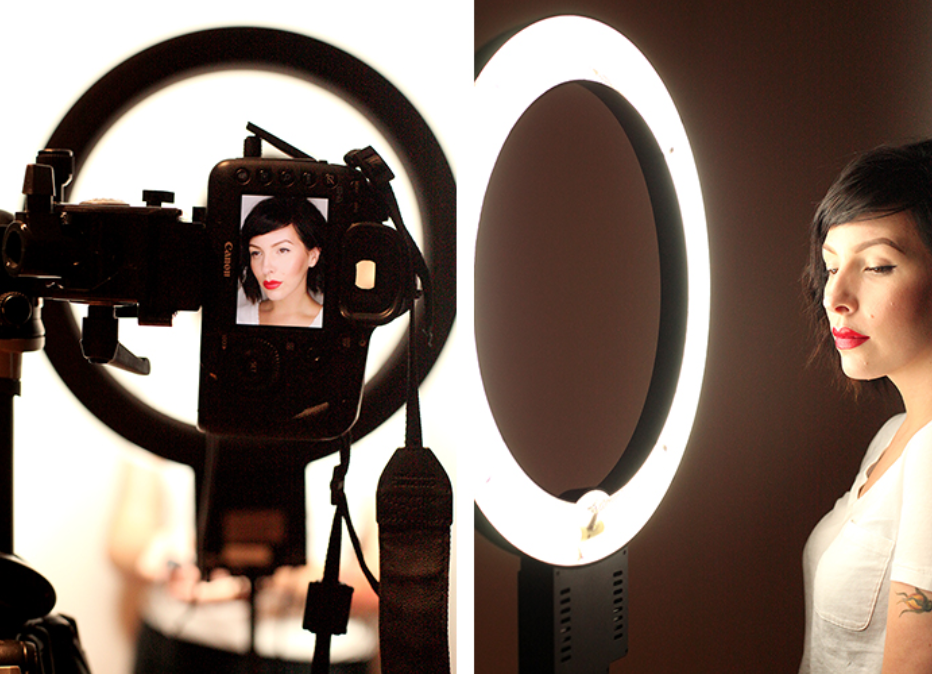
WHY RING LIGHTS ROCK
LETS TALK ABOUT WHY WE LOVE RING LIGHTS
Soft, Flattering Light
Most modern ring lights use a ring of LEDs with diffusers in front to create a soft, flattering light that will make nearly everyone and everything look good without much effort. This ease of use is hugely appealing to many independent shooters who sometimes need to set up everything by themselves. Another benefit of this type of light is that it can be used as a secondary light source to fill in any shadows created by a main light without overpowering it or contrasting it too heavily.
That Beautiful Catchlight
Perhaps the most visible explanation for why ring lights are awesome choices for people is the unique and beautiful catchlight that appears in the eyes. It is a perfect ring (obviously) and it looks stunning when used properly as it makes the eyes pop out and draws viewers right to them. It is also something that once you know what you are looking at you will immediately recognize and will appreciate if you see it pop up in the next video you see.
One Convenient Kit
With ring lights able to mount directly to your camera or support system, these lights are great as they can be set up as a single kit without any added stands or tripods. This keeps the overall footprint of your camera setup to a minimum for easier maneuvering around a home or studio. The most common setup for video is a large 18" or greater ring with a mount in the center for easy setup, such as this Angler Circo LED Ring Light. Another option is to have it attached directly to the front of your lens. This makes it possible for shooting on the move, with a great example being if you want to capture some quick interviews of wedding guests for a video.
Separates the Subject and Background A bonus of this type of light is the placement to the subject and the separation it creates between your subject and the background. Normally the fixture will be positioned close, meaning a lot of the light will hit the subject while it quickly falls off going towards the background, basically the inverse-square law at work. What this does is create a clear separation from your background, and will further draw the viewers' eyes to focus on the main subject, instead of any less-important details hiding around the frame.
While this type of lighting is obviously appealing for fashion work and vloggers, that doesn't mean that it doesn't belong in other shooter's kits. The ring light is also just a nice type of light and can be a huge asset in your bag the next time you are out on a shoot. It can even be set up as a standard light source positioned away from the camera to create a distinct light on your subject, so take a closer look next time you want to add some near gear to your bag.
Make sure you follow along here for the latest tips, tricks, and news about filmmaking and let us know your thoughts on ring lights.

Five Creative Video Trends
For better and worse, it's 2019 and the media landscape is shifting again. Not exactly a huge surprise but, it's worth checking out some of the latest trends. From new social media happenings or the evolution of camera tech. Read on as we talk about the five most interesting and useful trends in video for this year.
First it was virtual reality. Then it was augmented reality. Now I think we have finally settled on extended reality, or XR, which is basically a universal term for all types of new tech related to creating immersive video experiences. This is still going to be a relatively rare format since the audience isn't quite ready for it yet—you do need some extra equipment to view it—but I think it is still incredible when done well. Tools are getting cheaper and better every day and now services like YouTube and Facebook are supporting 360° uploads.
The will remain on the experimental edge of video production with clear benefits if you can pull it off. Convincing someone to enjoy an XR experience can be tough, though a well produced video will capture their attention and be a unique way to separate yourself from the usual. Talking of tools to pull this off, good camera choices would be the Vuze XR (it is in the name after all), GoPro Fusion, and Insta360 Pro. Plenty of more affordable picks are out there too.
Mobile First
IGTV, Snapchat, and YouTube are still giants in the industry and making inspiring social-oriented video content is going to be one of the best ways to get your message out there. The number of cord cutters is growing, even my dad did it without any convincing on my part. So finding your audience where they hang out will be crucial to getting in front of them.
Following the dominance of app-based social media, it is becoming more and more true that the place people go to consume media is the smartphone in their pocket. The next step would be a tablet, which remains firmly in the app-based structure. Making videos in 1:1 format or even natively shooting vertically for a mobile audience will do better for these viewers.
Another common aspect of these mobile-focused videos is the use of captions. Scrolling through your Facebook feed on the train is not where you want a video randomly start blaring music. Captions help people enjoy the video and understand the message without needing to interrupt their commuting playlist or favorite podcast. Also, it is worth considering making captions for all your videos going forward to benefit those with disabilities or who are hard of hearing. And, captions done right can actually be read and indexed by search engines.
Smartphone Productions Become More Common
Producing a video from start to finish with only a smartphone is not exactly an unheard of feat these days—feature-length movies can be made on iPhones. It is getting easier though. Affordable kits with grips and microphones are common and make it easy for nearly anyone to make a video with good quality. Nothing can beat a pro, but this can help supplement your top-tier content.
It's fast, too. A social media manager can now shoot and edit themselves. No need for a series of edits or multiple individuals transferring various files back and forth followed by approvals, more edits, and then, finally, publishing. A drive to publish content will help push this movement. A word of warning: just because everyone is telling you that you need to publish more videos, doesn't mean you should publish bad videos. A lot more content will be created this year, not all of it good, make sure you stand out with higher quality work.
We'll Do it Live!
There's nothing more authentic than a live broadcast. Consumers are smart, they know when they are being misled or perhaps being sold by a flashy well-produced video. Live streams and quick-hitting pieces centering on individuals speaking to the camera are a solid way to connect with your audience. Many more social sites are beginning to support it natively as well. Facebook Live, Instagram Live, YouTube, and Twitch are just a handful of your options.
Tools exist to stream even if you aren't an experienced video professional. You can also just stick to your smartphone and an app to get going at a moment's notice. Working quickly and going live is a great way to reach your audience while appearing relatable. Authenticity is critical to success in this medium. It helps especially when you are hosting an event and showing off behind the scenes footage or even just letting more people enjoy the experience even if they can't be there in person.
Take to the Skies
Drones have shown no sign of slowing down coming into 2019. Aerial footage is still exciting and is getting cheaper and easier to capture. The FAA is still regulating much of the commercial usage, but new proposed rules may make it easier to operate if you are licensed. As with all tech, drones are getting cheaper and better by the day.
Sure, there are some already tired tropes in aerial footage, but a well-shot drone video can still wow or be used as a powerful, yet subtle, establishing shot in a bigger piece. It also makes a video look a lot more expensive than your standard tripod shot.
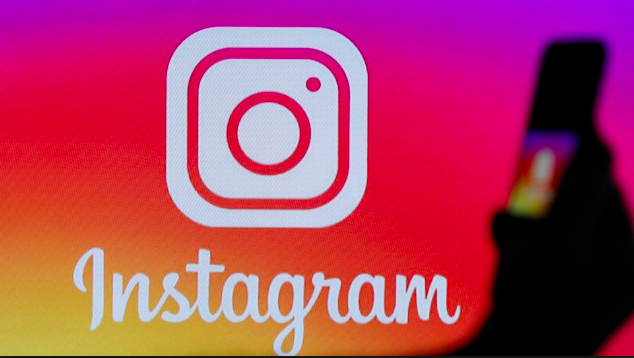
5 Instagram Video Tips That Will Drive You More Traffic
Produce a quick commercial for Instagram use only
Commercials aren't just for TV anymore. After all, social media is TV for many these days (see: IG TV and Facebook Watch) so promotional spots are pretty much expected from brands. Protip: Take advantage of this and go all out on a 60-second video ad with a qualified human.
Shoot an instrutional video with a conversational tone
From making love to making moussaka, it's no secret that the internet can teach you how to do things right. Thanks to beauty gurus like James Charles and foodie gods like Buzzfeed's Tasty, it's hard to scroll without stopping on a DIY-themed clip in 2019. And when you look at the numbers, it's easy to understand why.
According to Hubspot, 91% of smartphone users look to their devices to learn new stuff. Just make sure your instructor-of-choice has an approach that feels authentic—not robotic. "If you want to create a how-to video 'hosted' by a real, live human, make sure they act like a human," Sophia Bernazzani of HubSpot says. Luckily we know a few good humans who can show your host the ropes.
Use Instagram Stories to take care of your KPIs
The magic of Instagram Stories is their ability to dissolve in just 24 hours. If there's any temporary information that can help you drive traffic—like holiday sales, coupon codes or other exclusive treats—simply upload a vibrant vertical video containing the information to your Story and watch the cash roll in. Also, psst—we've got humans for that, too.
Schedule a CTA-packed Instagram Live video
No need for an O'Reilly-style meltdown—Instagram Live is a simple feature to profit from on the platform. As long as you remind your viewers to tune in with a pre-post to the feed, their attention is yours for the taking (and in real time)! How so? IG Live audiences crave an interactive experience so it's your chance to run wild when it comes to CTAs, or calls to action.
Live Q&A sessions tend to work especially well. Try issuing a call for questions before the session so you can hoard your audience's email addresses for the next MailChimp blast. Just remember to ask for their go-ahead first. IG Live also works wonders for new product releases. "If you're able to pique people's curiosity, then they'll likely start following your profile so that they don't miss when the product launches," Stanley Meytin of Social Media Today says.
Give followers a behind-the-scenes look at your work routine
Your Instagram followers are your fans. No, they don't have any musty t-shirts with your face on them stashed in a drawer somewhere, but they're still pretty darn fond of you. Give them what they want with a BTS look at your company when the cameras are typically off. "People tend to buy products from businesses they feel a connection with, and one of the best ways to build such a connection is by offering insight into your company via Instagram Stories," Meytin adds. Do you bake killer cookies? Work with a human to produce a quick mini-doc near the assembly line. High-end fashion your thing? Ask a human to help you shoot your showroom with ease.
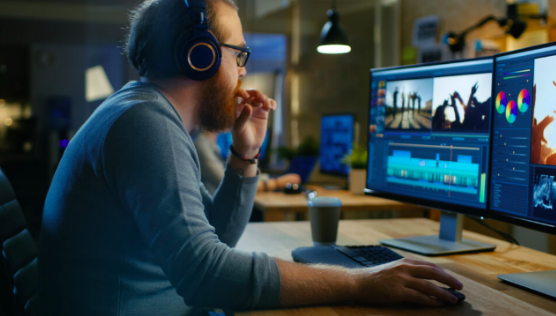
Tips on How to Give Great Notes to Your Editor
- Be Specific
There is probably nothing that annoys an editor more than vague notes. Not only does it make their job a little more difficult, it can result in work that doesn't actually result in what the producer/director wanted. Using terms like "stylized" or "fun" don't mean that much when you are looking at a specific shot in your film. If you change that to you want titles to have a different font or want the contrast or colors to be boosted in this scene it is more helpful to both parties if you just say that up front. Or another example is if you want to make someone's line shorter, but don't specify which words or phrases are more important then the editor is basically just guessing what you want to happen.
- Learn the Lingo and Find Examples
At least try to learn some basic terms like saturation, cut, contrast, etc., there is a lot out there but some basic understandings will help you communicate what you need with your editor. It's similar to traveling to a different country, learning a few key phrases can make it a lot easier to get around. Another related aspect that can help a ton is if you find examples of what you are looking for as this can make the entire communication process more clear, especially if you are asking for a more complicated effect.
Another related tip here is to find examples of editing techniques you like, especially if you lack the lingo to describe them. If you have a clip from a film that is what effect you are going for, the editor should then be able to replicate it with ease. This type of work is also helpful before the editing process even begins, as it helps show what kind of style and tone you want for the piece.
- Pay Attention to Deadlines and the Workflow
Even if you are super busy, make sure to get your notes in to the editor as early as possible, or at least by any predetermined deadlines. The longer you give them to work the better the work will be, simple as that. Also, last minute changes can result in unwanted errors that could've been avoided. Another aspect of this is to give appropriate notes based on the workflow. If this is the earliest rough cut, the editor(s) likely haven't gone through and done any serious mixing or color correction beyond making it watchable. Pointing out obvious things that come later on in the process is simply a waste of both of your time.
- Timecode!
When giving notes, it makes life so much easier if you actually tell the editor where in the clip you want the edit to be changed. And though it is possible to just say something along the lines of, "when so-and-so enters the doorway can you cut sooner," it is better to actually just say when it happens. Check the timecode of the footage and say that you want a change to happen at 3:45, which means at three minutes and 45 seconds. This will dramatically speed up the edits as your editor can just jump right to the moments that need work.
- Prepare your Editor for Ideas/Potential Changes
Editing is a process. They say you make one movie when you shoot it and then another during the edit. So, it is entirely possible that after watching an initial rough cut you may want to make some drastic changes to the tone of the piece. Don't wait until the last second to bring up concerns such as this! Even if you aren't sure, talking it out with the editor or simply making them aware that this is a potential future change will help smooth out the process in the event a lot of work has to be done.
- Consider Potential Limitations
Just because you want more footage of something, it doesn't mean that footage exists. Too often we forget that editors are only working with what they are given, meaning that just because you want something it may not actually be possible to do it. Sometimes its as simple as the footage was never recorded or that a couple takes were out of focus or had unusable sound, so they had to make it work with fewer clips to choose from. Also, not all editors are expecting to do elaborate 3D effects, so if you ask them to cut together a short interview or promo piece, don't go asking for some 3D models unless that was previously determined when you hired them.
- Look Beyond the Technical
A lot of notes relate to things like when to cut, how much of certain footage to include, how to pace this scene, etc. But you also need to pay attention to tone and the feel of the footage. Sometimes an editor may look at some footage and play it back in a way that results in a tone or pacing that is completely opposite the intended effect. This is almost more important than technical glitches, as those are generally easier to fix and less noticeable. What you don't want is an edit that is technically perfect but doesn't convey the same feeling that you wanted.
- Ask Questions and Communicate
Working with an editor is a collaborative process, so if there is anything you don't understand or a scene you think needs some work you should go talk with them about it. Editors are the ones bringing your vision to life and the more input and time you spend working with them the better the end product. If are aren't familiar with some processes or techniques be sure to ask about them, it will be beneficial especially if you decide to work with that editor again so that you both are on the same page. And, if you are thinking about certain looks or styles that you are unsure about, talking it out with an editor about what makes sense can help you develop a better idea of what you want as well as let them better understand what you want to get out of the project.
A final note would be the simple advice of being nice. Video production can quickly become very stressful and being a bit nicer when you communicate with editors and any other crew members can go a long way.
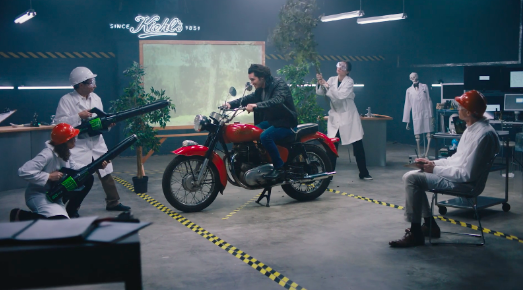
Why Brands Use Funny Video?
KIEHLS | GROOMING SOLUTION
The team at Kiehl's gave this team its creative direction and they helped execute a seven part series where we learn what it really takes to be a man

10 Ways to Capture Cinematic iPhone Footage
With renowned directors like Steven Soderbergh now using iPhones to shoot feature length films, it should be no surprise that the modern smartphone is an incredible tool for shooting video. Here are ten tips that will help you capture movie-theater-ready footage.
- #1 Max Out Your Settings
Hidden away in your iPhone's camera settings are various options for video, namely resolution and frame rate. If you want to record the best you will want to make sure you have 4K selected since this will capture the greatest detail and hold up on the latest displays. Next you should pick a frame rate. If you are one the lucky owners of a flagship iPhone X you will see an option for 24, 30, and 60! fps, and if you are shooting a movie I'm going to have to recommend 24 fps for that classic look. YouTube or television feel free to use 30 fps, however avoid 60 fps unless you need to capture some sweet slow-mo.
- #2 Stabilize
Depending on your phone model, you may or may not have life-saving optical image stabilization. However, even with IS built-in you will see a bit of shake if you attempt to shoot longer takes handheld. This is where stabilizers like DJI's Osmo Mobile 2 work wonders. They will smooth out tracking shots with ease and are seriously impressive, transforming unusable takes into cinematic masterpieces.
- #3 Go Manual to Go Professional
Creating the shot you visualized in your head last night isn't just luck, it requires taking control of all the tools at your disposal. To do this on an iPhone you will have to download a dedicated app that gives you manual controls to the all-important ISO, shutter speed, and focus settings of your iPhone's camera. My personal preference is for the simple Manual app since it works very well and has a clean design. For high-end filmmaking, I would definitely go with FiLMiC Pro, one of the best apps for recording videos ever made. It opens up a ton of settings, including higher bit rates and a log gamma option.
- #4 Record Clean Audio
The hallmark of amateur video is poor audio and bad sound can quickly make a video unwatchable. Luckily, this is easily fixed by simply attaching a microphone to your setup. I would recommend a Rode smartLav+ for interviews and vlogging-style videos or a Rode VideoMic Me for run-and-gun shooting, though if you are looking to capture ambient sound or want something with some more versatility you should look at Rode's iXY Module for stereo sound on par with standalone recorders.
- #5 When in Doubt, Use a Tripod
Handheld shooting has come into vogue in the past decade, partially because it is so easy to capture steady handheld video these days. But we can't forget about using the staple tripod in your video-shooting kit. Having a nice steady shot can change the look and tone of a film, and the precise movements of a fluid head will certainly up your game when it comes to pro-looking footage. Also, tripods tend to slow you down in a good way, requiring deliberate movements that will help you figure out the best way to frame the scene. To use a full-size tripod, you will need to pick up an adapter like this one from Joby, or just go for the GorillaPod for something that will let you mount your iPhone almost anywhere (perfect for setting up a B camera).
- #6 Pick Up Some Lenses
Even with the dual-camera system of the latest smartphones, if you want to create stunning and unique shots you will quickly hit the limitations of "wide" and "telephoto." Some of my favorites would be Macro and Ultra-Wide attachments. Macro allows you to get super close to your subject, be it a plate of delicious food or an extreme close-up of your star actor or actress. This will reveal hidden details and as a side benefit will have a shallower depth of field than your usual shots. Ultra-wides, like the Moment Wide Lens (B&H | Amazon) are completely different with their all-encompassing perspective, and while difficult to master can create stunning landscapes or capture tight interiors that can set the tone for a scene. Telephotos, aka "zooms," are nice as well, making it possible to get tighter framing or shoot more distant subjects.
- #7 Use Lights
Photography, and filmmaking by extension, is writing with light, which means that light is the single most important element of any shot. Making your footage look professional will require some work in the lighting department, even if it just means picking up a pocketable panel such as Aputure's AL-M9 LED Light (B&H | Amazon) to fill in some shadows. This will let you quickly illuminate various subjects and won't weigh you down. Of course, if you want to create the next iPhone-shot feature for Sundance picking up a three-light kit (B&H) is a great start. The next step is figuring out which modifiers to use, with an easy recommendation going to the softbox for flattering, soft light.
- #8 Watch your Edges and Depth of Field
One downside to phone cameras is that they tend to have deep depth of field, meaning that a lot of the scene is in focus. You can certainly use this to your advantage to create shots with many layers to them, giving little hints and details about your characters by simply placing props in the shot behind or in front of them. To do this well you will need to pay attention to everything, and make sure no distracting elements are ruining your shot. If you are craving that cinematic shallow DoF look it is still possible, the easiest is simply to get closer to your subject as the shorter the distance the shallower your depth of field. Also, you can get optional lenses or even an anamorphic adapter to create more cinematic shots.
- #9 Master the Edit
Film sets are filled with highly specialized roles, but if you want to be better at your chosen discipline it will require learning as much as possible about your fellow workers. In my opinion the best way to start getting better at cinematography and story is to watch/try to edit. This will help you make sure you have complete coverage of your scene before you move on and that you can imagine how all the shots will flow together when you are sitting down in the editing suite.
- #10 Learn the Basics
None of these tips will help you make any impact if you don't sit down and learn the basics of filmmaking. This can be done by reading some books, watching YouTube tutorials, or simply sitting down in front of Netflix and studying some classics and some personal favorites. Film school is no longer a requirement with the plethora of resources made available for free on the web, Smartphones are frankly some of the most amazing tools for capturing video today, as they make it possible for anyone to start creating movies at a moment's notice. There is simply no excuse for not making something, so go out there and start shooting!

Five Ways to Create Fabulous Food Photos
Nothing makes me hungrier than checking my Instagram feed for some fresh food photos. Almost immediately you will find an array of mouth-watering images that simply pop off your phone's screen and demand a like. Believe it or not, it isn't hard to take some of these images yourself, or at the very least dramatically improve the quality of the photographs you share to Instagram after you make breakfast, or open up the meal you just had delivered.
- Use a Large, Soft Light
IMO, the best way to improve your photography is to improve your lighting. Luckily, food photography generally follows one simple rule: use a large, soft light source. Don't worry about having your own lights or needing to buy any, because you can get this type of lighting from your apartment window. Not having lights is no longer an excuse for not paying attention to your lighting. Positioning the window to the rear or side of your dish will help add some depth and texture to your image, and if you want to add a bit more technique to your shooting then you should place a small white card or paper on the side opposite your main light source. This will bounce some light into the darkest areas of the image, providing a nice fill to help bring back some detail.
- Pay Attention to the Details
Believe it or not, a crumb can make or break a food photo. When you crack open a magazine or open up your favorite food blog you can be certain that in many of those stunning images every little speck and detail was checked and potentially fixed. For your standard Instagram post this may not be the biggest issue, but if a large crumb or garnish happens to be in the way it can become very distracting. The best way to handle this to to make sure your space is clean before you get started and to have a space to work where you can make a little mess without ruining the work done on the plate or your final shooting destination. Another area to look out for distractions is in your background. Having random utensils laying about or artwork on the wall can throw off the balance of a photograph, and either removing them or repositioning the photo can quickly fix that.
- Use Color!
To grab someone's attention you will want to make sure you have a nice splash of color. Even though your bread experiment is beautiful, putting a brown loaf on a brown cutting board isn't going to be that exciting. If you are serious about your food photos, this is the moment to start building a collection of various napkins and surfaces that you can look through to find a perfect match for the dish you are making. Or, this is the time to find a garnish that adds just enough pop to your photo. Making raspberry cupcakes? Throw a couple fresh raspberries onto the place. Having a salad? Use some fresh greens and have a nice variety with tomatoes or some fruit.
- Know your Angles, Get Close, and Try Shooting Overhead
I like to stick to two basic camera positions, overhead or at an angle positioned just slightly above the dish. Or, when I want to mix things up I'll get in really close with a macro lens and capture the exceptionally tiny details. Angles are super important, and if you are shooting at something that is just a little off, it is really easy to tell. Don't go too high, and don't go too low, keep it around eye level or something that feels a bit more natural, like you may see if you walk by a bakery window or see it on an adjacent table. Sometimes the angles are tough, and that's when I like to rely on overhead as it is somehow a wonderful choice for nearly any dish, it is honestly kind of miraculous just how well shooting from straight above works. And finally, you can't keep the same exact compositions throughout your portfolio or even for the same item every time just because it works, this is when getting in tight can be perfect for mixing things up.
- Keep it Simple
Of course this is a tip since it applies to practically everything in life. Simplicity makes things easier on you while you work and can help improve your images. If you want to shoot a salad, don't overcrowd with multiple types of nuts and clashing colors of fruit, create a cohesive meal and you will find it much easier to get a composition that works. Don't create a rainbow of napkins in the background either. Basically, keep to the essentials and only add when it will truly improve the image.
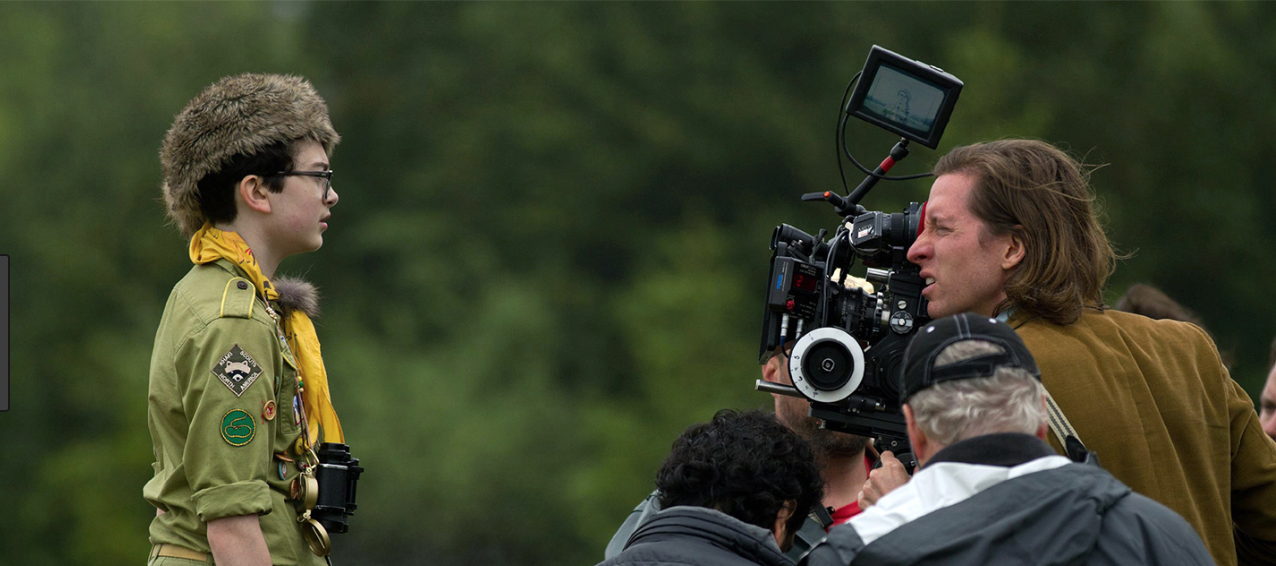
What is an Auteur?
Auteur Theory Explained
To put it simply, an auteur is a director or filmmaker whose distinct style and approach to the filmmaking process is so influential in their work that they are regarded as the author of the film. A familiar contemporary example would be Wes Anderson, who has created a look with limited color palettes, central framing, and wonderfully crafted (and heavily controlled) sets that create their own world for the film. Essentially, when you see a Wes Anderson film, you know it is a Wes Andersen film. This level of authorship over a film is what makes an auteur.
Interestingly, many directors who are considered auteurs will create art with a similar style no matter who they end up working with. This is what separates them from your more conventional filmmaking processes. Now, it would be foolish to consider the director the sole author of any film, since filmmaking is such a collaborative process. For a film to really come together you need to have great acting, a knowledgeable crew, and an editor who can put it all together. Oh yea, and someone needs to author the script.
It is a bit weird that the screenwriter isn't generally considered to be the author of the film, though I will say many auteurs do play an active role in the actual writing of the script. The easiest way to explain this is that the screenplay is merely a first draft of a film. It takes the director, actors and crew to transform the pages into a film worthy performance. Then it requires the editor to piece together a final story based on both what the director and crew delivered and what was written in the original pages. Unsurprisingly, however, many directors who are considered auteurs do have co-writing credits for their films.
Considering the main idea of auteur theory that a director can impose a unique vision across all aspects of a film so much so that he becomes the so-called "author" of a film, there are certainly many directors we can call auteurs. Classic directors like Alfred Hitchcock and Charlie Chaplin are obvious, as are more modern picks like Quentin Tarantino and even Christopher Nolan. However, if we are discussing the topic we must address the obvious criticisms it as well.
Primarily, it is that in some cases the most obvious influence on the film comes from another individual. Charlie Kaufman is a great example, as he is a well known screenwriter who if you read a list of his films (Adaptation, Being John Malkovich, Synecdoche, New York, etc.) you would obviously consider that he is the main influence over the work. Consistently Kaufman is nominated for best screenplay awards, and he explores similar themes throughout all his work which can be seen even though different directors have handled various films of his.
Screenwriters are an obvious choice when it comes to who is the real author of a film, though there are examples of other crew members influencing a work. Take Emmanuel Lubezski who has left his stamp on filmmaking history with his three consecutive wins for the Academy Award for Best Cinematography. And he did that on films from two different directors. Lubezski's work is distinct for having long single shot takes (oners), using natural lighting, and fluid camera movements. An exaggerated example of this would be Iñárritu's Birdman, which was shot and edited to look like a single take while films like Cuarón's Gravity and Malick's The Tree of Life maintain a very similar aesthetic, making it clear that Lubezski is truly the one with control over the visual aspects of the film.
To sum things up, an auteur is a director who imposes a distinct vision and style over his film to the extent that he is considered the distinct "author" of the work. However, with many different individuals working on a film, it is important to consider others who may have strongly influenced the movie as a whole and not always attribute a film solely to the director as all films are a collaborative process.
What other members of a film production do you think have a large impact on the final product? Be sure to let us know and follow along here for more tips and tricks.
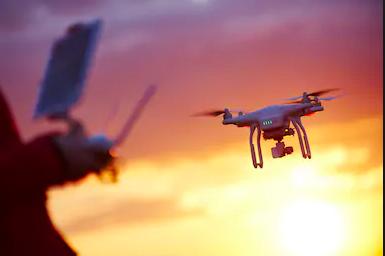
Safety Tips For Filming With Drones
Becoming a remote pilot can be as easy as buying a drone and flying it up and over the woods behind your house. It can also be one of the more dangerous aspects of a film shoot, as drones can can injury and even cause accidents if improperly used. Here is a checklist of things to think about before you take off.
- Commercial Use? Get FAA Certified
One important facet of drone operation in the US is that if you plan on using a drone for commercial applications (aka you are making money from it), you will need to get FAA certified. Don't worry, this is a relatively straightforward process as all you have to do is study for and take the sUAS test about basic drone operation and flight rules. Doing so results in an official registration and ID card from the FAA, and if you are studying properly you will learn about about flying and the various rules related to drone flight. Some of it is actually quite interesting too.
- Understand No-Fly Zones
This is super important for any safe flight. Respecting no-fly zones also keeps you and your crew out of hot water. A lot of this is common sense, like don't fly next to an airport. There may also be some lesser known things, especially if you travel. For example, Washington, D.C. is a no-fly zone all over, for the obvious national security reason. Many state parks now require pre-approval for flights too. Look up all the laws and rules instituted where you plan on working before attempting a flight. An extra precaution to take is to use one of a number of smartphone apps to make sure it is safe to fly before taking off, though be aware they may not be 100% accurate. Another thing to know is that the general height limit for drone operation is ~400 feet.
- Visually Inspect the Drone
So you got certified and now you are in an area where it is safe to fly. Good luck! But actually here is one of the most important and easily overlooked steps: inspect the drone. Look over the drone and make sure all the cables and wiring looks good, the battery is securely fastened, and the propellers are clean and undamaged. Any problems here can be huge problems when the drone is in the air, and then you may not be able to do anything to prevent an accident.
- Batteries Charged and Memory Cards Empty
Now it's time for your actual flight prep. Basically, charge your batteries and use fresh memory cards. Current drone models will only get about 20-25 minutes of flight time on a single battery, which is much less actual shooting time than you would think. Connecting to the drone burns battery. Testing out the camera prior to launch burns battery. Everything burns battery. And there is no way you are going to be flying until the battery is down to 1% anyway for pure safety reasons. Along the same lines as being charged up is to make sure your memory cards are ready for use. It's the worst feeling in the world to line up that perfect composition just as the light perfectly hits the scene and then getting the "memory card is full" message when you tap record.
- Program Return to Home and Other Safety Functions
Read your drone's manual and make sure all the safety functions are set up and functioning properly. Things like return to home or distance limiters may need to be programmed. The last thing you want is to hit RTH in an emergency and have the drone shoot off in an unexpected direction. Many drones also have options for max speed, max height, max distance, etc. and it is well worth looking into these things.
- Check Weather Reports
If you take the FAA tests you will actually learn how to read METAR reports that tell you very exacting information about the weather and even tells you differences at different altitudes. Fortunately most drone flights take place far below the most dramatic shifts in weather. However, knowing whether it is windy or going to thunderstorm in the next hour can help. Weather can dramatically impact how your drone handles.
- Realize you may Lose the Drone
Every flight is different and this is still developing technology. Mentally prepare yourself for the fact that the drone may not come back in one piece, if at all. You might have to swerve to avoid a pedestrian who came out of nowhere, or for some reason the wireless connection just cut out and the drone is now flying directly out over the ocean. Accidents do happen, and in some cases you may have to make a choice between saving your drone or risking injury to an individual, always choose the option that keeps people unharmed.
The key to any good flight is safety. Going through this checklist is just one more precaution that will keep you and others as safe as possible. Another aspect of this is that drone accidents are heavily covered and reported, which can quickly and easily result in ever more restrictions. Safety is good for the industry as well. Is there anything you think we missed? Need recommendations on what drone to get? Please let us know what's on your mind and stay tuned here for more informative articles.

Essential Shot Types
Let's set the scene. It's a dark summer night, the main character is sitting by themselves on the
porch of a house, and the shot is wide enough that you can see a couple empty chairs by his or
her side. The character also only takes up a small portion of the scene. Without realizing it, the
types of shots the cinematographer choose have ensnared you, making you feel the same
loneliness as the main character, without even needing to explain exactly what is going on. That
is the beauty of the language of film and if you learn to master it yourself you can create
masterpieces of your own. While certainly not a master list of every shot type and term, here are
a few that you can easily make use of to inject a bit more feeling into your film.
Dutch Angle/Tilt
You all know this shot, where the camera is positioned at an angle and the horizon is no longer
perfectly level. This one is quick and easy to understand, though arguably it can quickly become
overused. Basically, by positioning the camera at such an angle, you can create a sense of
disorientation or uneasiness. The effect can also be amplified and reduced by how exaggerated
a position is used. One interesting way to do it is to use it incredibly subtly, resulting in the
viewer not necessarily identifying exactly what is wrong, but still have a feeling in the back of
their mind that something is not quite right.
Extreme Long/Wide Shot
A common choice for establishing the entire scene, an extreme long or wide shot will help place
your character in their location and can easily show their relationship to the things and area
around them. If you were to make your character very small and position them next to a very
large building, you could show that they are an insignificant part of the movie's world or that they
are taking on an incredibly menacing and towering figure.
Medium Shot
If you want to focus the scene on an individual, the medium shot is the way to go. It draws you
into the details of a single character by framing them from the waist up. By including a little more
of the person's body you can better display nuances in body language that can help convey
levels of comfort, uneasiness, calm, and much more.
Over-the-Shoulder
Conversation scenes make liberal use of this technique, and through careful placement of your
characters and camera, you can quickly add or remove space between the characters involved.
By making the characters seem close together you will make them seem for connection, while
doing the opposite can show an emotional distance between them. Incorporating movement can
dramatically improve the feeling of the scene as well as you can reposition the camera
throughout the conversation to show if the characters are becoming closer or more distant with
one another. The over-the-shoulder shot is never as simple as it seems.
Close-Ups
Are you ready for your close-up and all the variations? Let's go to the extreme end first,
depending on the action of the scene, ultra close-up shots can either draw you into the emotions
your character is feeling or invoke a sense of claustrophobia. By removing any space from the
edges of the frame you don't give the audience anywhere to go and focus them like a laser on
specific details or the performance of your actor. Standard close-ups can do the same, but
generally won't produce as powerful an effect.
Full Shot
By simply filling the frame with the character's entire body you can change from a very personal
or emotional feel to something that draws attention to the action of the scene. Full shots are
extremely useful if you need to start showing movement in an easy-to-understand manner, and
it is important to note that they aren't necessarily the best for conveying specific emotions.
Camera Movements
All these shots on their own can't complete the effect, and I would recommend using camera
movements to emphasize the effect or to transition between one shot to another. If you slowly
begin to tilt from a straight shot to a Dutch angle mid take then you can show a character
becoming off-balance, and you can simply reverse this movement for the opposite effect. If you
take an over-the-shoulder and perform a zoom out that increases the distance on screen
between two characters this will show the audience how emotionally they are becoming less
and less connected.
This is simply a basic understanding of some key shot types and how you can use them in your
productions. Also, pay attention to how transitions and shots work together in the edit, it will
elevate your final film. Let us know your favorite shot types and any we skipped here, and stay
tuned here for more tips and tricks for photography.

Working with Editors
Editing and editors can be intimidating. I get it, and I'm certainly no stranger to the NLE world and have plenty of close friends who do it for a living. If you are completely new to the video editing process, the idea of giving notes can be overwhelming. Here's a quick guide that will help you give more effective notes and have a better understanding of video editing as a whole.
- Be Specific
There is probably nothing that annoys an editor more than vague notes. Not only does it make their job a little more difficult, it can result in work that doesn't actually result in what the producer/director wanted. Using terms like "stylized" or "fun" don't mean that much when you are looking at a specific shot in your film. If you change that to you want titles to have a different font or want the contrast or colors to be boosted in this scene it is more helpful to both parties if you just say that up front. Or another example is if you want to make someone's line shorter, but don't specify which words or phrases are more important then the editor is basically just guessing what you want to happen.
- Learn the Lingo and Find Examples
At least try to learn some basic terms like saturation, cut, contrast, etc., there is a lot out there but some basic understandings will help you communicate what you need with your editor. It's similar to traveling to a different country, learning a few key phrases can make it a lot easier to get around. Another related aspect that can help a ton is if you find examples of what you are looking for as this can make the entire communication process more clear, especially if you are asking for a more complicated effect.
Another related tip here is to find examples of editing techniques you like, especially if you lack the lingo to describe them. If you have a clip from a film that is what effect you are going for, the editor should then be able to replicate it with ease. This type of work is also helpful before the editing process even begins, as it helps show what kind of style and tone you want for the piece.
- Pay Attention to Deadlines and the Workflow
Even if you are super busy, make sure to get your notes in to the editor as early as possible, or at least by any predetermined deadlines. The longer you give them to work the better the work will be, simple as that. Also, last minute changes can result in unwanted errors that could've been avoided. Another aspect of this is to give appropriate notes based on the workflow. If this is the earliest rough cut, the editor(s) likely haven't gone through and done any serious mixing or color correction beyond making it watchable. Pointing out obvious things that come later on in the process is simply a waste of both of your time.
- Timecode !!!
When giving notes, it makes life so much easier if you actually tell the editor where in the clip you want the edit to be changed. And though it is possible to just say something along the lines of, "when so-and-so enters the doorway can you cut sooner," it is better to actually just say when it happens. Check the timecode of the footage and say that you want a change to happen at 3:45, which means at three minutes and 45 seconds. This will dramatically speed up the edits as your editor can just jump right to the moments that need work.
- Prepare your Editor for Ideas/Potential Changes
Editing is a process. They say you make one movie when you shoot it and then another during the edit. So, it is entirely possible that after watching an initial rough cut you may want to make some drastic changes to the tone of the piece. Don't wait until the last second to bring up concerns such as this! Even if you aren't sure, talking it out with the editor or simply making them aware that this is a potential future change will help smooth out the process in the event a lot of work has to be done.
- Consider Potential Limitations
Just because you want more footage of something, it doesn't mean that footage exists. Too often we forget that editors are only working with what they are given, meaning that just because you want something it may not actually be possible to do it. Sometimes its as simple as the footage was never recorded or that a couple takes were out of focus or had unusable sound, so they had to make it work with fewer clips to choose from. Also, not all editors are expecting to do elaborate 3D effects, so if you ask them to cut together a short interview or promo piece, don't go asking for some 3D models unless that was previously determined when you hired them.
- Look Beyond the Technical
A lot of notes relate to things like when to cut, how much of certain footage to include, how to pace this scene, etc. But you also need to pay attention to tone and the feel of the footage. Sometimes an editor may look at some footage and play it back in a way that results in a tone or pacing that is completely opposite the intended effect. This is almost more important than technical glitches, as those are generally easier to fix and less noticeable. What you don't want is an edit that is technically perfect but doesn't convey the same feeling that you wanted.
- Ask Questions and Communicate
Working with an editor is a collaborative process, so if there is anything you don't understand or a scene you think needs some work you should go talk with them about it. Editors are the ones bringing your vision to life and the more input and time you spend working with them the better the end product. If are aren't familiar with some processes or techniques be sure to ask about them, it will be beneficial especially if you decide to work with that editor again so that you both are on the same page. And, if you are thinking about certain looks or styles that you are unsure about, talking it out with an editor about what makes sense can help you develop a better idea of what you want as well as let them better understand what you want to get out of the project.
A final note would be the simple advice of being nice. Video production can quickly become very stressful and being a bit nicer when you communicate with editors and any other crew members can go a long way.
Do you have any of your own tips for working with editors? Make sure to let us know and be sure to follow here for more movie-making tips.
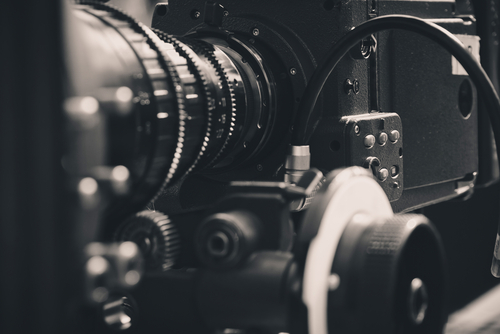
Let's Talk Audio, The Essentials for the Indie Filmmaker
Even if you are working with the most talented director of photographer in the world, think Emmanuel Lubezki or Rodger Deakins, your film will not succeed without skilled handling of audio and sound design. Working with small crews, it is absolutely critical that you respect the needs of your audio men and women, and if you are a one-man band, make sure you put as much effort into recording clean audio as you do the beautiful footage. Let's get started with some of the basic knowledge you will need for recording sound.
Before we even get started, if you know nothing about audio and have the time and resources to hire/recruit a dedicated audio person, do it. Even if you know a ton, if you are directing or holding another critical position on set you will want to leave this crucial task to someone focused on the job, much like how you have a director of photography for images you will want someone in charge of sound. Now that that is over with, we can begin with some basic equipment you may be looking at for your kit.
Equipment
Among the easiest ways to improve audio quality is to pick up a dedicated recorder, because let's be honest, most in-camera recording is absolutely terrible. A Zoom H5 is a simple way to take control of your on-location sound recording as it gives you control over levels and offers its own higher-quality mics recording to uncompressed audio formats. Another advantage here is that it has XLR inputs, allowing the use of professional-quality microphones.
There are two basic mic choices for filmmakers: shotguns and lavaliers. Most people are familiar with these to some extent, as shotguns are the directional mics found at the end of lengthy boom poles or mounted to the top of a camera and lavaliers are the tiny mics hooked up to the lapels of news anchors. Luckily, choosing between the two is straightforward: shotguns are useful for situations where lavaliers would look out of place, for capturing sounds or voices without picking up any background noise, or for recording sound from a distance; lavaliers are great for recording audio from someone who is able to wear a pack or doesn't necessarily need to hide their mic for the shot/may be in a situation where a boom mic is unwanted or unfeasible, think a bride and groom at a wedding.
If you are running the show on your own, I would say the easiest choices are going to be lavaliers which can be sync'd up later and an on-camera shotgun mic that can be plugged directly into your camera. Rode is famous in this arena for the line of VideoMics, and they are a great place to start if you are looking now. For lavaliers you can go with wireless options, though if you are just starting out a reliable recorder like the Tascam DR-10L is extremely helpful. Another option, and a personal favorite is the Zoom F1 Recorder because it can function as a standalone audio recorder, an on-camera shotgun, or a belt pack recorder for a lavalier depending on the situation at hand.
Obviously, there is a lot more gear you can pick up in the audio world, but if you can learn to master these first you can easily grow your kit later on. Though, if you are going with an on-camera mic option a nice windscreen can work wonders.
Recording Tips
Watching your levels is among the most important steps, and for this it is best practice to keep the peaks between -6 to -12 dB. If you are constantly running higher than this you run the risk of distortion if anything breaks 0 dB and if you are lower than this you may have to push significantly in post which may reveal noise. Then, to make sure you then have the best overall quality make sure you set your recorder to WAV with a minimum of 48kHz and 16-bit.
Many recorders have functions that will help capture cleaner audio at the start, such as a limiter or low-cut filters. Starting with these two can help filmmakers out, as a limiter can help prevent distortion if something happens to momentarily clip because its too loud and a low-cut filter can be set to remove low-frequency tones, like those from a fridge or air conditioner in the background. These aren't without their downsides, however, so caution is always needed, as a limiter can introduce its own noise and a low-cut filter can result in thinner sounds if the person has a deep voice. There is no such thing as a free lunch, even if some come close, like dual recording which records simultaneously at two different gain settings so you don't accidentally ruin all your audio if volumes change drastically mid recording or you simply happen to have a setting wrong.
This next tip is arguably the most important one: buy good headphones and make sure you are monitoring in real time. Absolutely critical to audio capture is making sure you are actually recording usable sound. You wouldn't record a shot without paying attention to or reviewing the footage on a screen, so don't record sound without listening to it. There isn't even a need to get the latest and greatest set of cans, just something good enough that you can hear when that truck blew its horn in the background or when the actor brushed against their mic in the middle of a line. Some good picks are the Sony MDR-7506 and Audio-Technica ATH-M40x, both of which are very affordable and worth every penny.
And, this one is to make sure your editor doesn't pull their hair out: use a slate/clapboard/some indicator to help with syncing audio and video. I've actually shot footage without an indicator and my editor was not happy. We are still friends, but he definitely was annoyed when he was putting together the initial edit. Make everyone's life a little easier and properly note and slate your takes so that the syncing procedure can be as seamless as possible. Especially since nowadays you can rely on software to perform syncing for you, the better you handle it the more likely these systems will work.
Audio can make or break a film or short video because since many people will actually put up with lower quality video, bad sound will result in people turning it off. Make sure to let us know any questions you may have for recording sound for video productions and stay tuned here for the latest news and tips on filmmaking!

Essential Shot Types and The Emotions they Evoke
Let's set the scene. It's a dark summer night, the main character is sitting by themselves on the porch of a house, and the shot is wide enough that you can see a couple empty chairs by his or her side. The character also only takes up a small portion of the scene. Without realizing it, the types of shots the cinematographer choose have ensnared you, making you feel the same loneliness as the main character, without even needing to explain exactly what is going on. That is the beauty of the language of film and if you learn to master it yourself you can create masterpieces of your own. While certainly not a master list of every shot type and term, here are a few that you can easily make use of to inject a bit more feeling into your film.
Dutch Angle/Tilt
You all know this shot, where the camera is positioned at an angle and the horizon is no longer perfectly level. This one is quick and easy to understand, though arguably it can quickly become overused. Basically, by positioning the camera at such an angle, you can create a sense of disorientation or uneasiness. The effect can also be amplified and reduced by how exaggerated a position is used. One interesting way to do it is to use it incredibly subtly, resulting in the viewer not necessarily identifying exactly what is wrong, but still have a feeling in the back of their mind that something is not quite right.
Extreme Long/Wide Shot
A common choice for establishing the entire scene, an extreme long or wide shot will help place your character in their location and can easily show their relationship to the things and area around them. If you were to make your character very small and position them next to a very large building, you could show that they are an insignificant part of the movie's world or that they are taking on an incredibly menacing and towering figure.
Medium Shot
If you want to focus the scene on an individual, the medium shot is the way to go. It draws you into the details of a single character by framing them from the waist up. By including a little more of the person's body you can better display nuances in body language that can help convey levels of comfort, uneasiness, calm, and much more.
Over-the-Shoulder
Conversation scenes make liberal use of this technique, and through careful placement of your characters and camera, you can quickly add or remove space between the characters involved. By making the characters seem close together you will make them seem for connection, while doing the opposite can show an emotional distance between them. Incorporating movement can dramatically improve the feeling of the scene as well as you can reposition the camera throughout the conversation to show if the characters are becoming closer or more distant with one another. The over-the-shoulder shot is never as simple as it seems.
Close-Ups
Are you ready for your close-up and all the variations? Let's go to the extreme end first, depending on the action of the scene, ultra close-up shots can either draw you into the emotions your character is feeling or invoke a sense of claustrophobia. By removing any space from the edges of the frame you don't give the audience anywhere to go and focus them like a laser on specific details or the performance of your actor. Standard close-ups can do the same, but generally won't produce as powerful an effect.
Full Shot
By simply filling the frame with the character's entire body you can change from a very personal or emotional feel to something that draws attention to the action of the scene. Full shots are extremely useful if you need to start showing movement in an easy-to-understand manner, and it is important to note that they aren't necessarily the best for conveying specific emotions.
Camera Movements
All these shots on their own can't complete the effect, and I would recommend using camera movements to emphasize the effect or to transition between one shot to another. If you slowly begin to tilt from a straight shot to a Dutch angle mid take then you can show a character becoming off-balance, and you can simply reverse this movement for the opposite effect. If you take an over-the-shoulder and perform a zoom out that increases the distance on screen between two characters this will show the audience how emotionally they are becoming less and less connected.
This is simply a basic understanding of some key shot types and how you can use them in your productions. Also, pay attention to how transitions and shots work together in the edit, it will elevate your final film. Let us know your favorite shot types and any we skipped here, and stay tuned here for more tips and tricks for photography.


design charge for voiceover screencast video per minute
Source: https://www.creativehumans.com/blog/how-much-animation-cost
Posted by: aherncapsery.blogspot.com

0 Response to "design charge for voiceover screencast video per minute"
Post a Comment